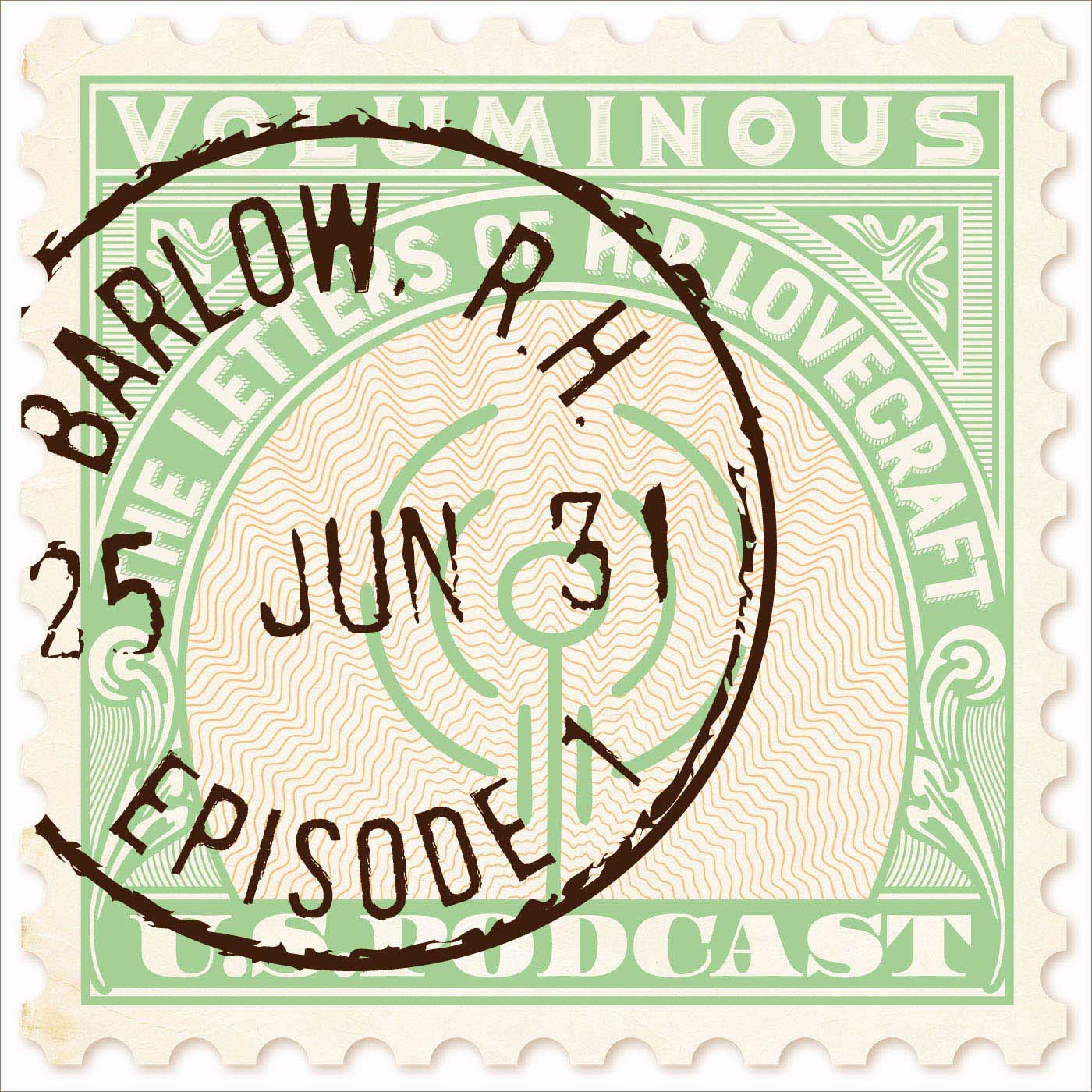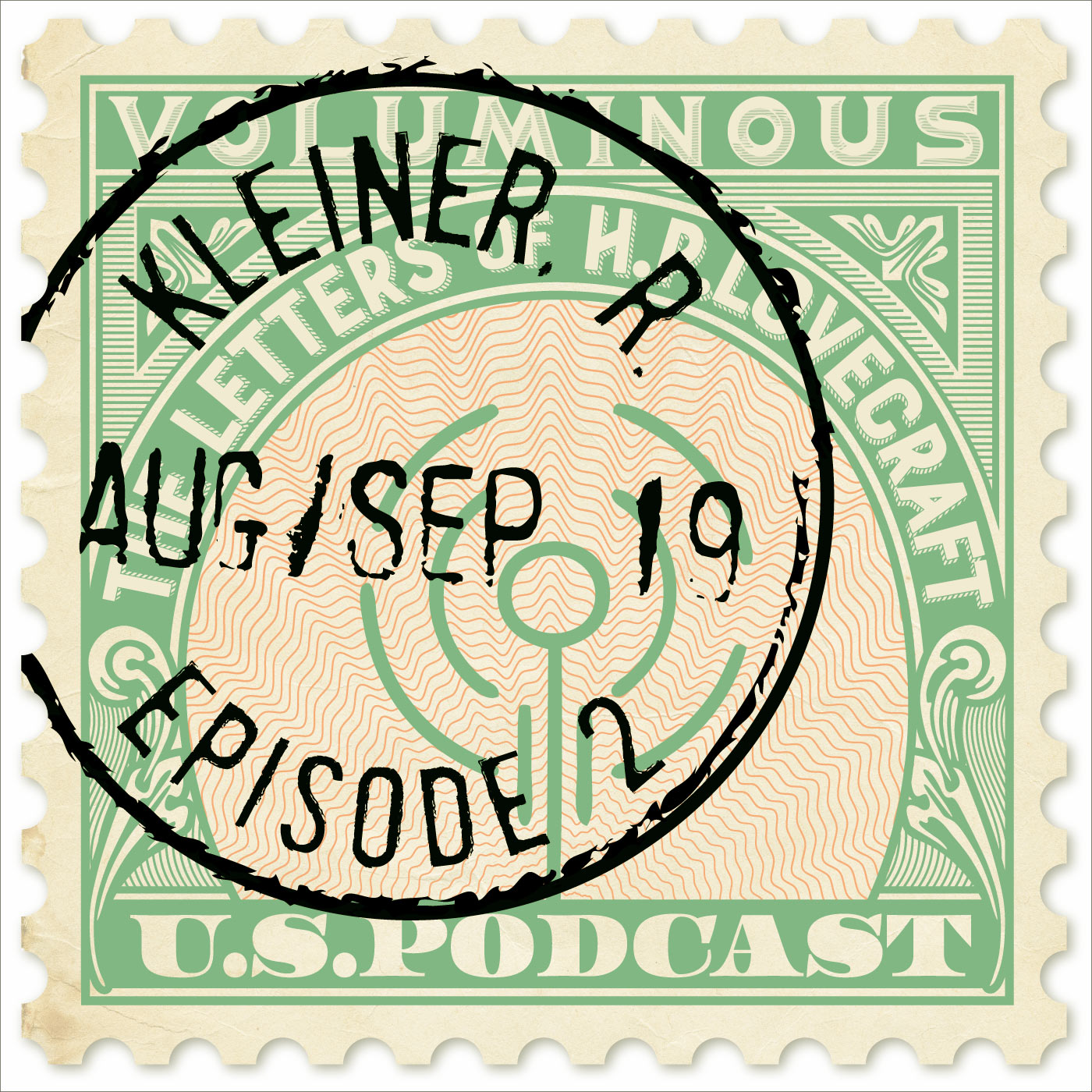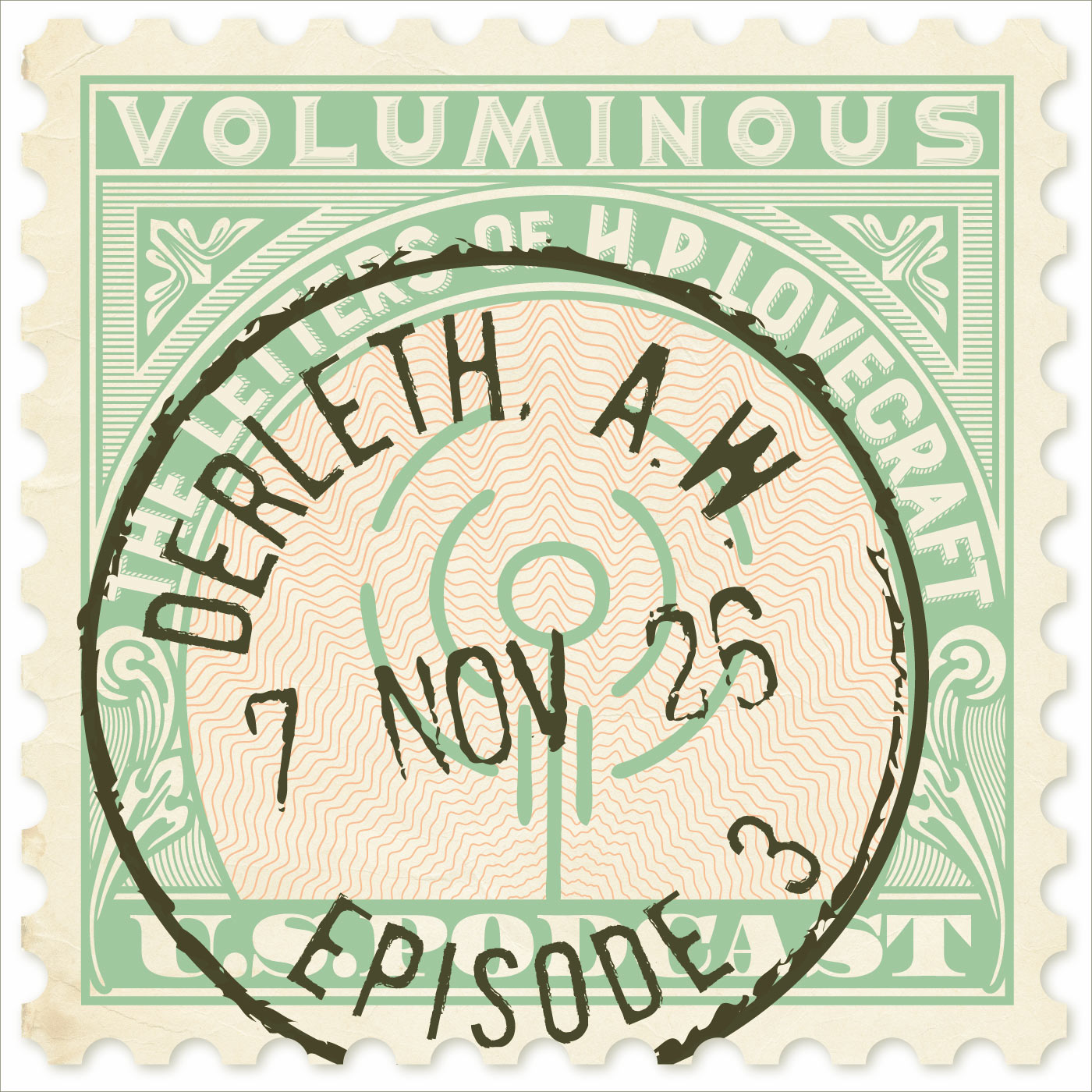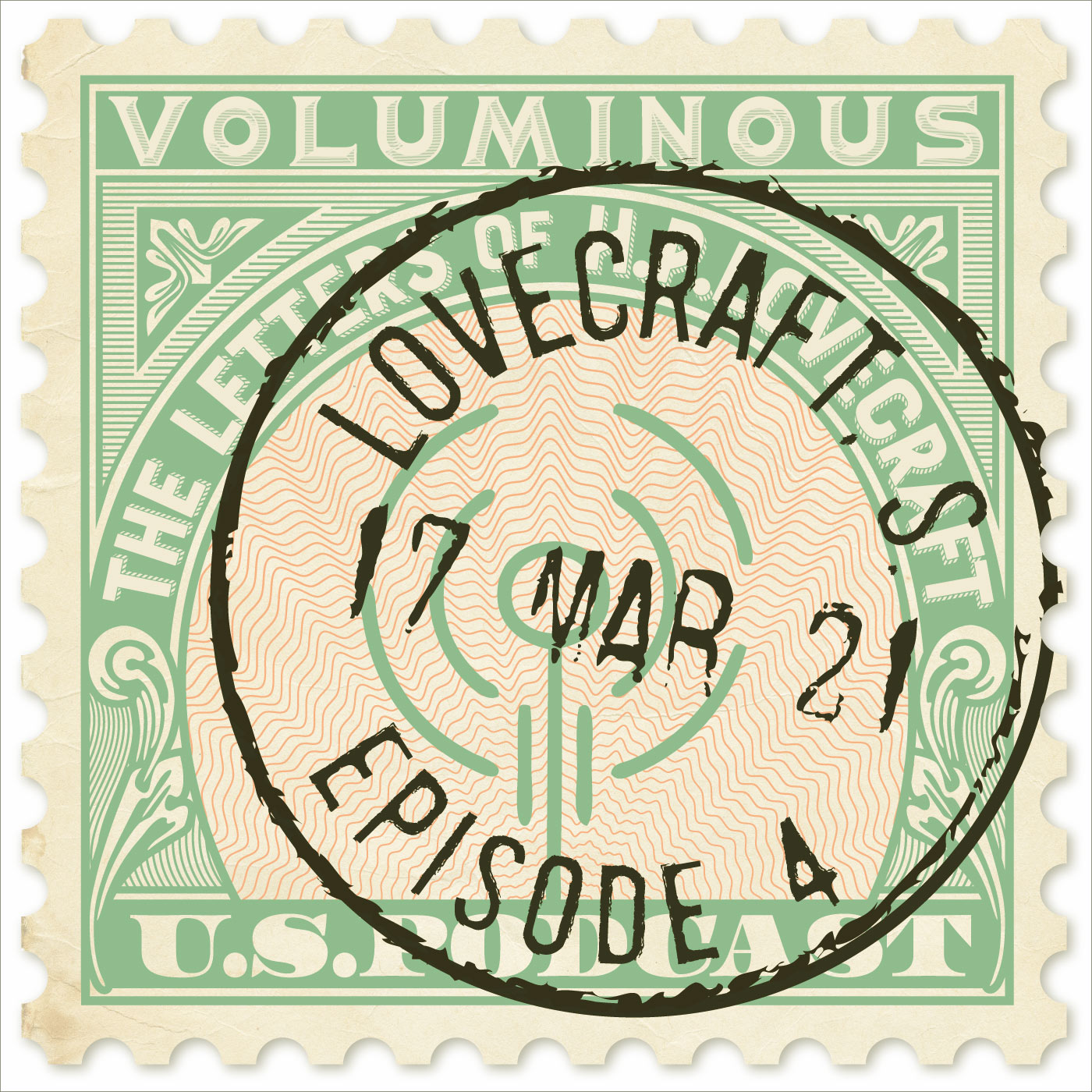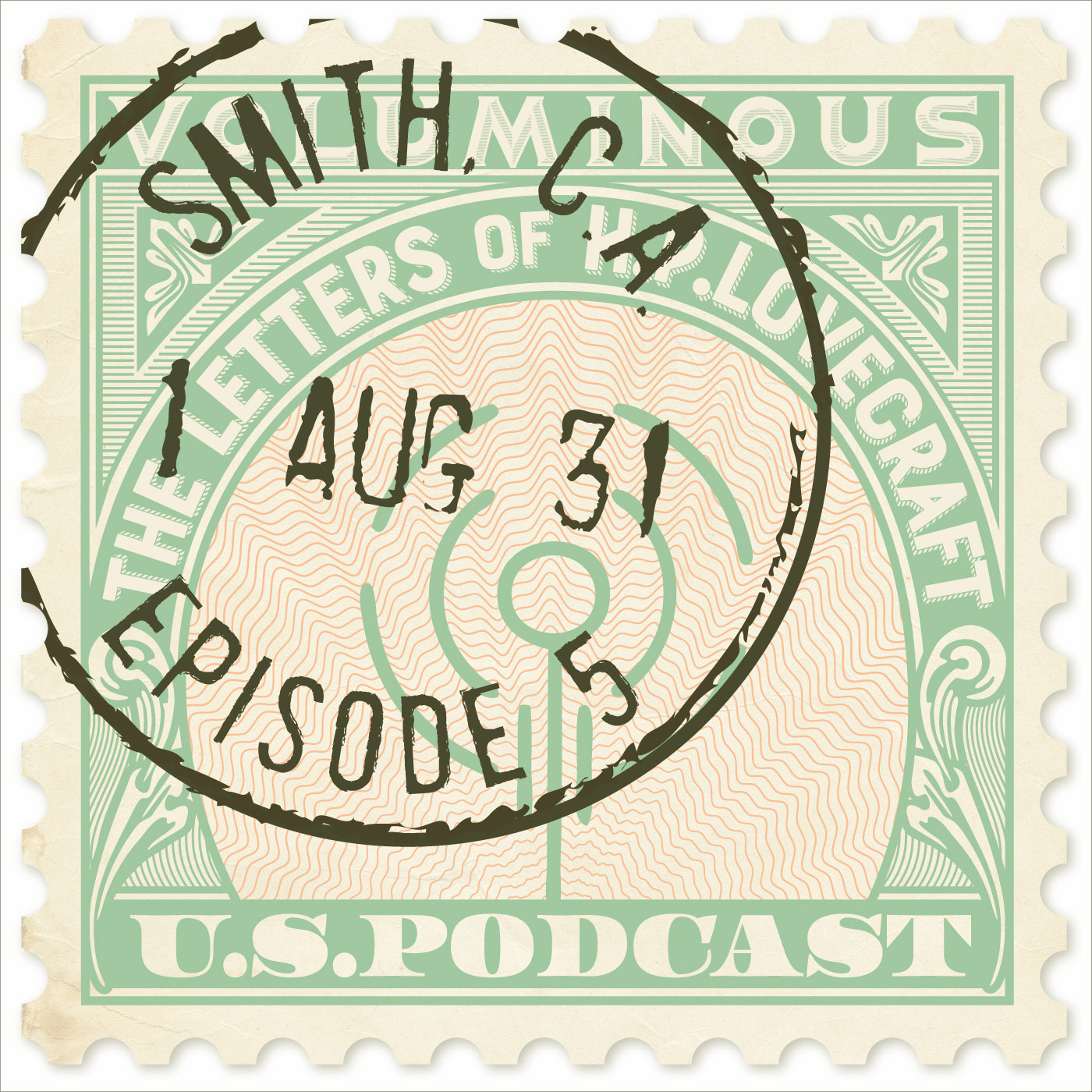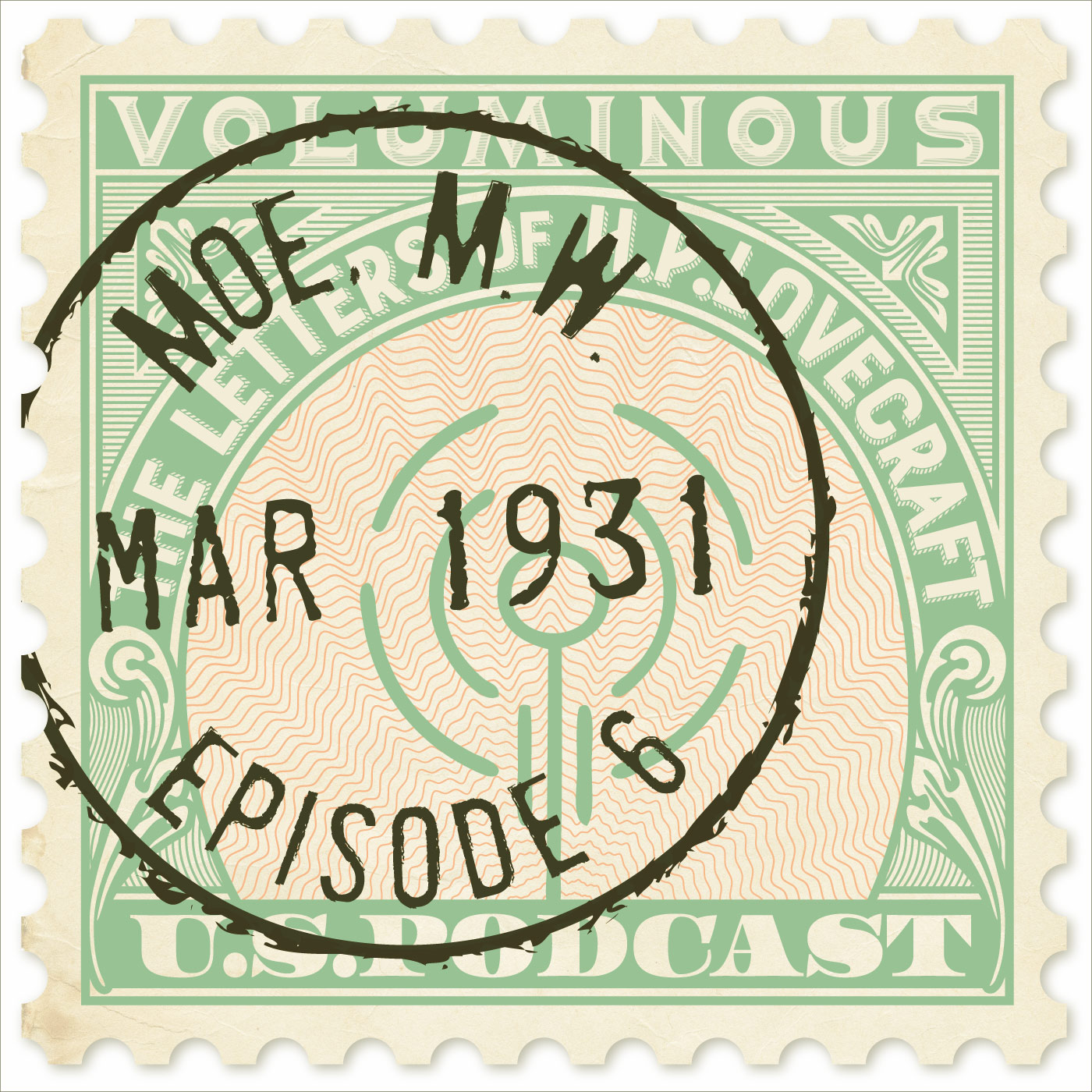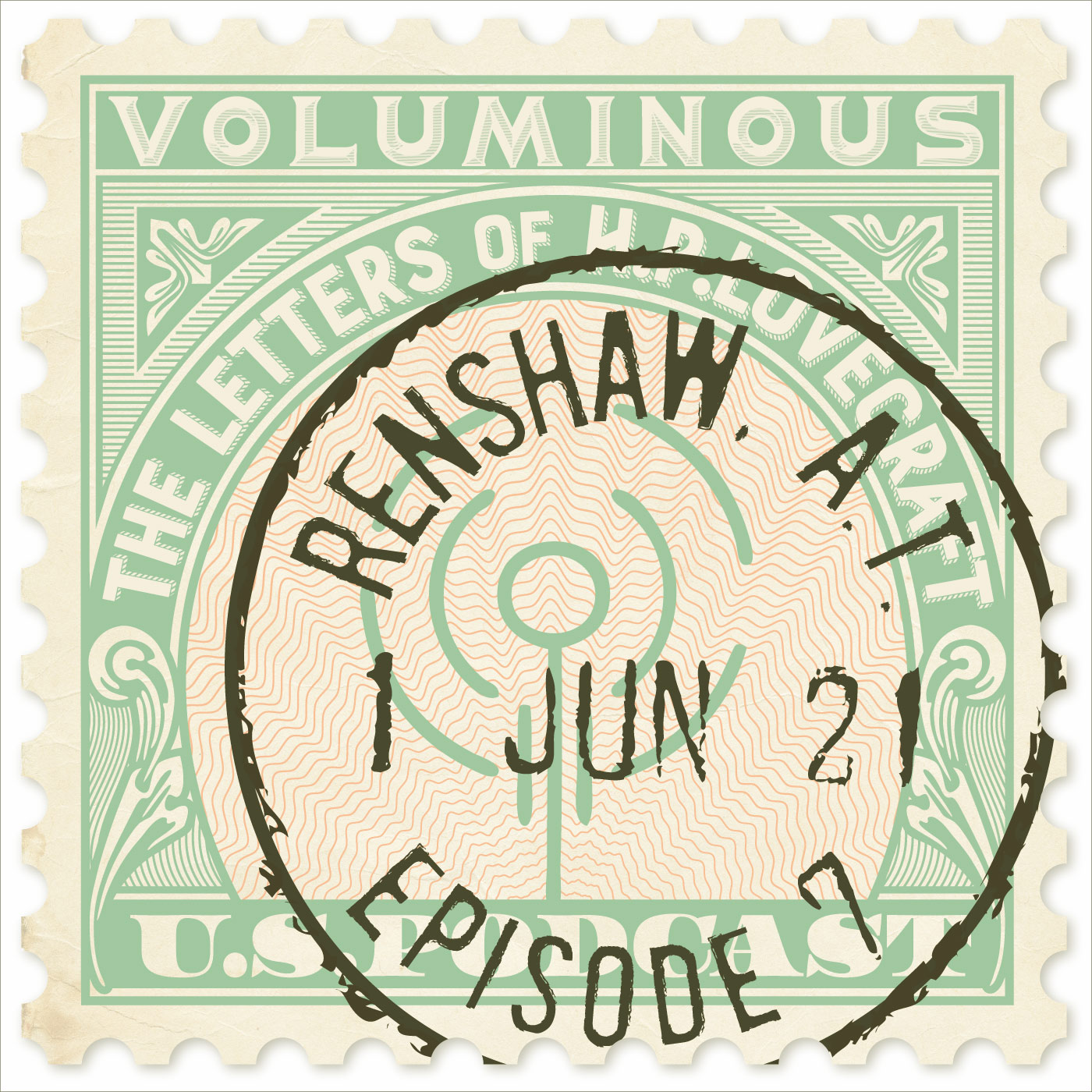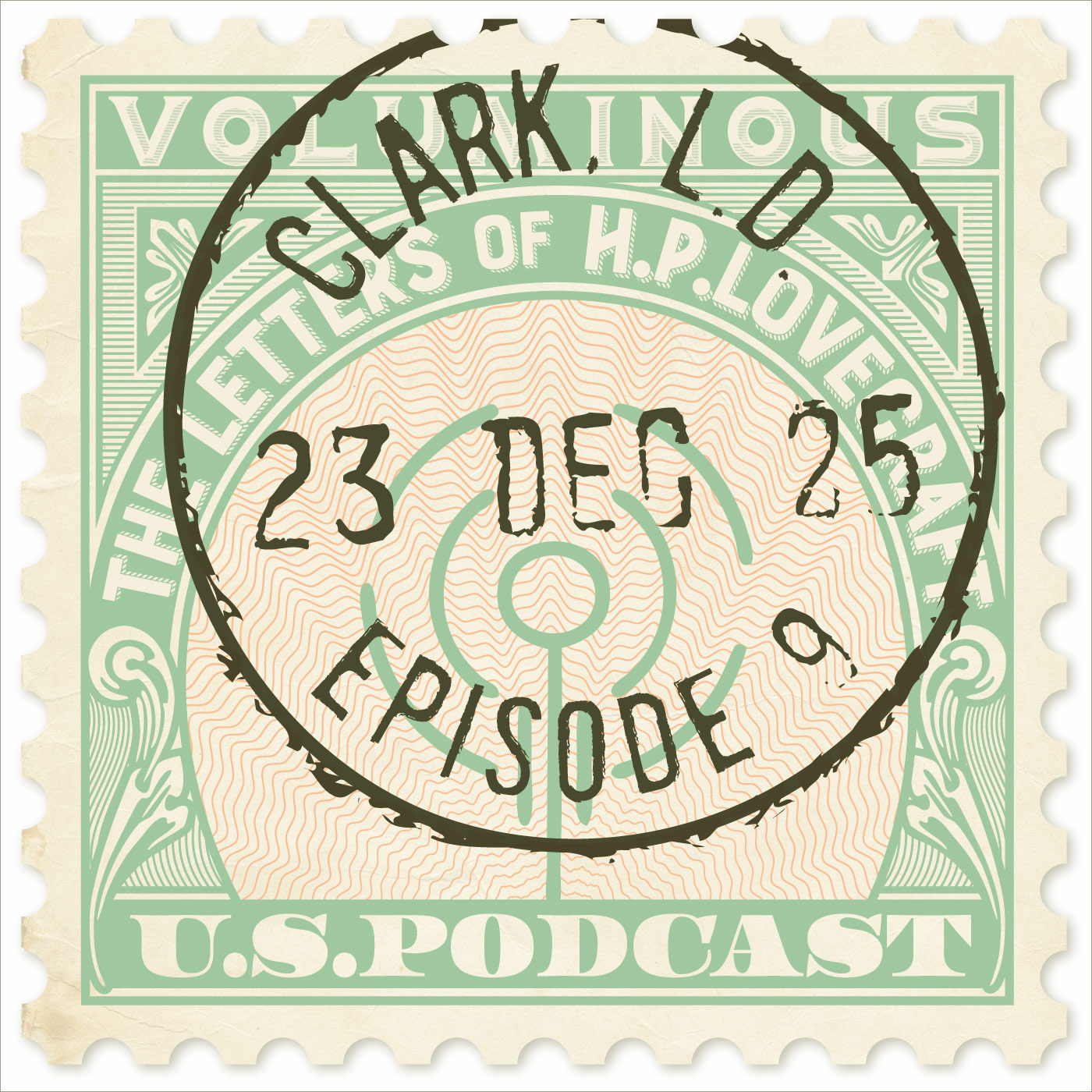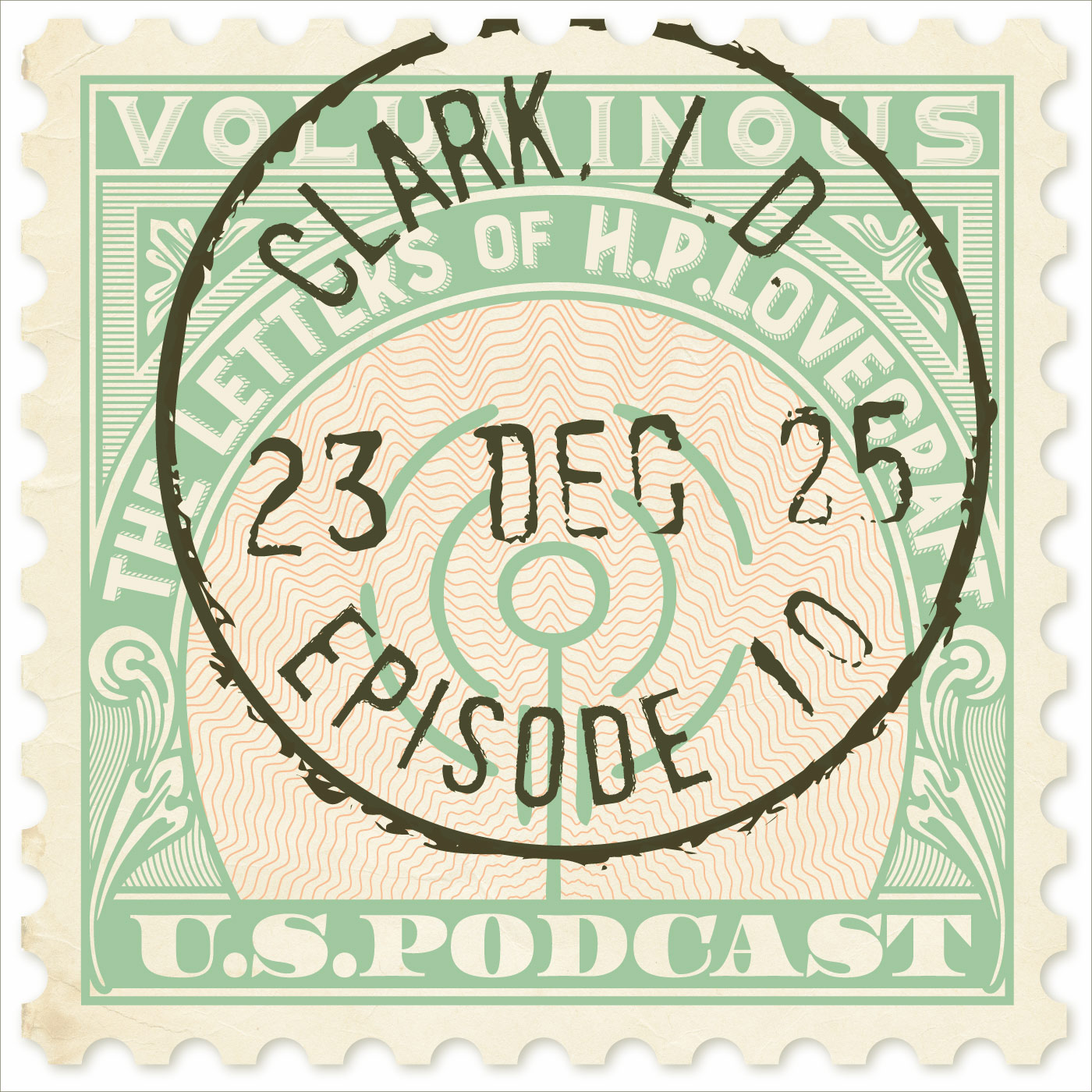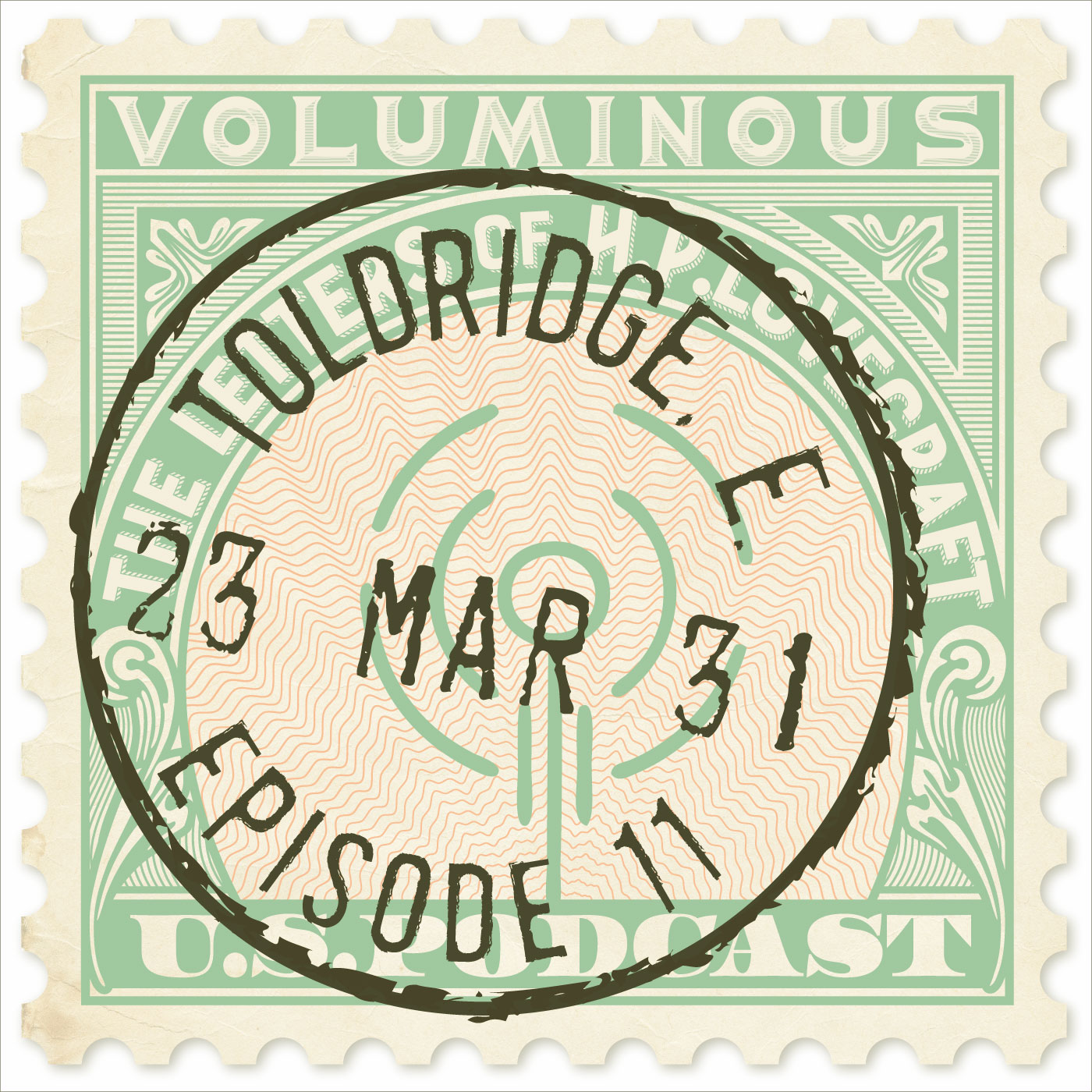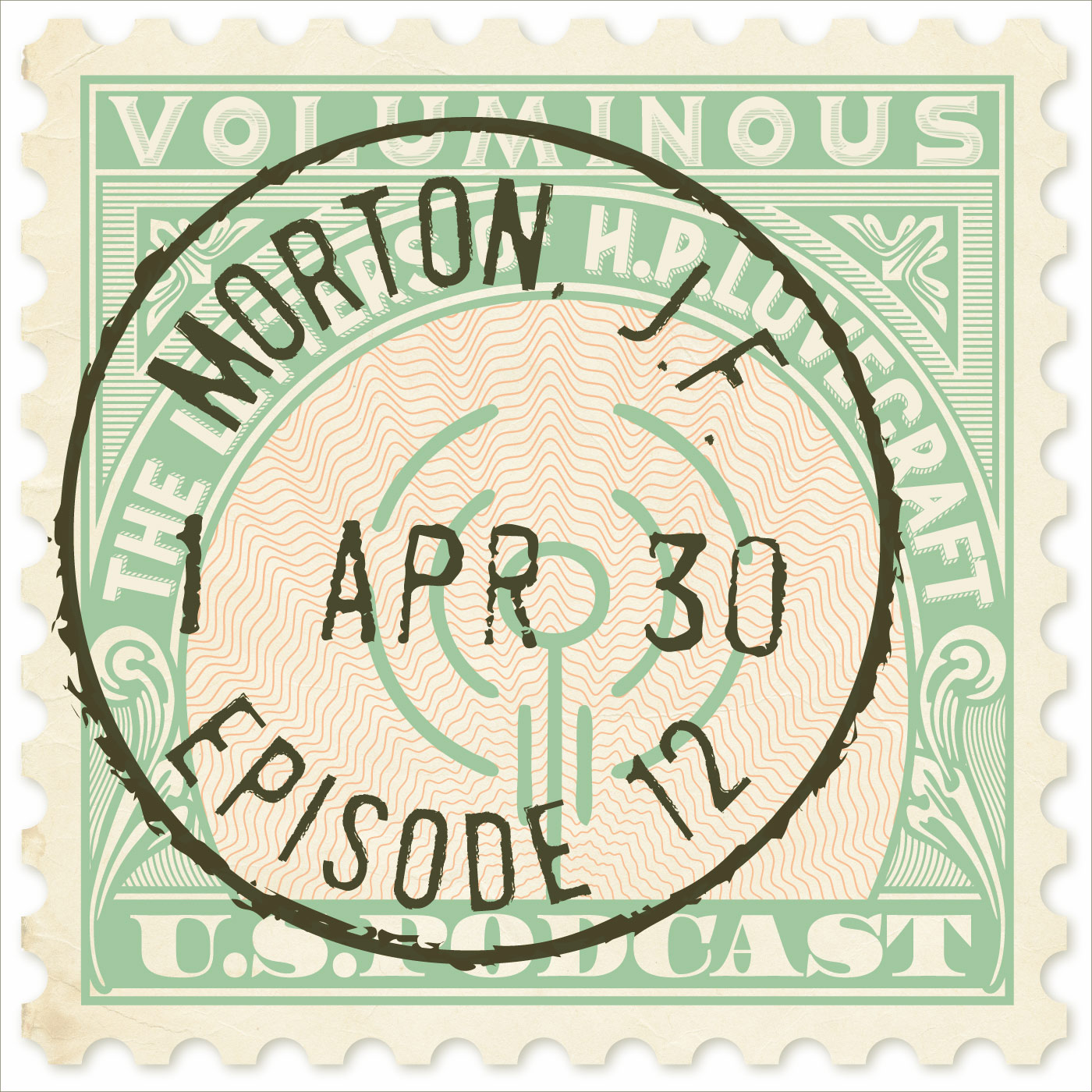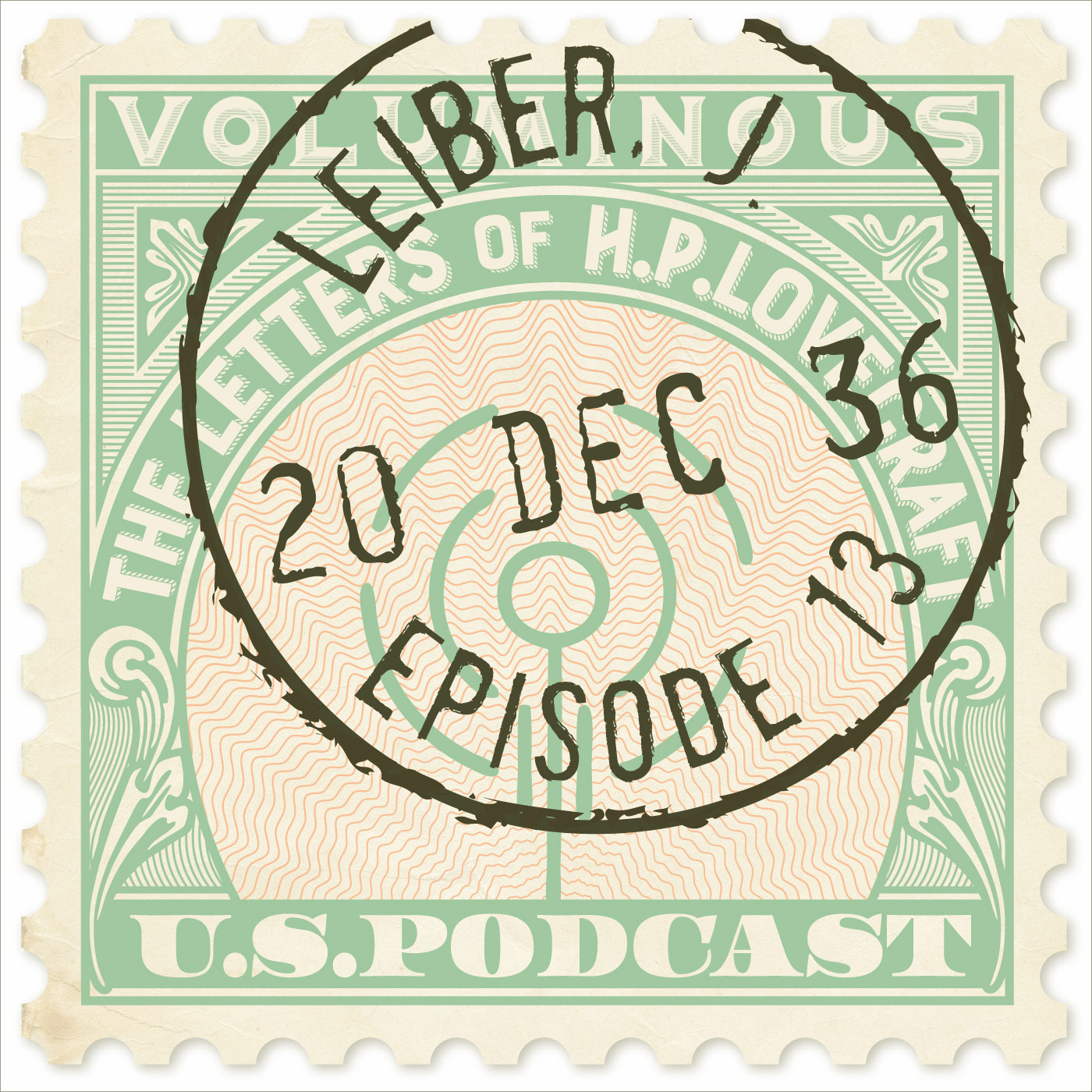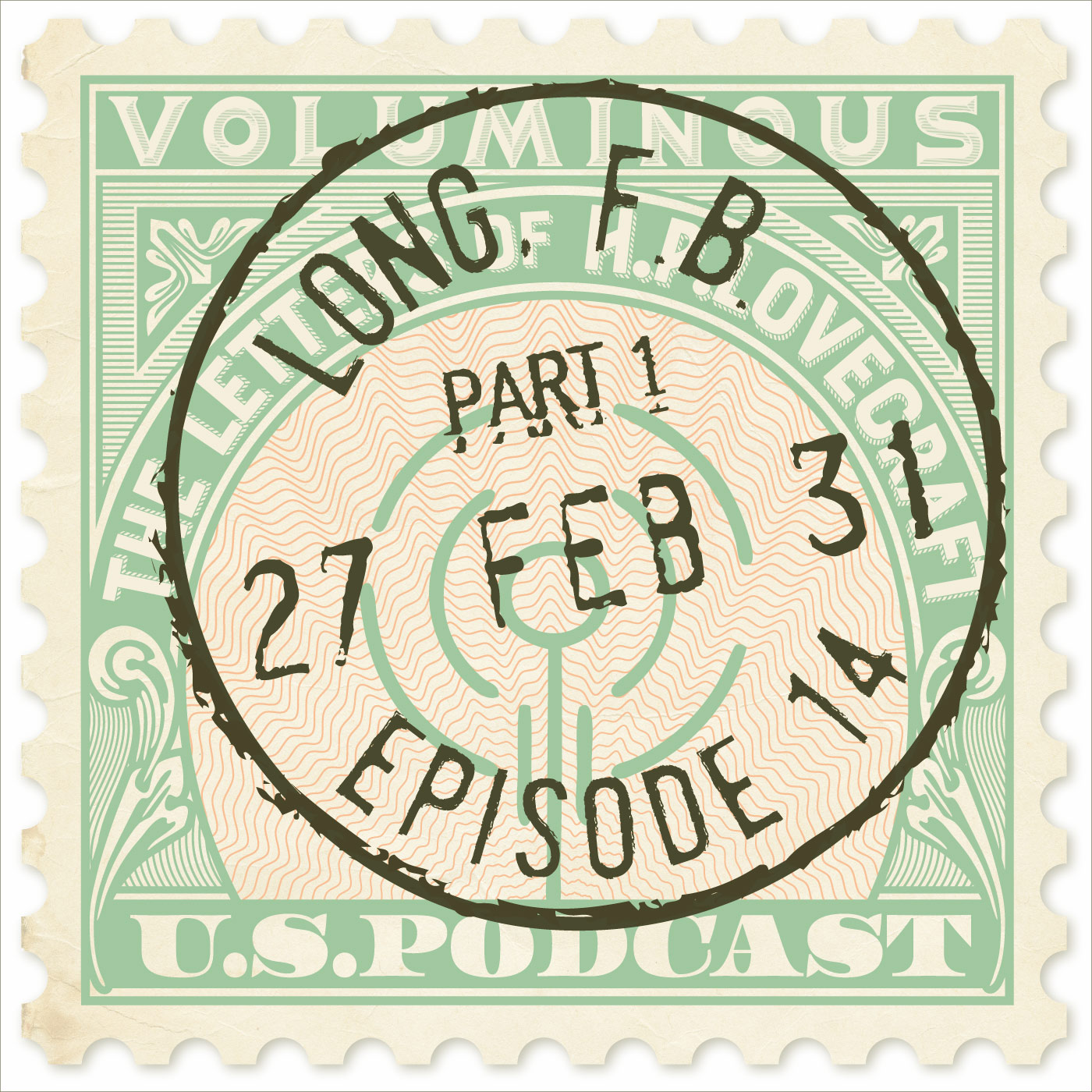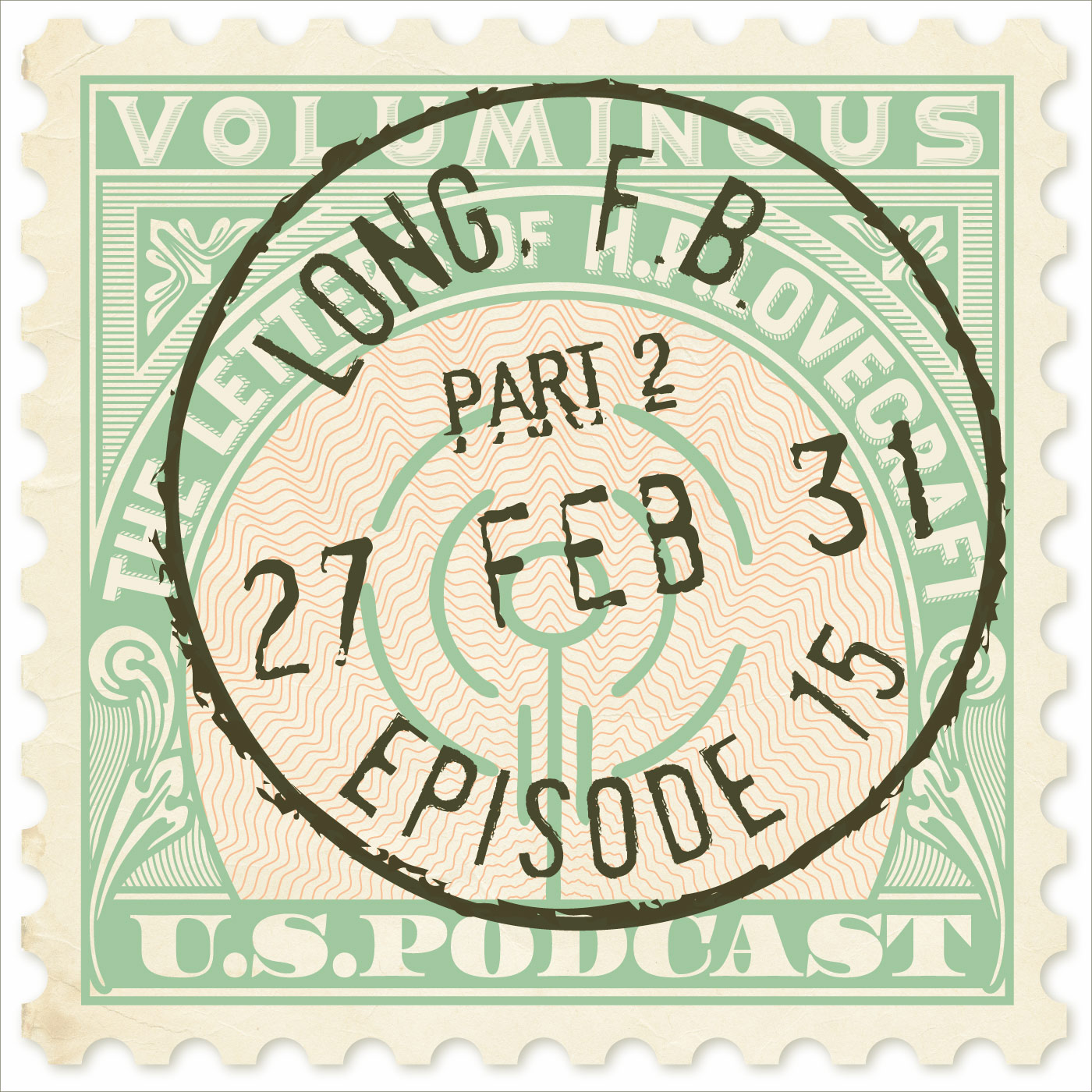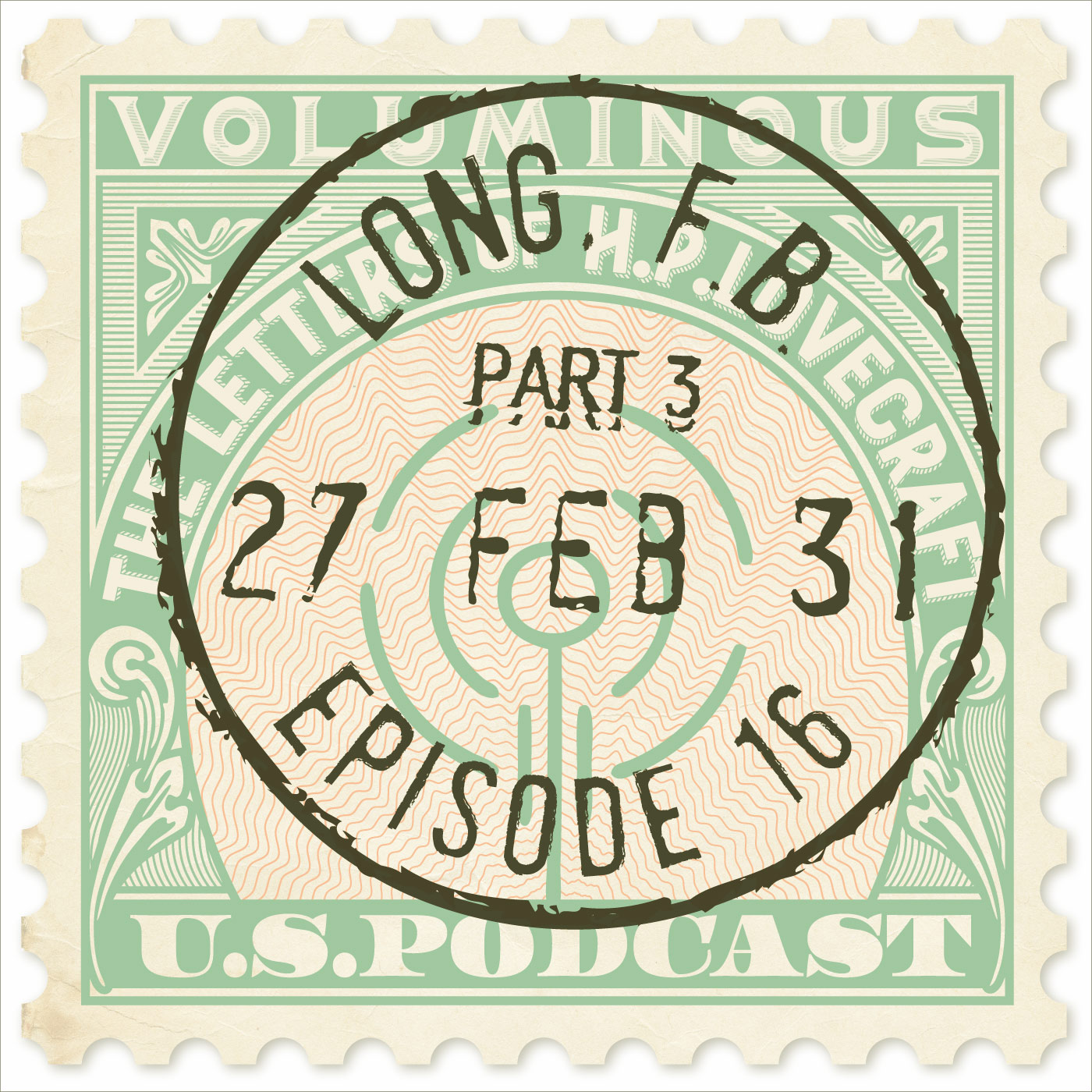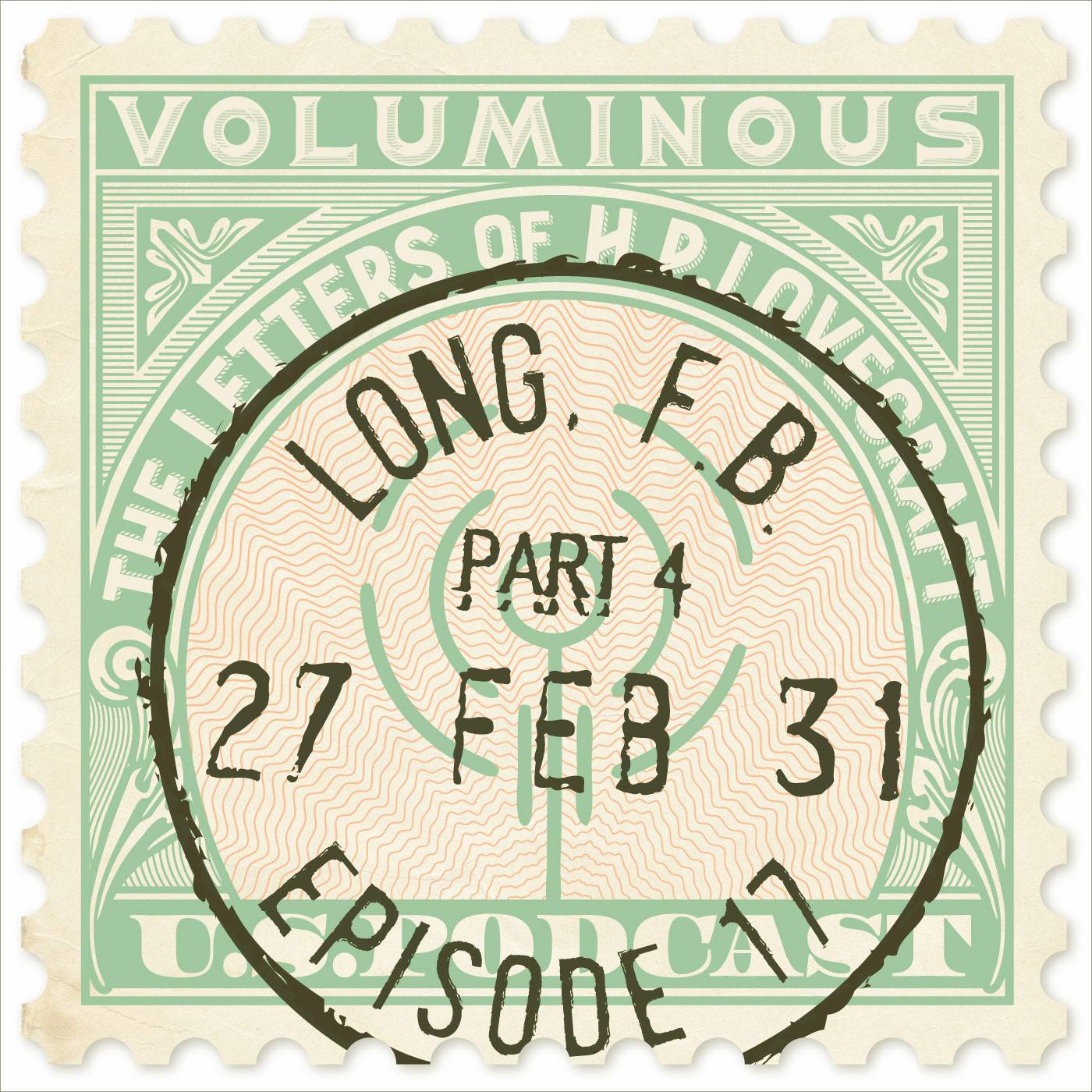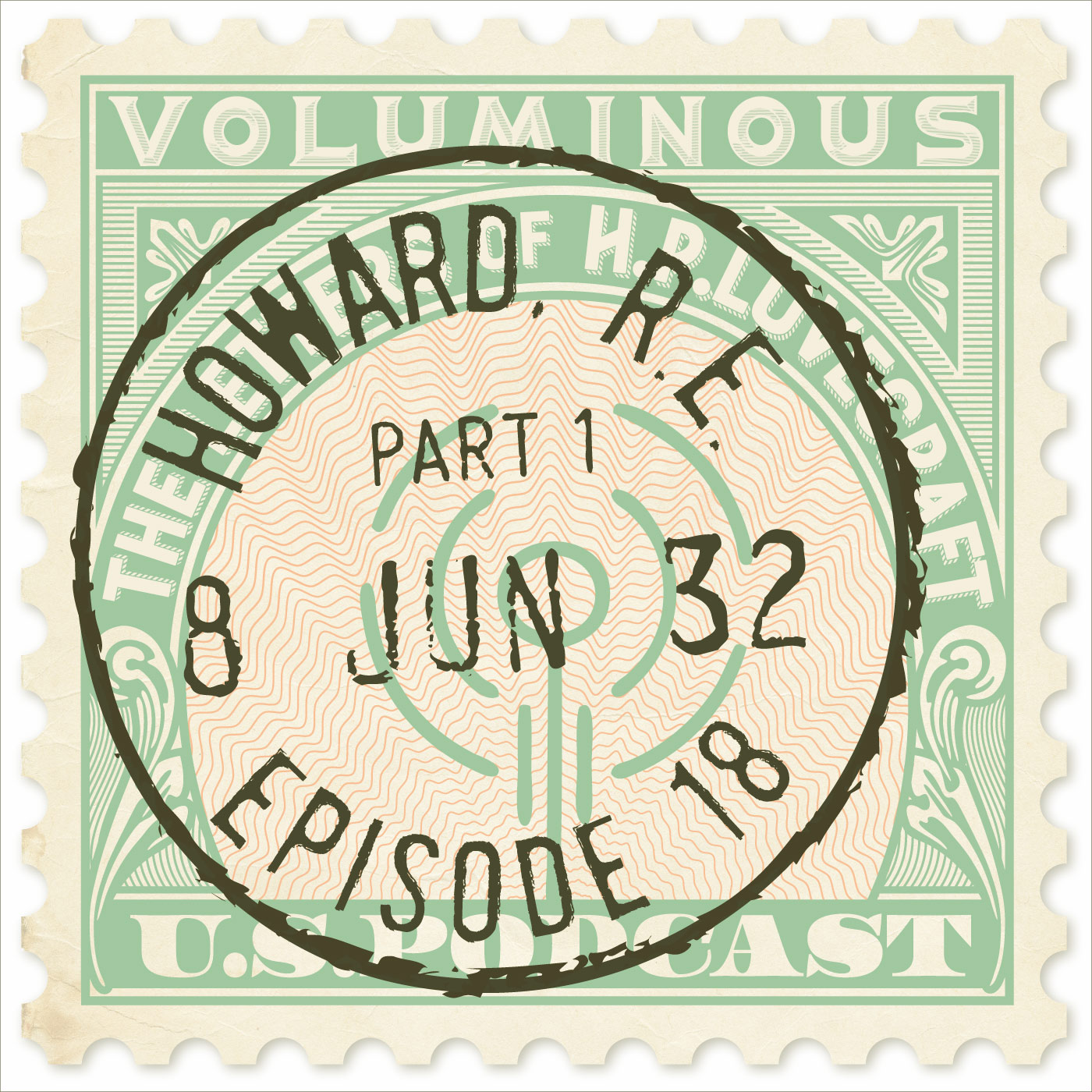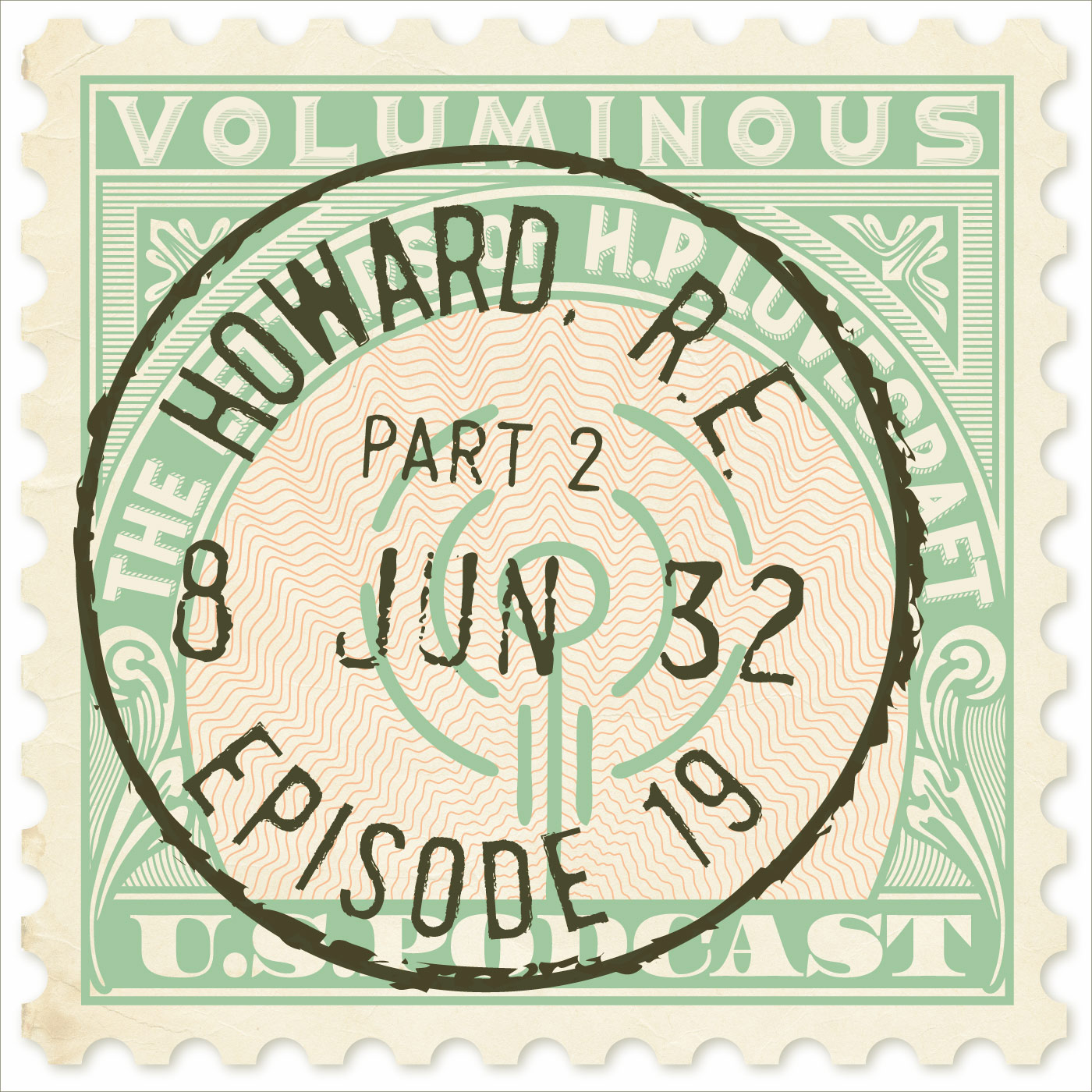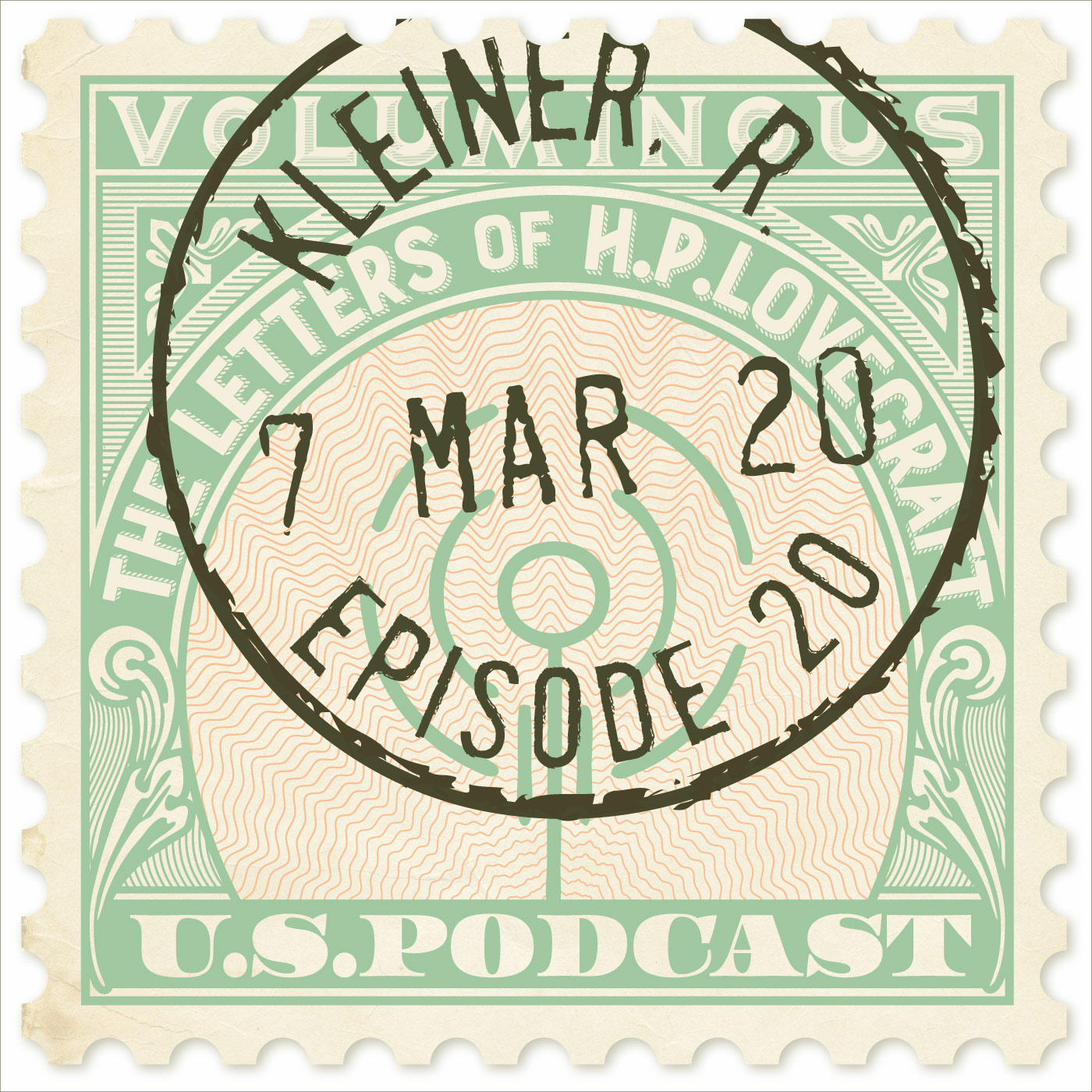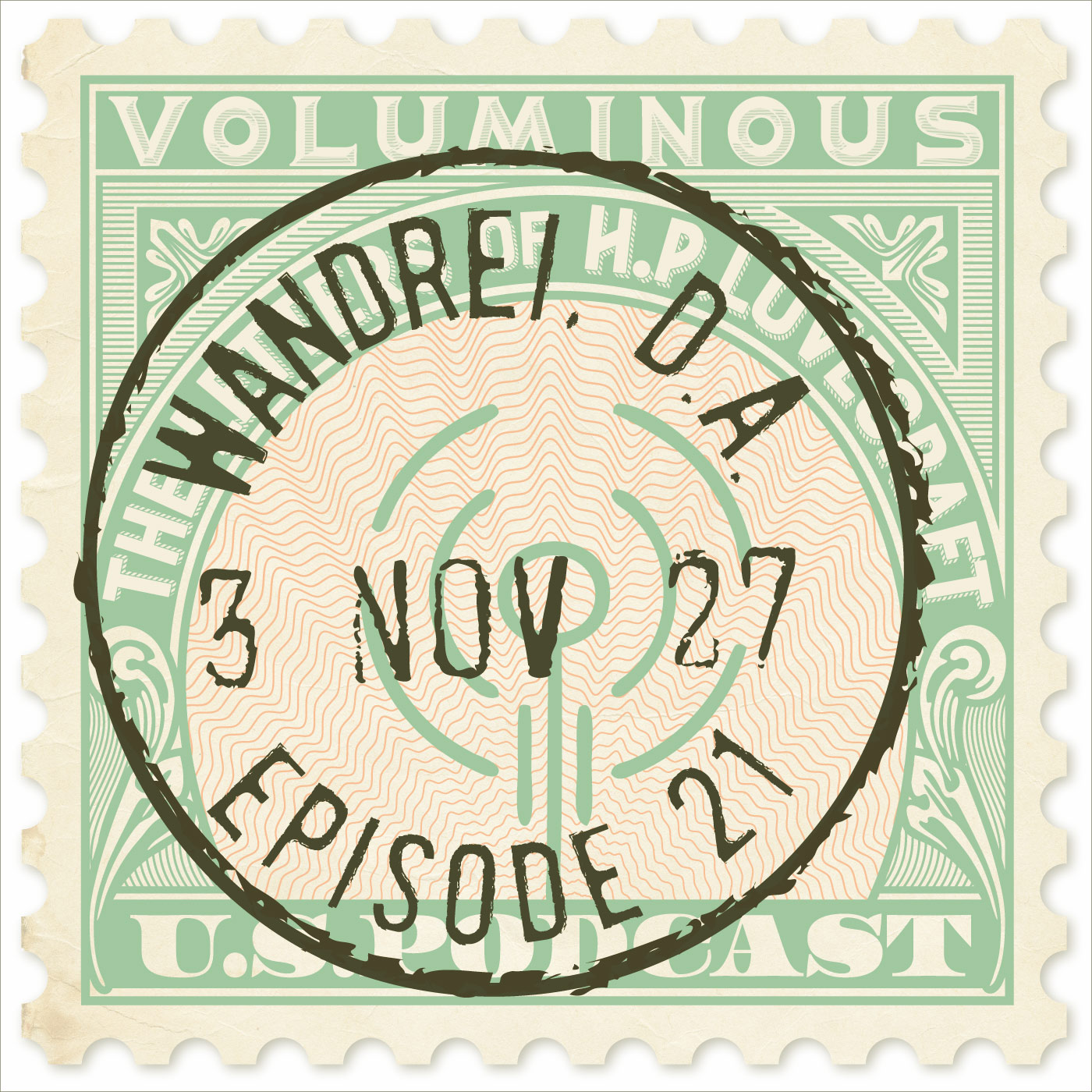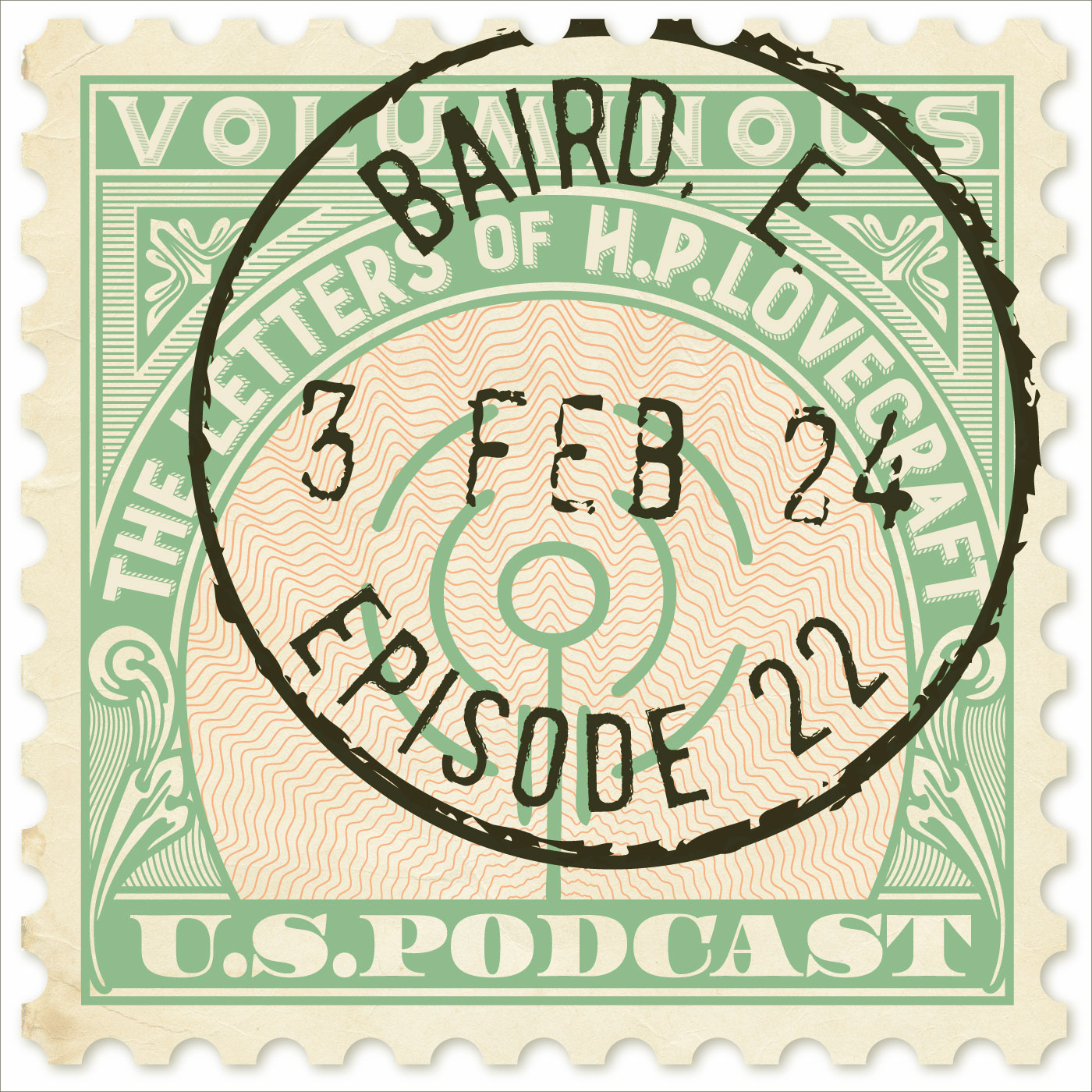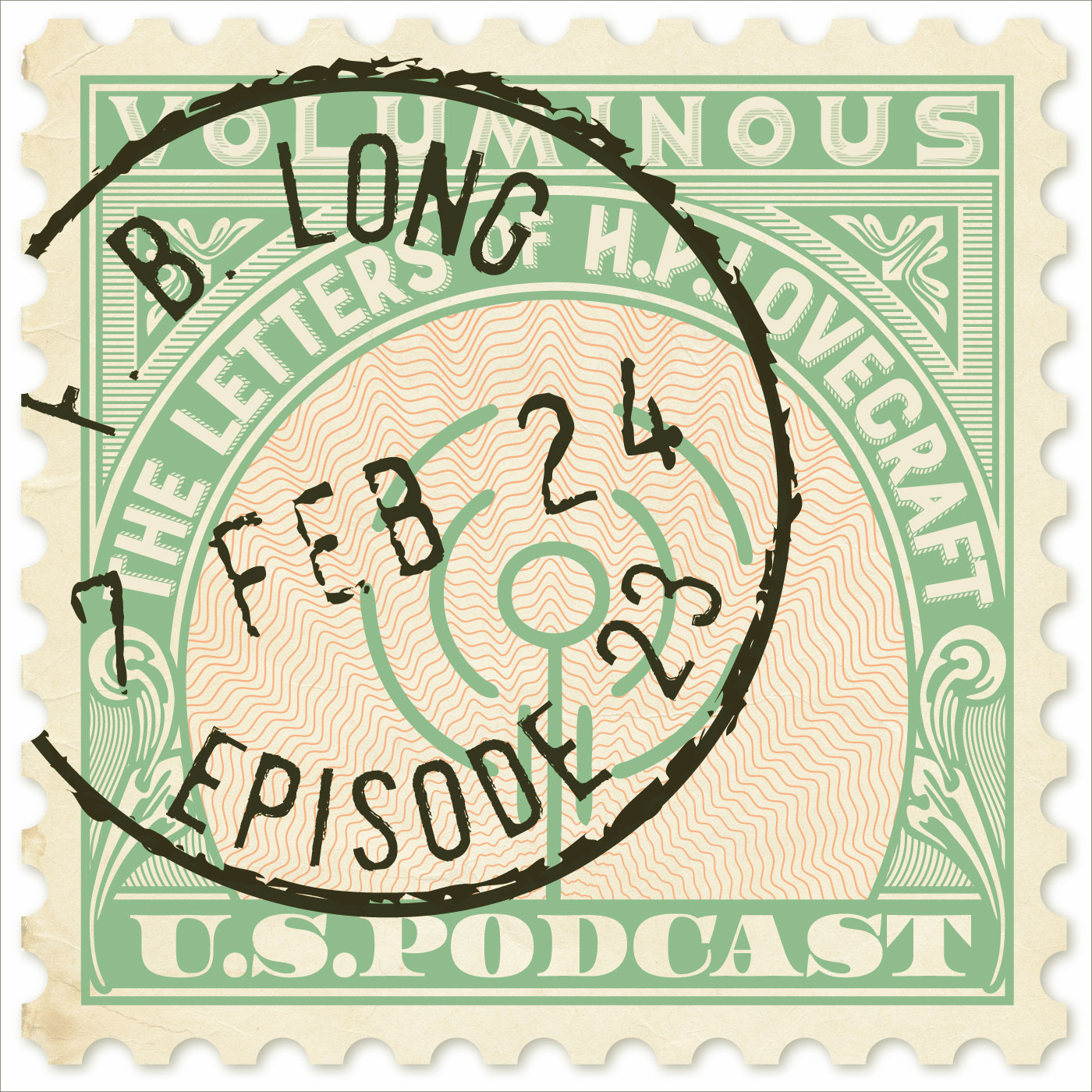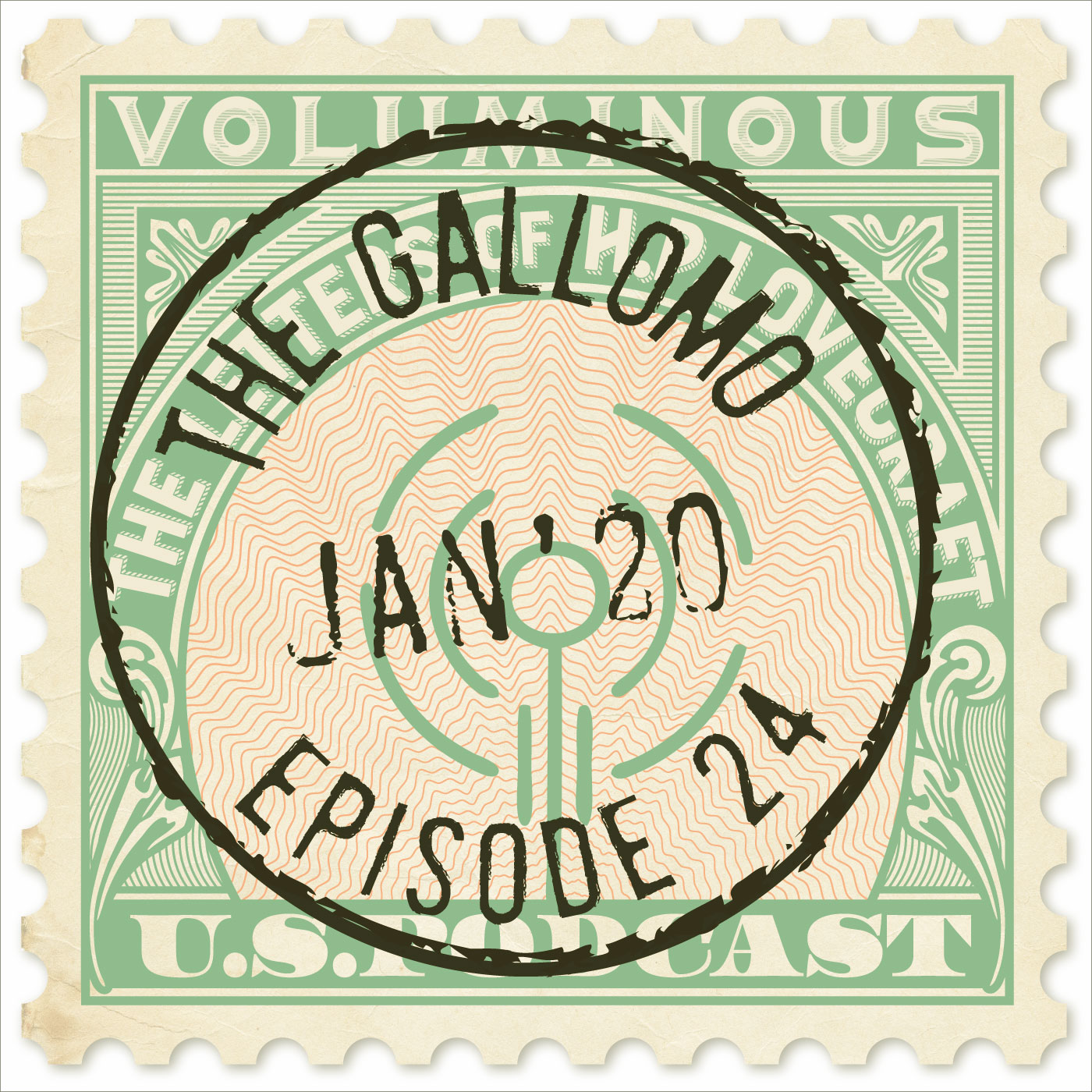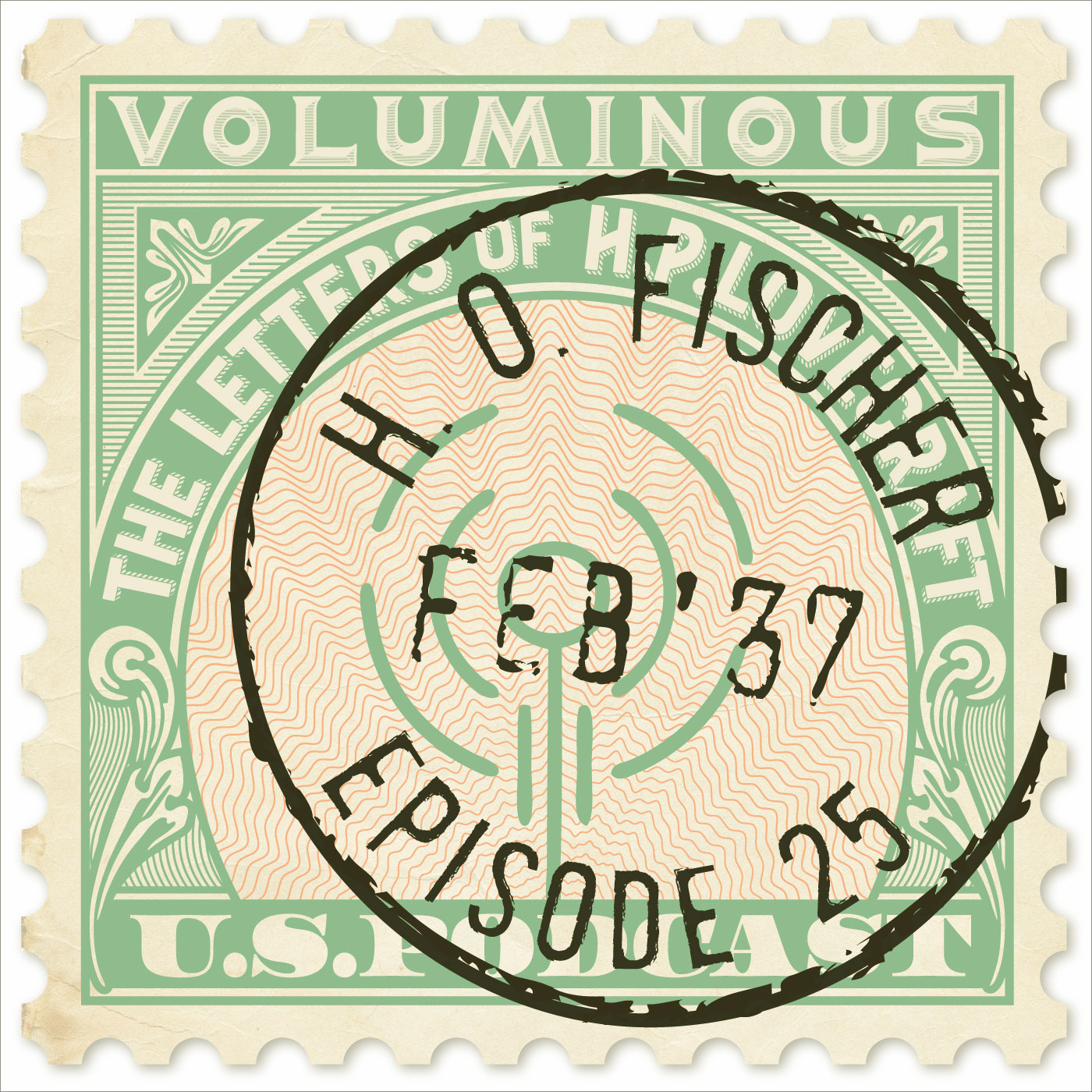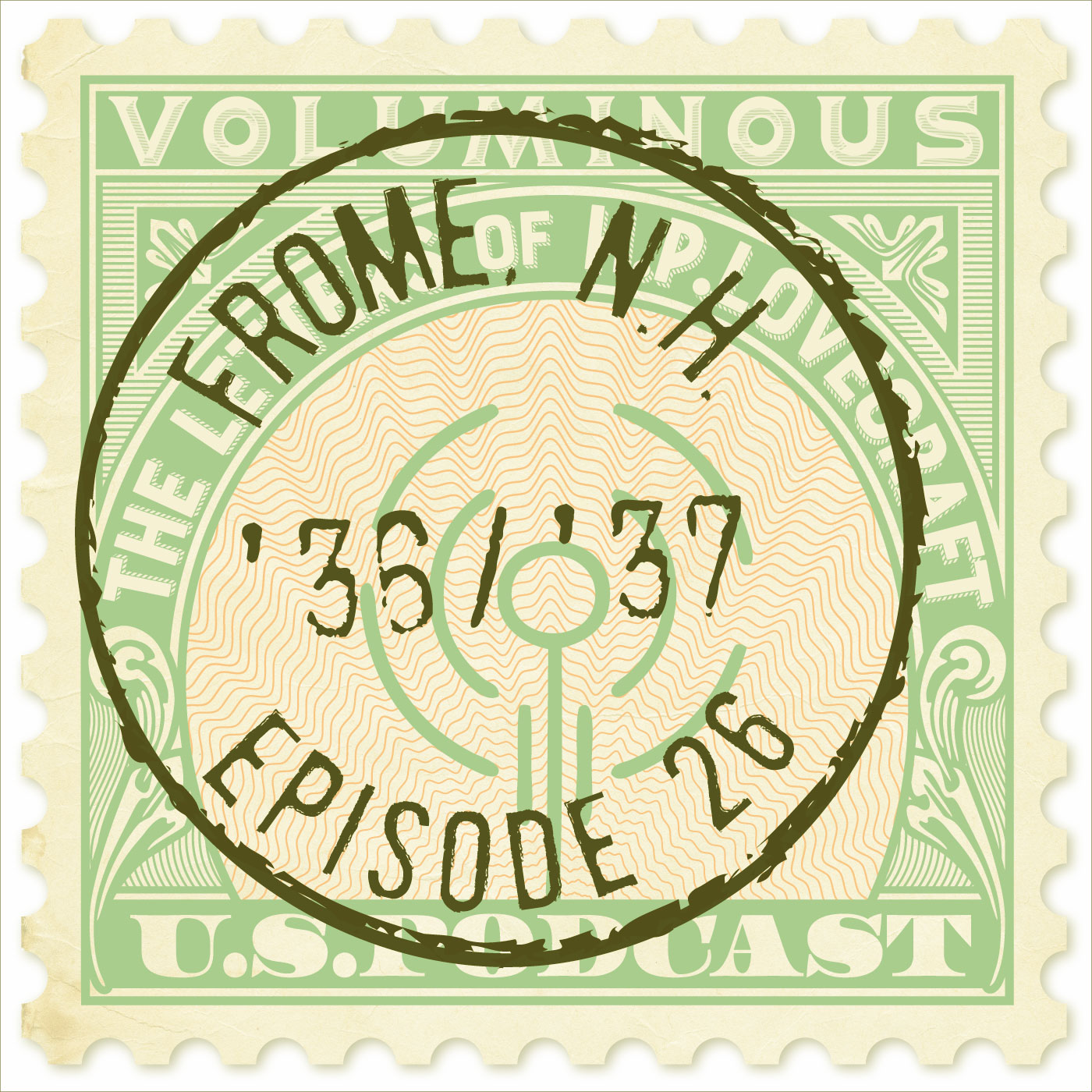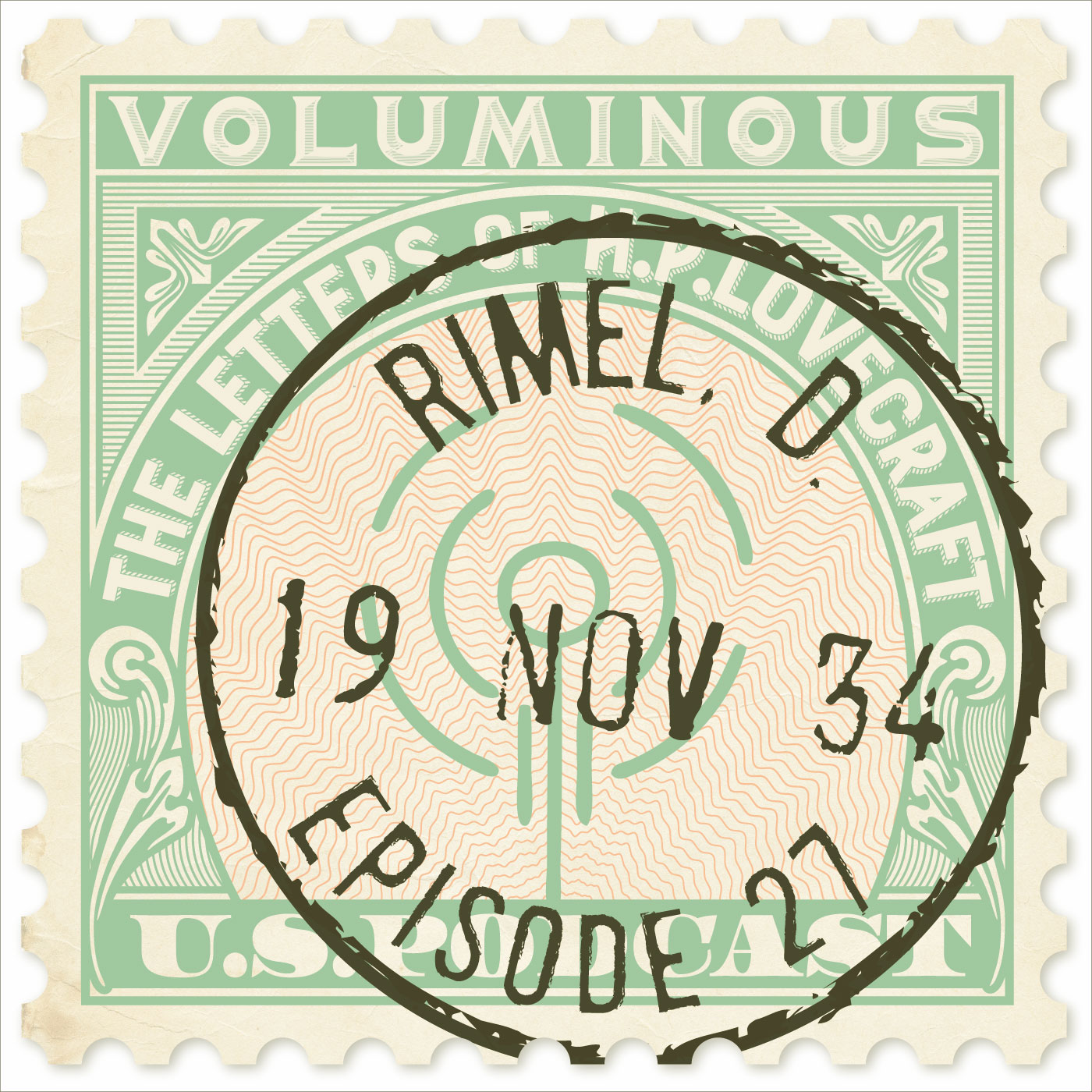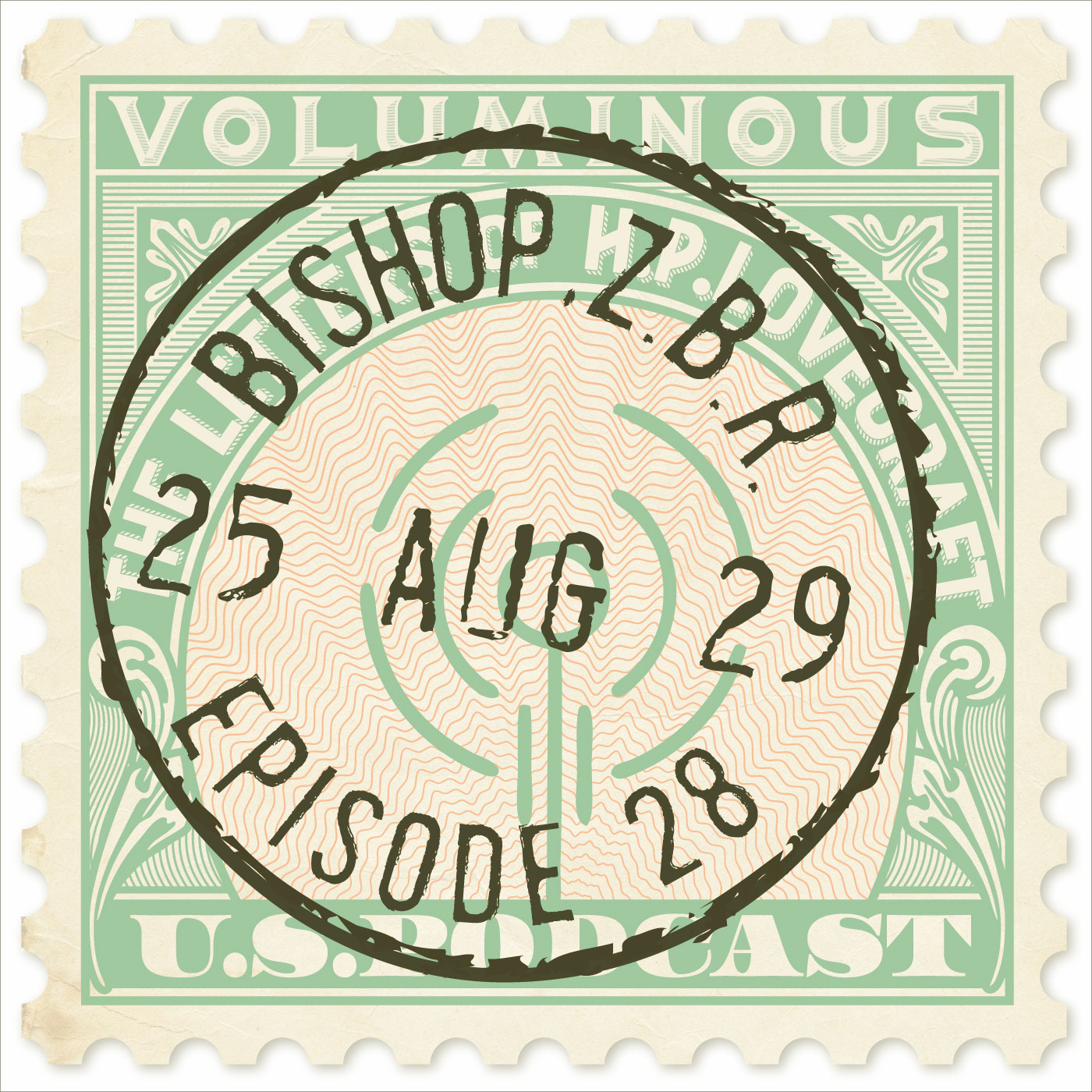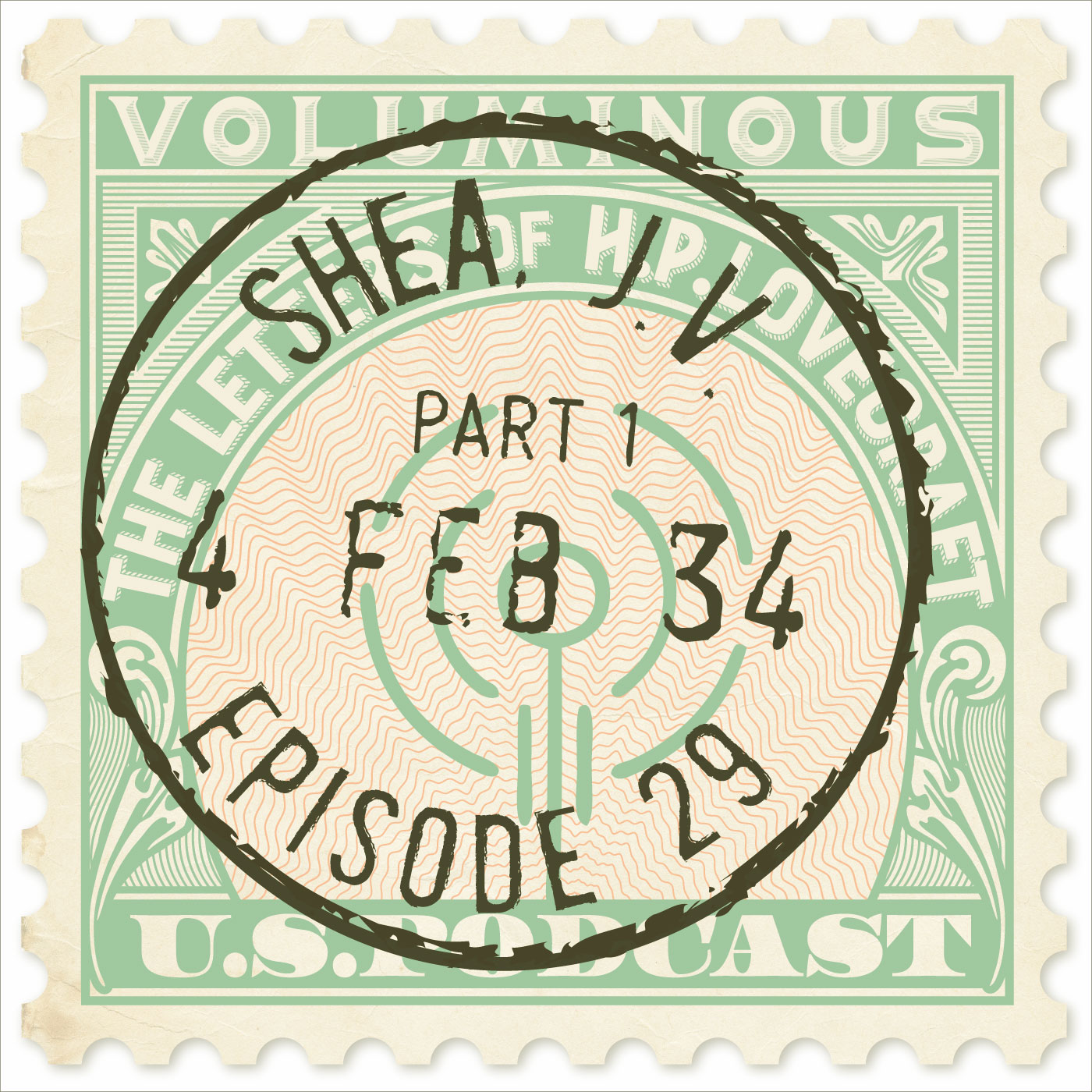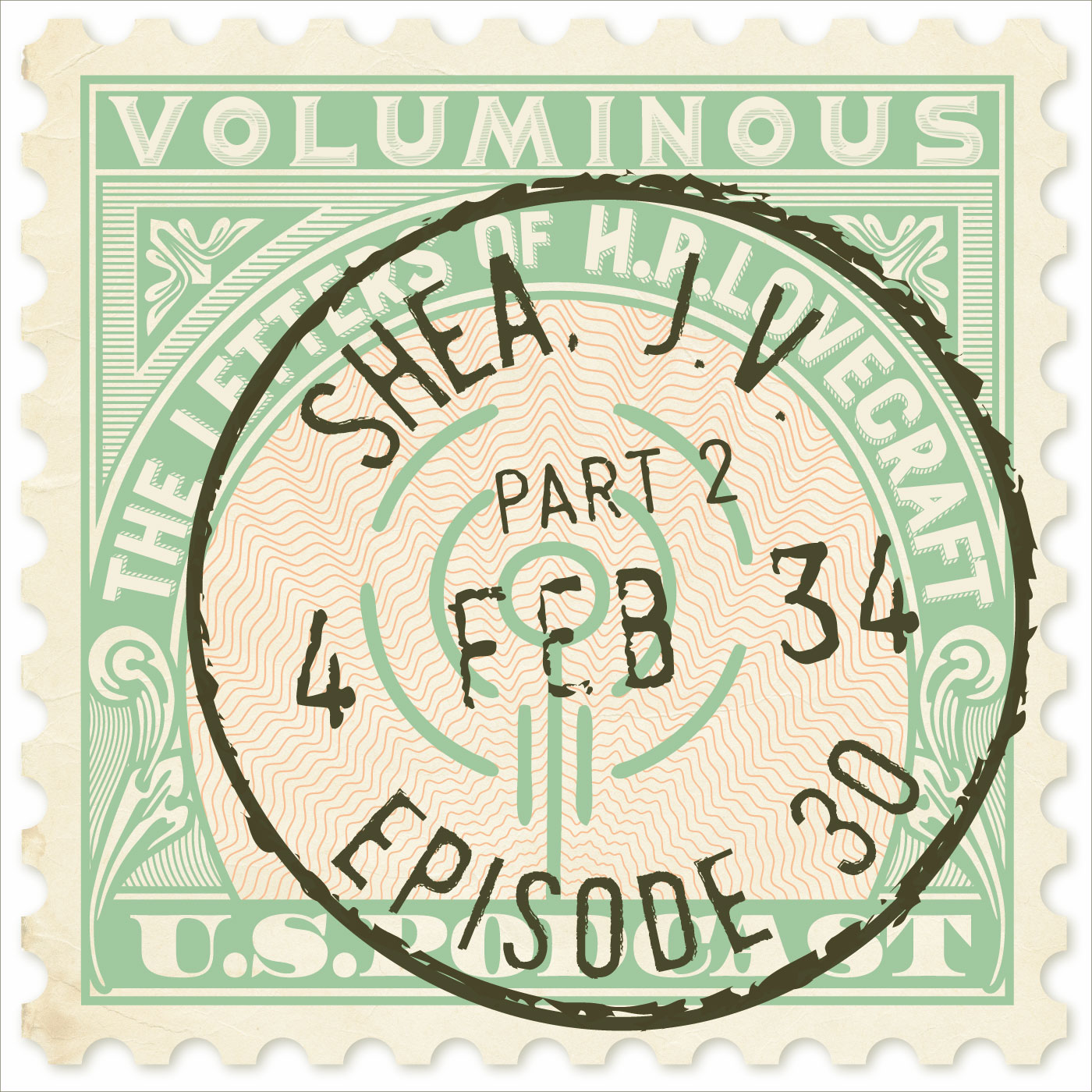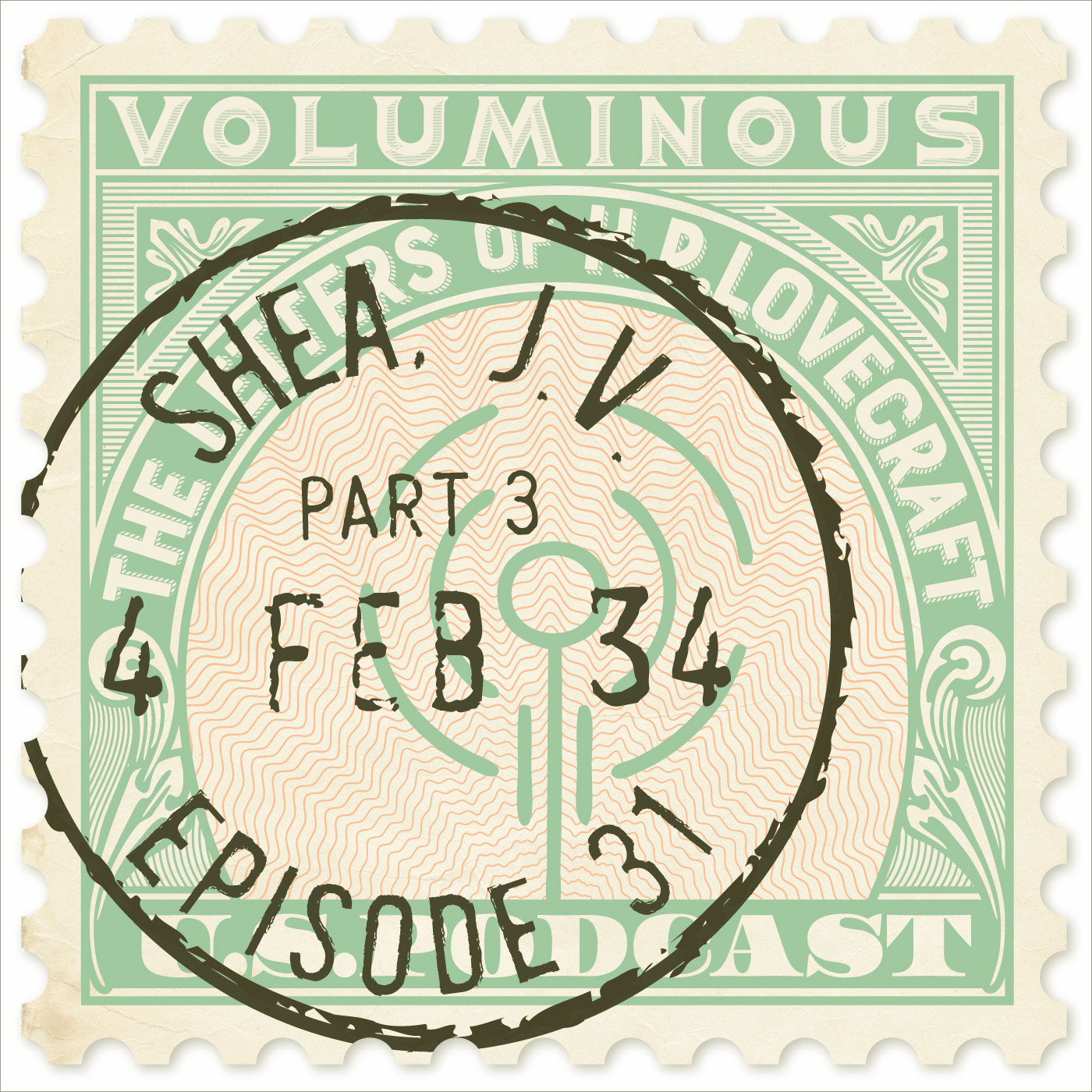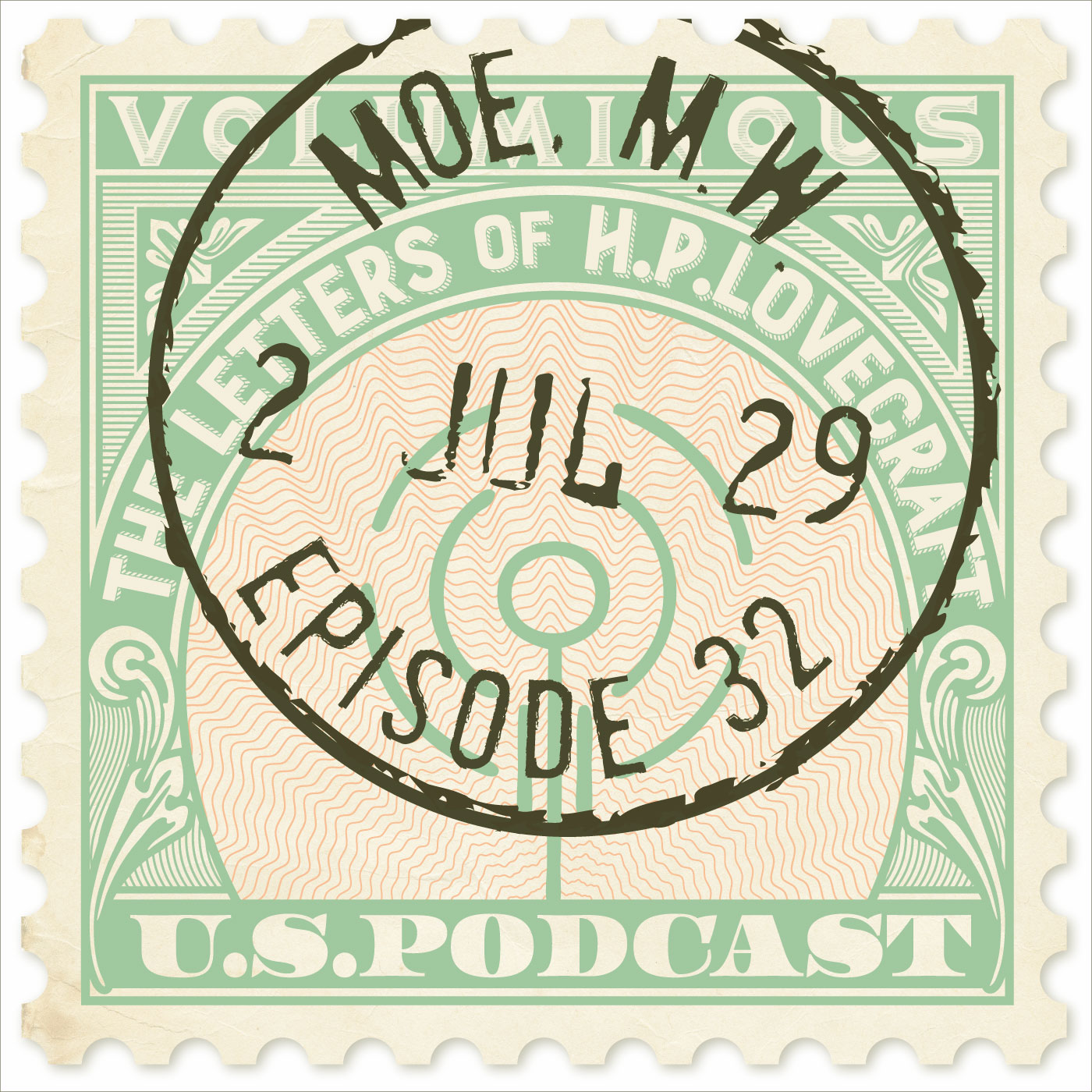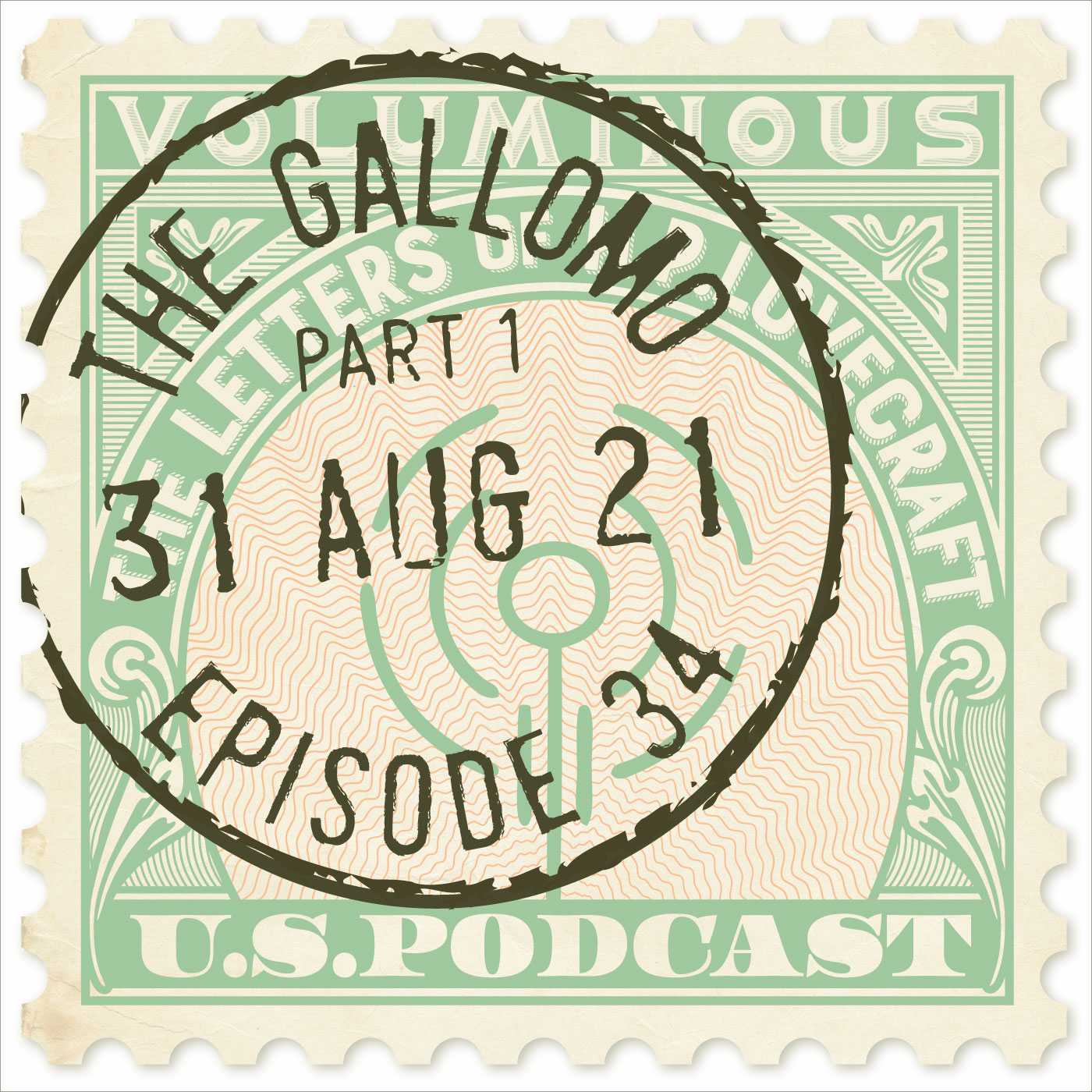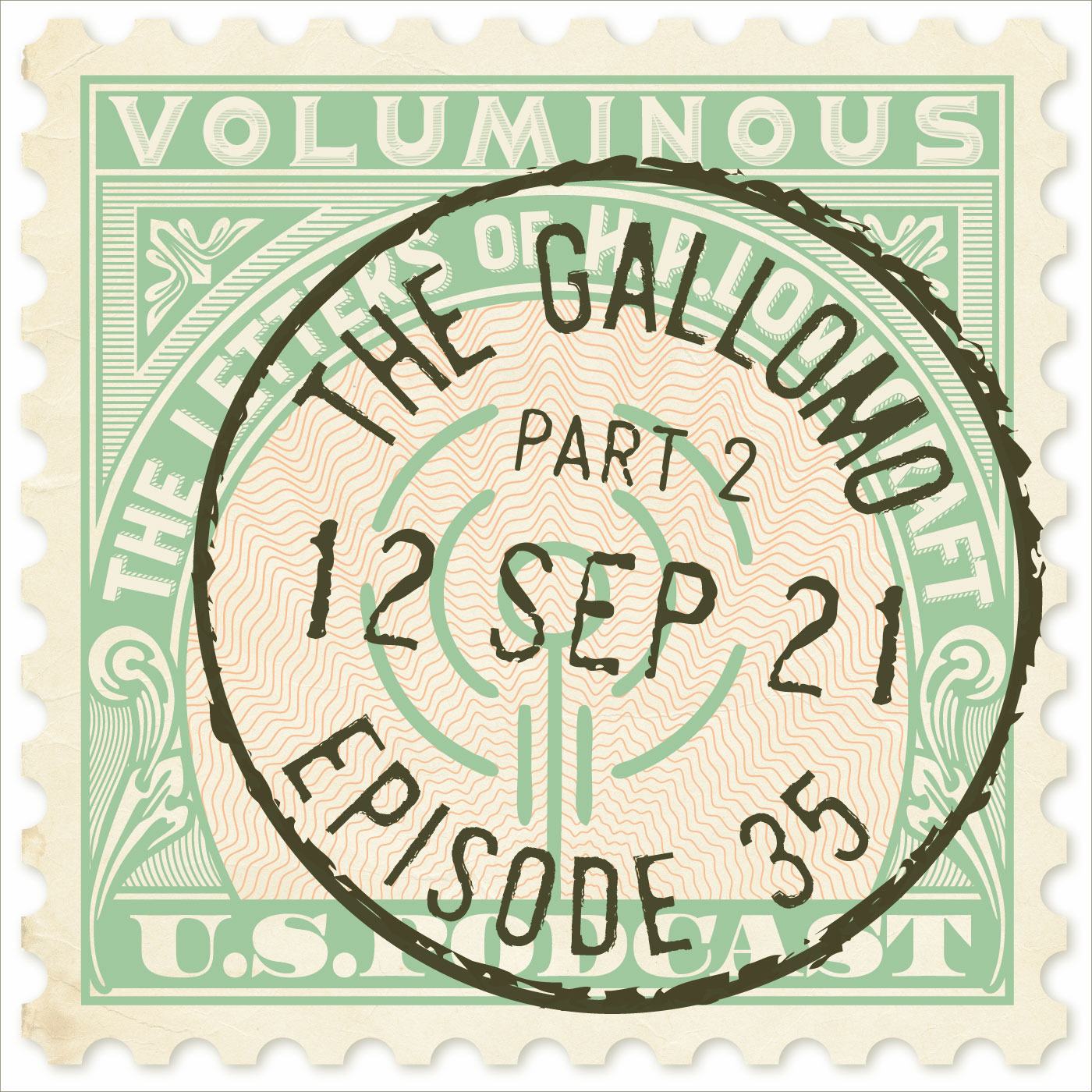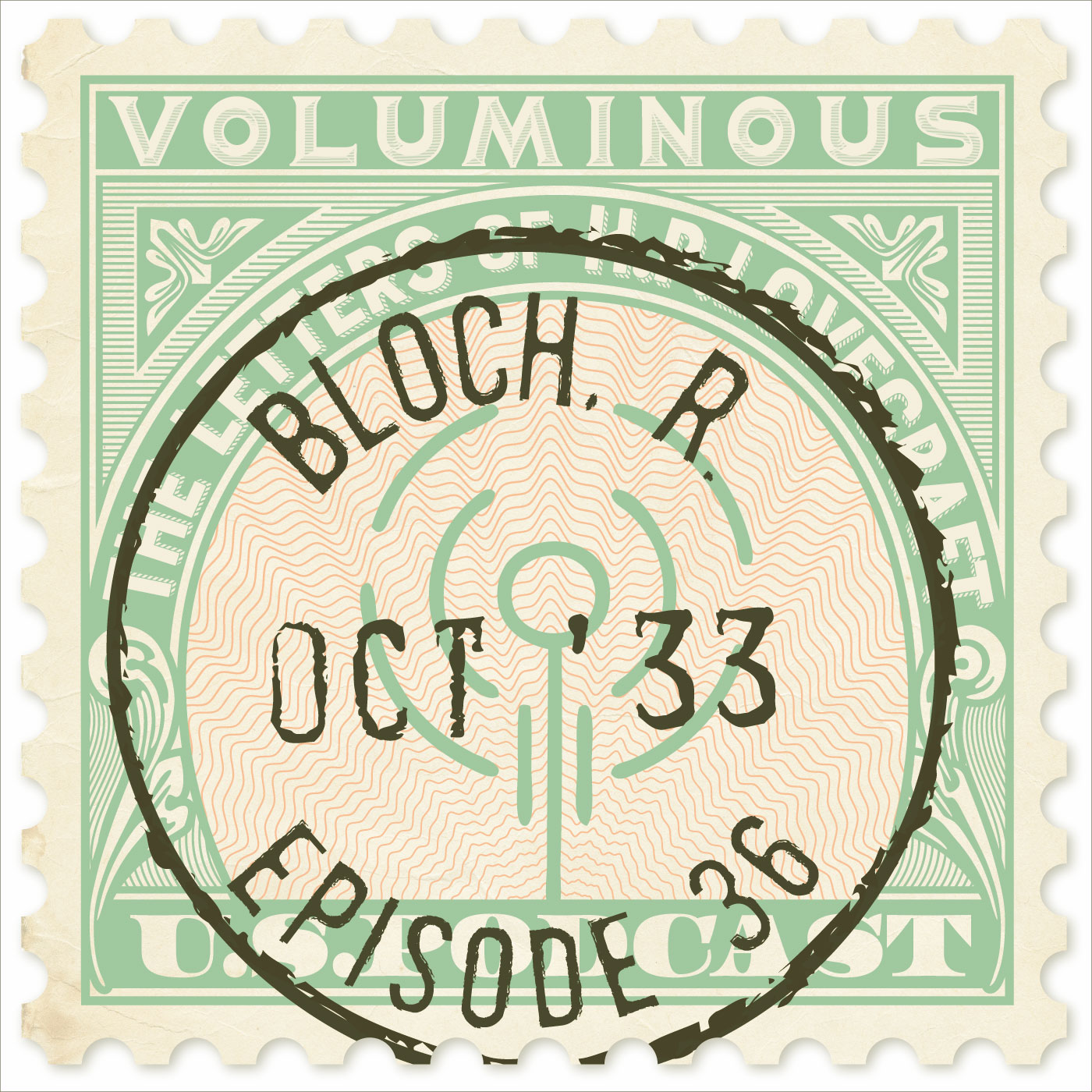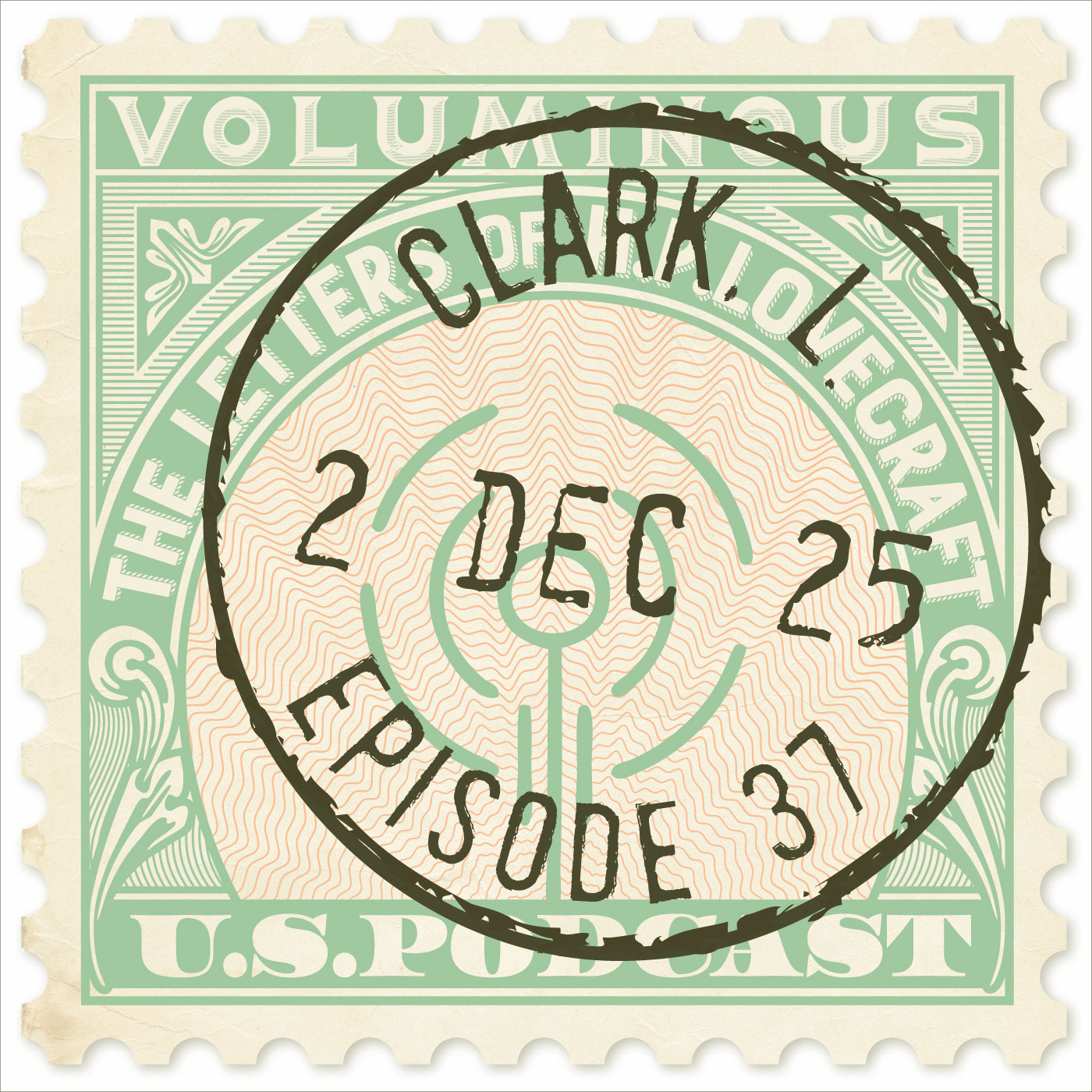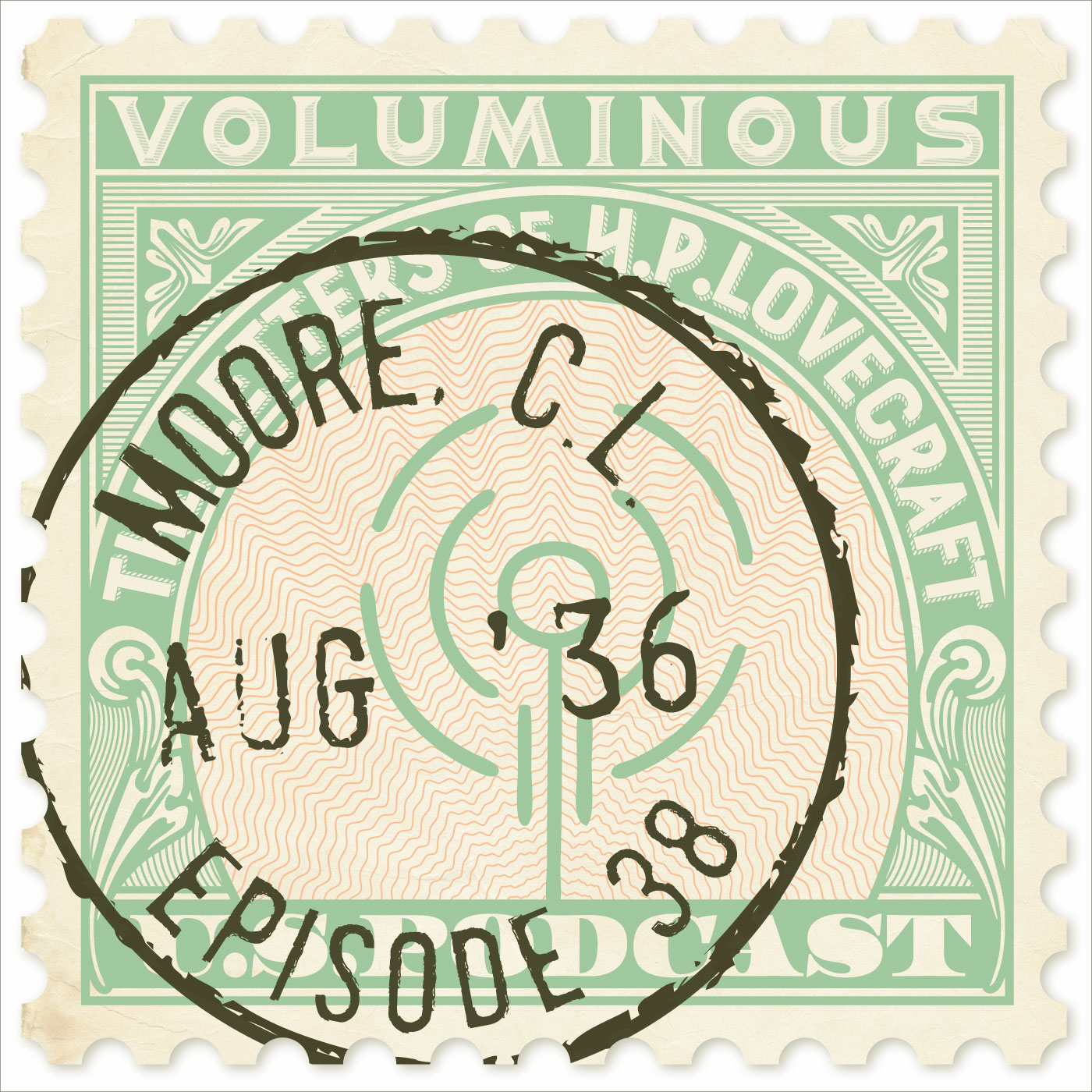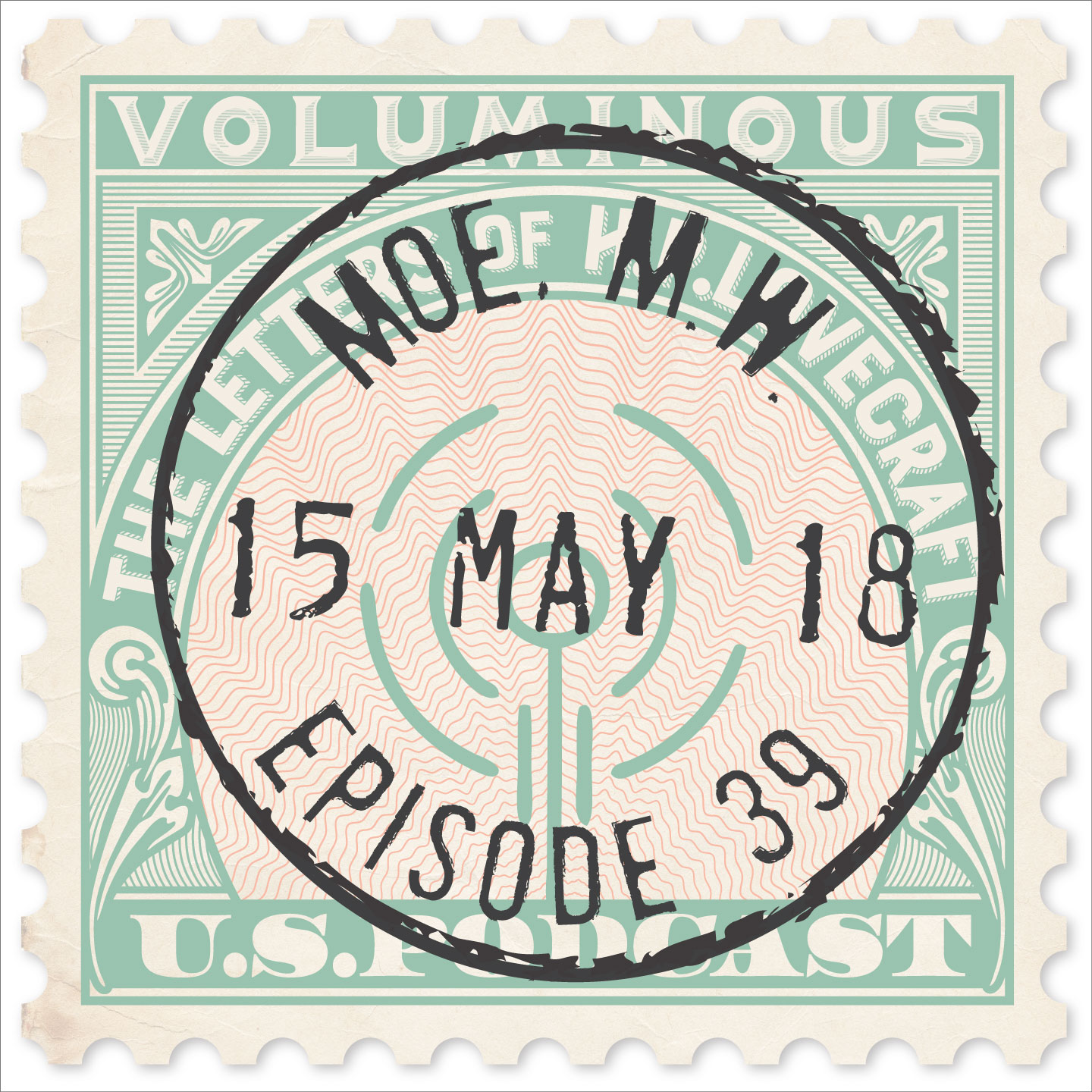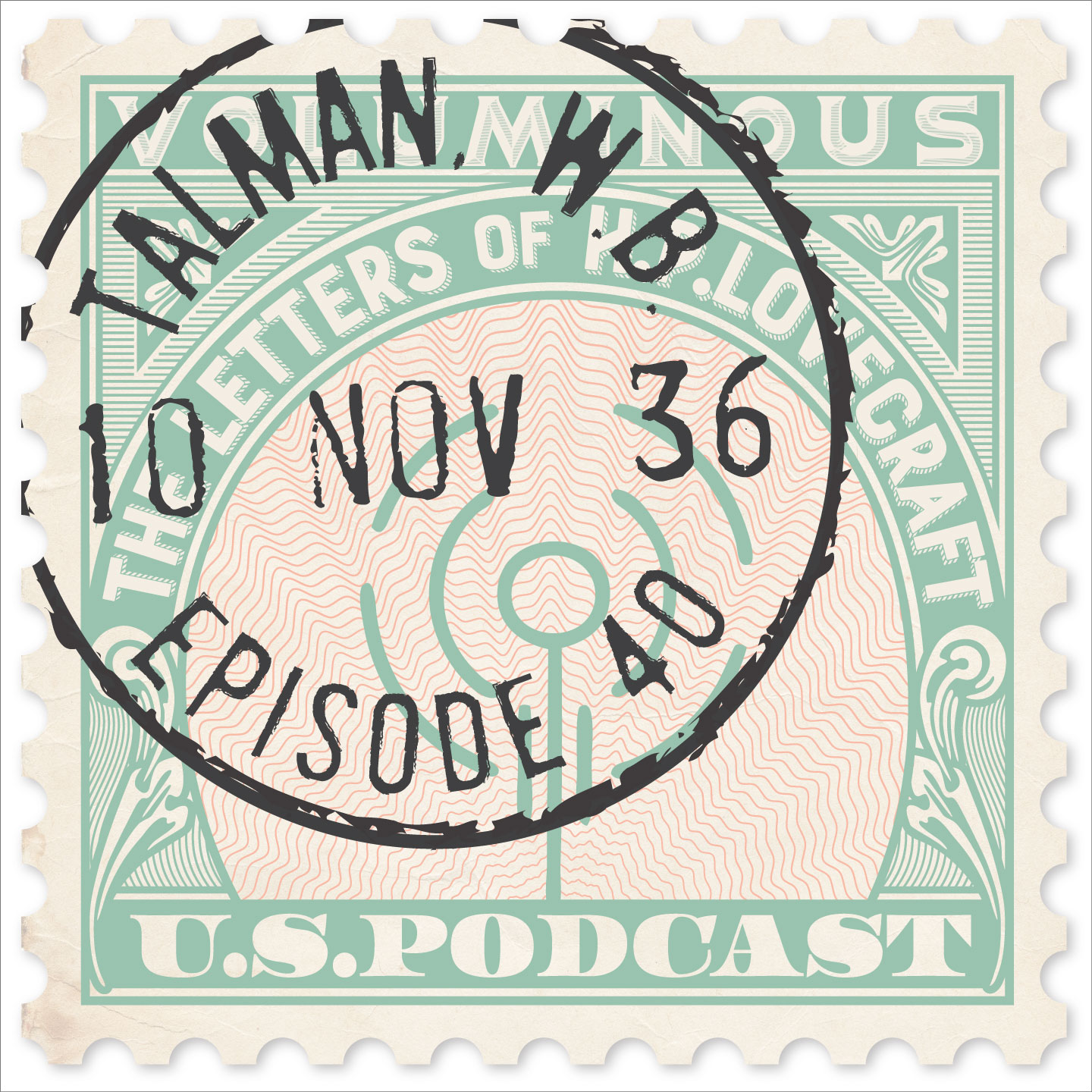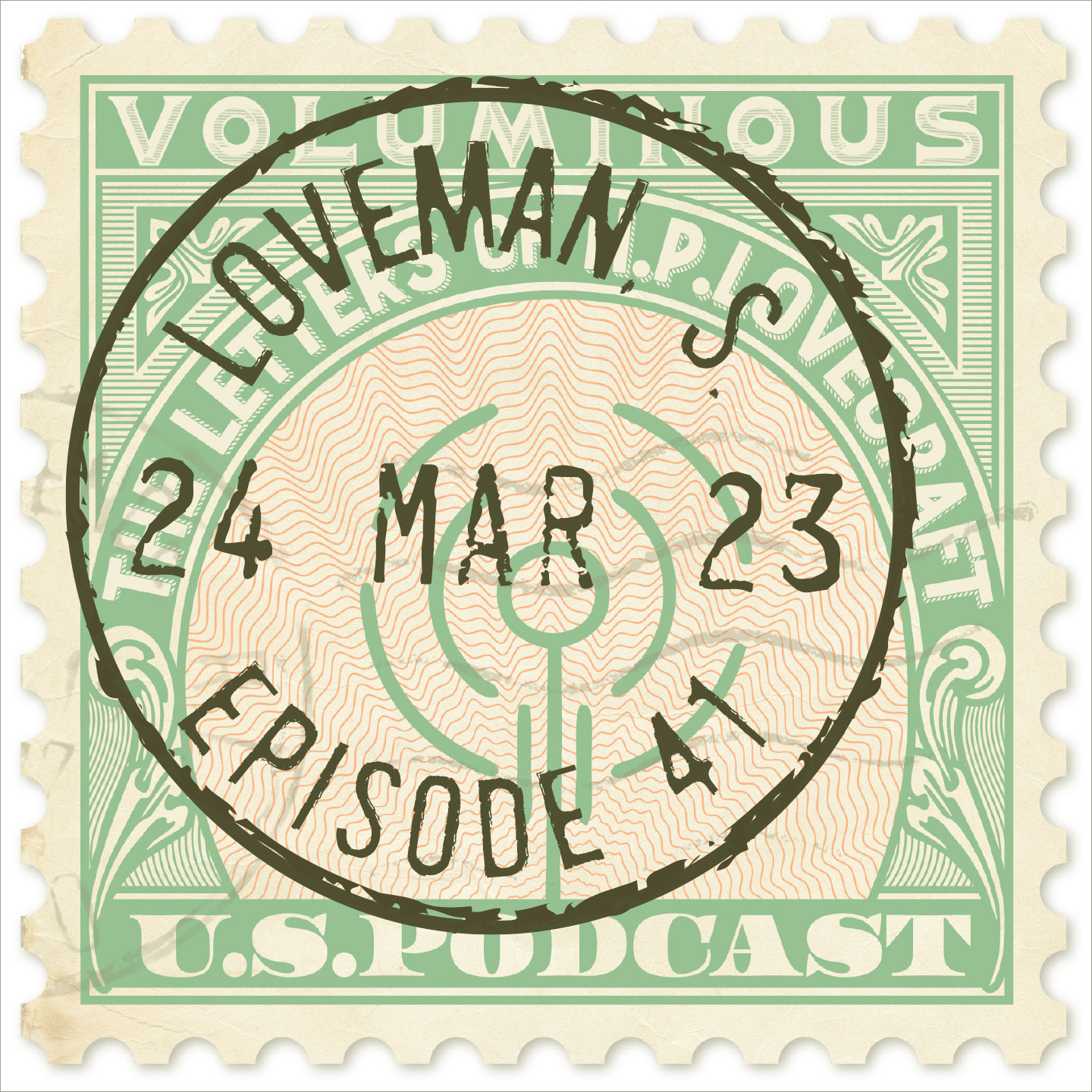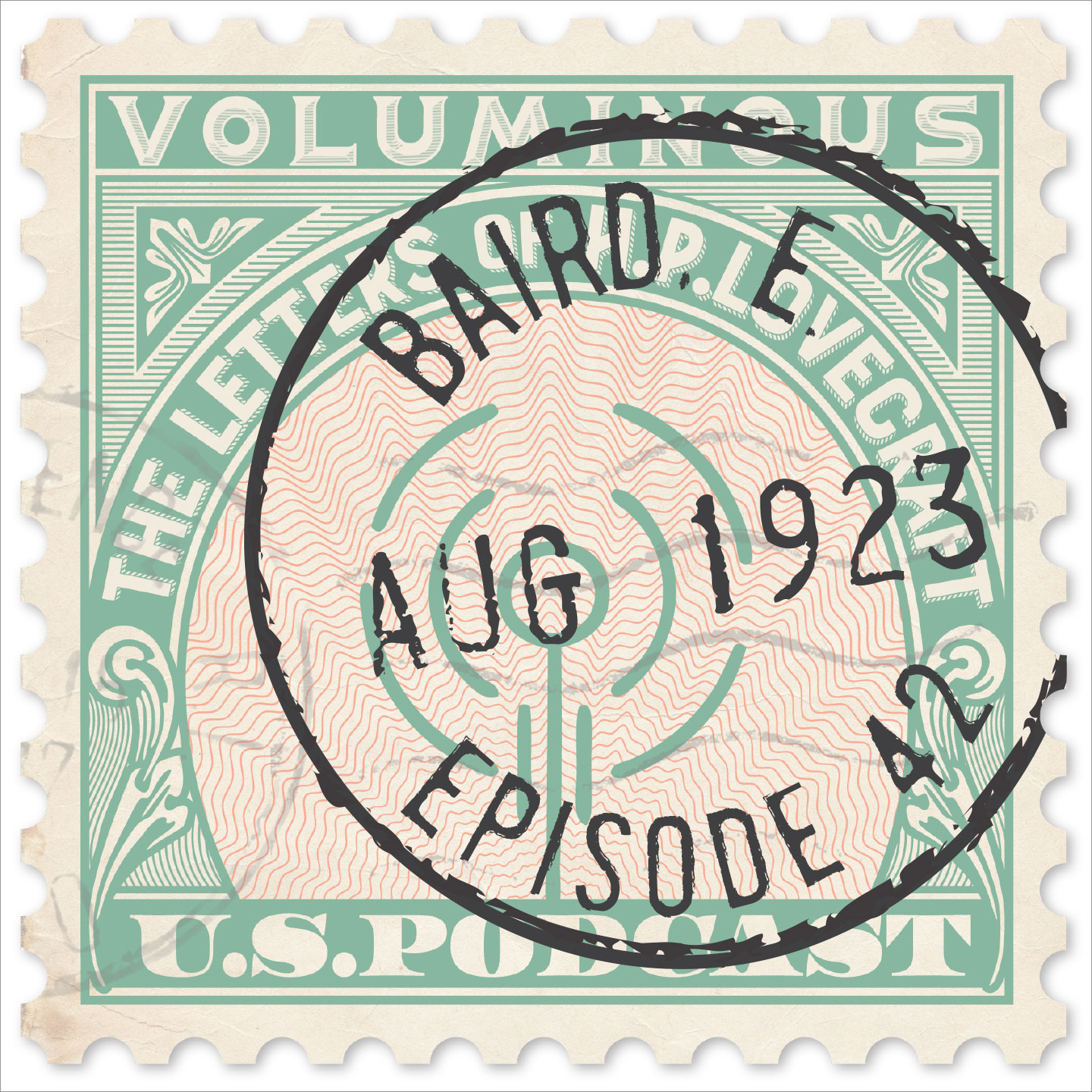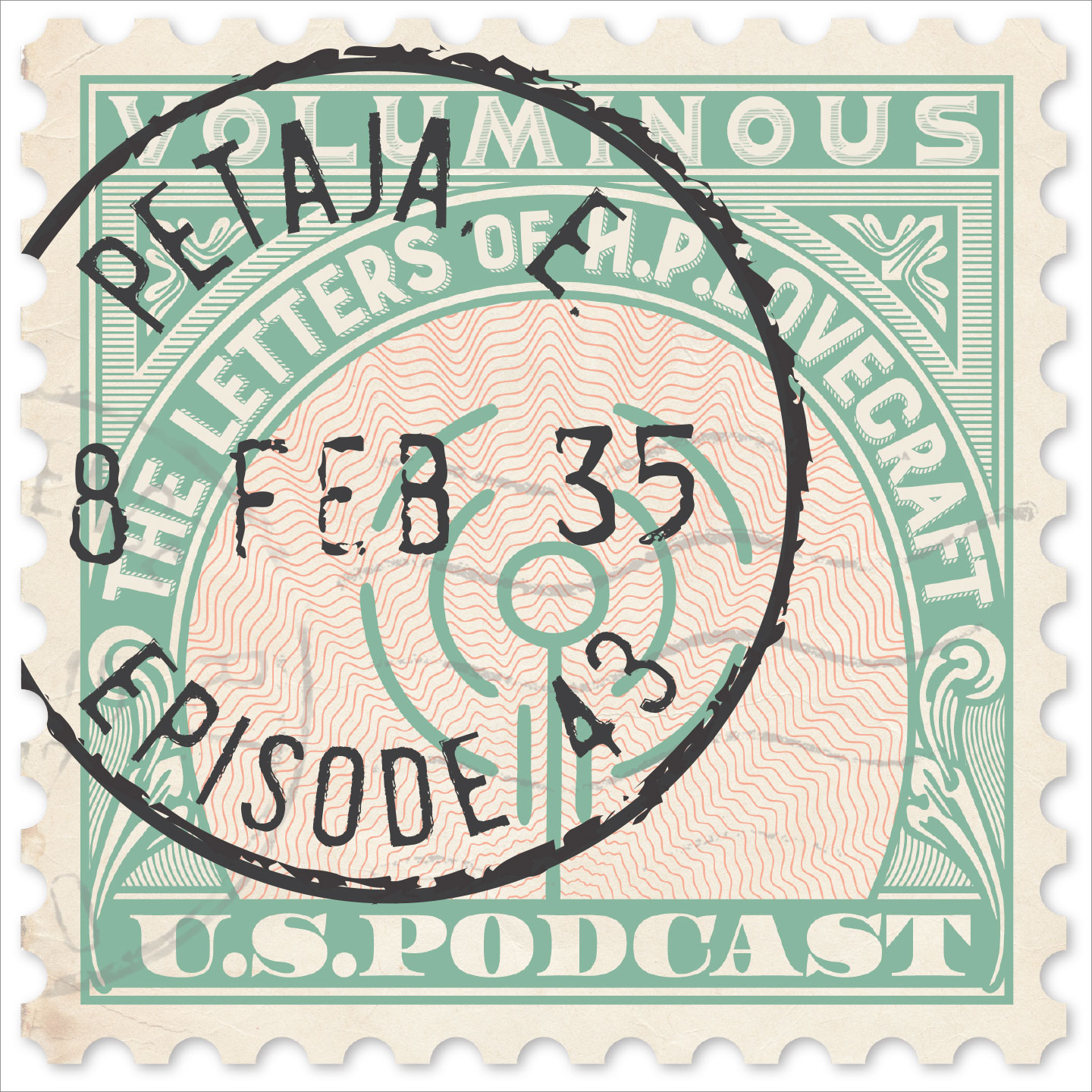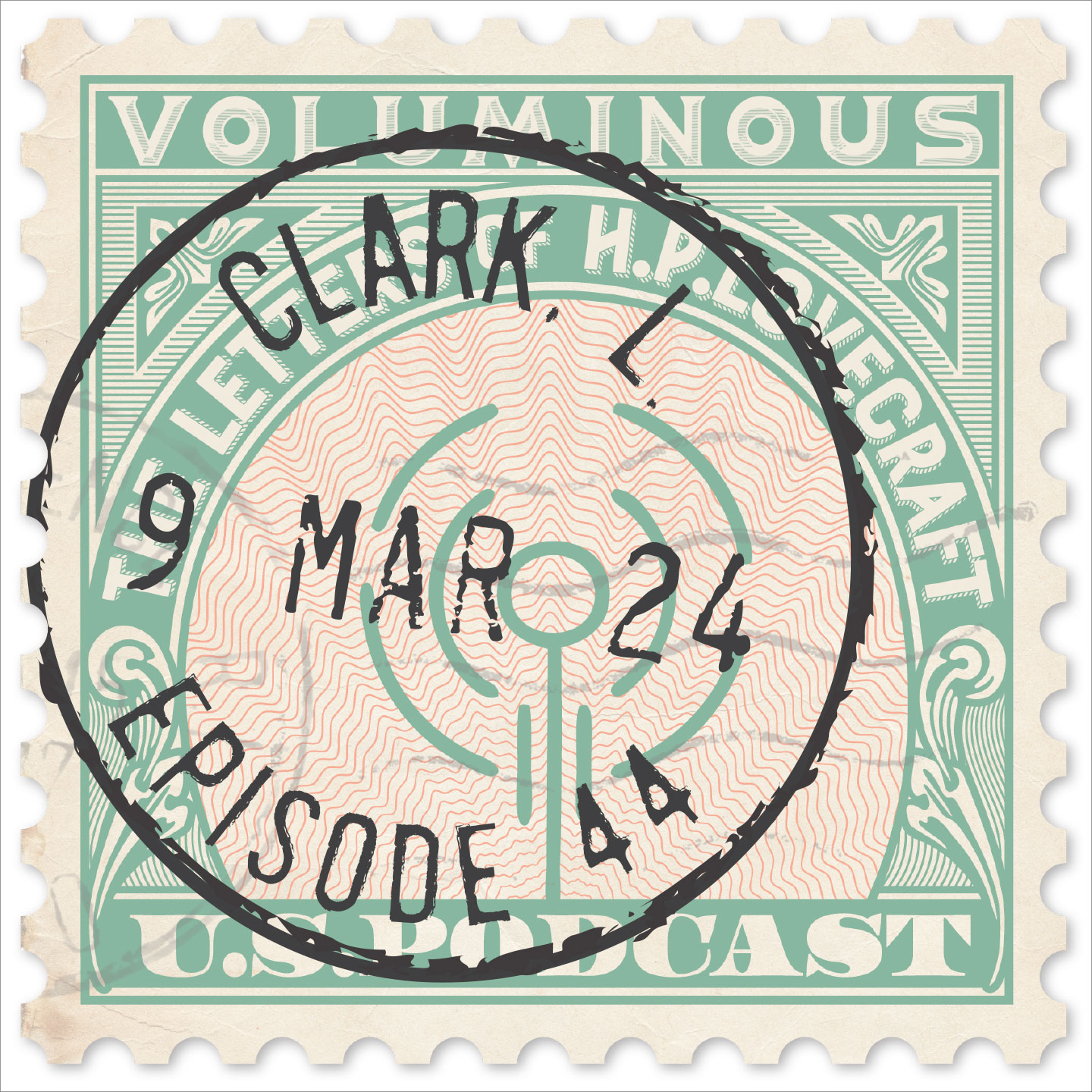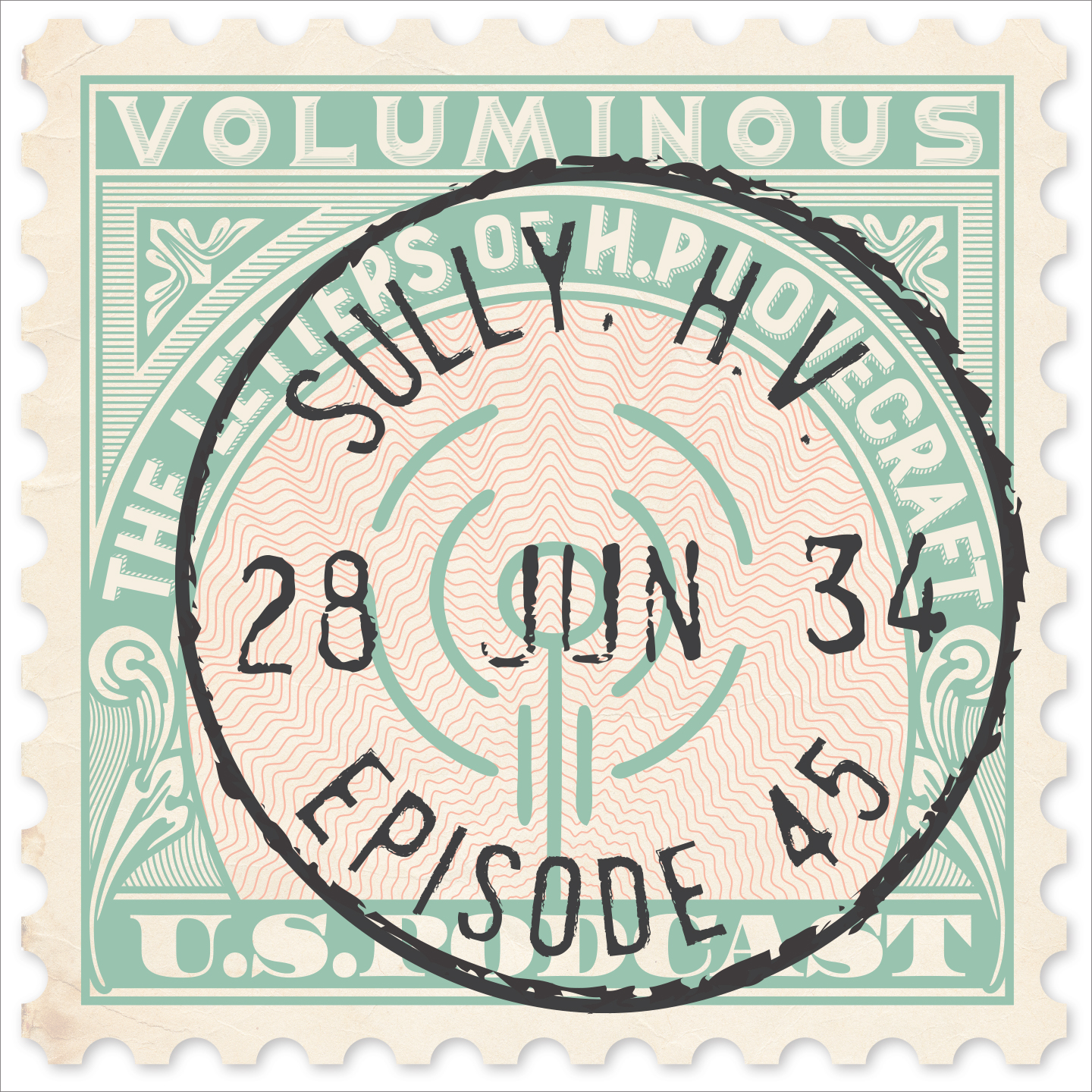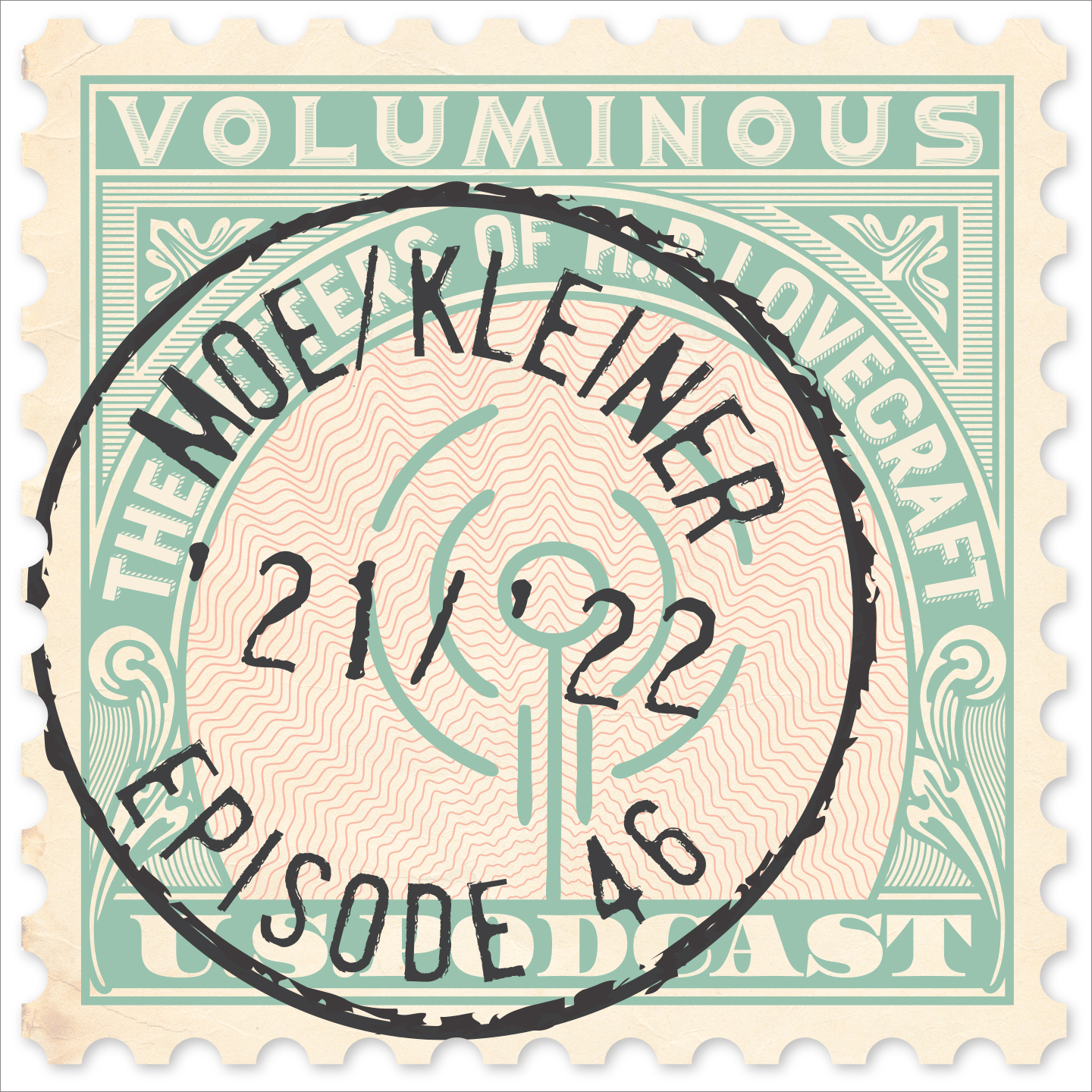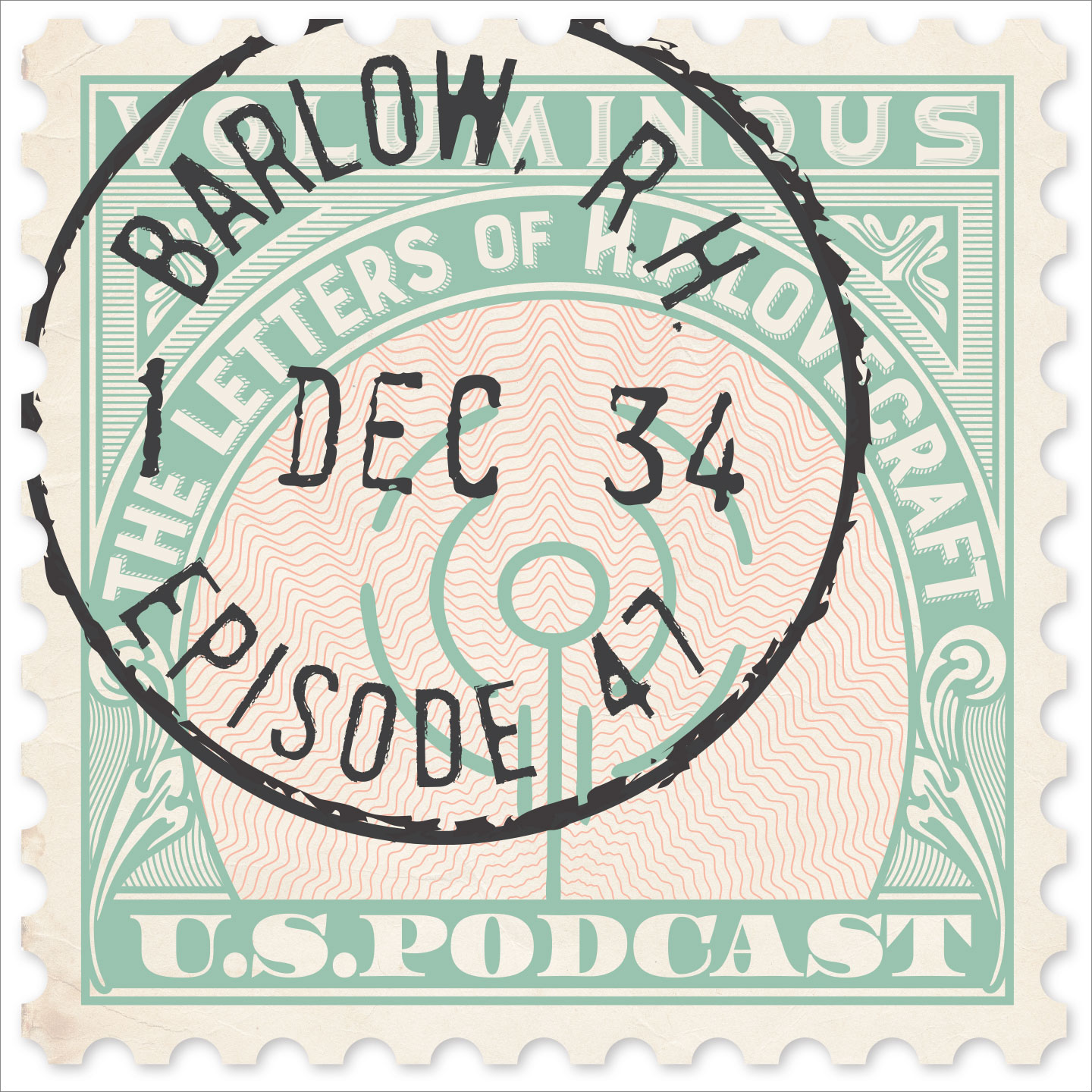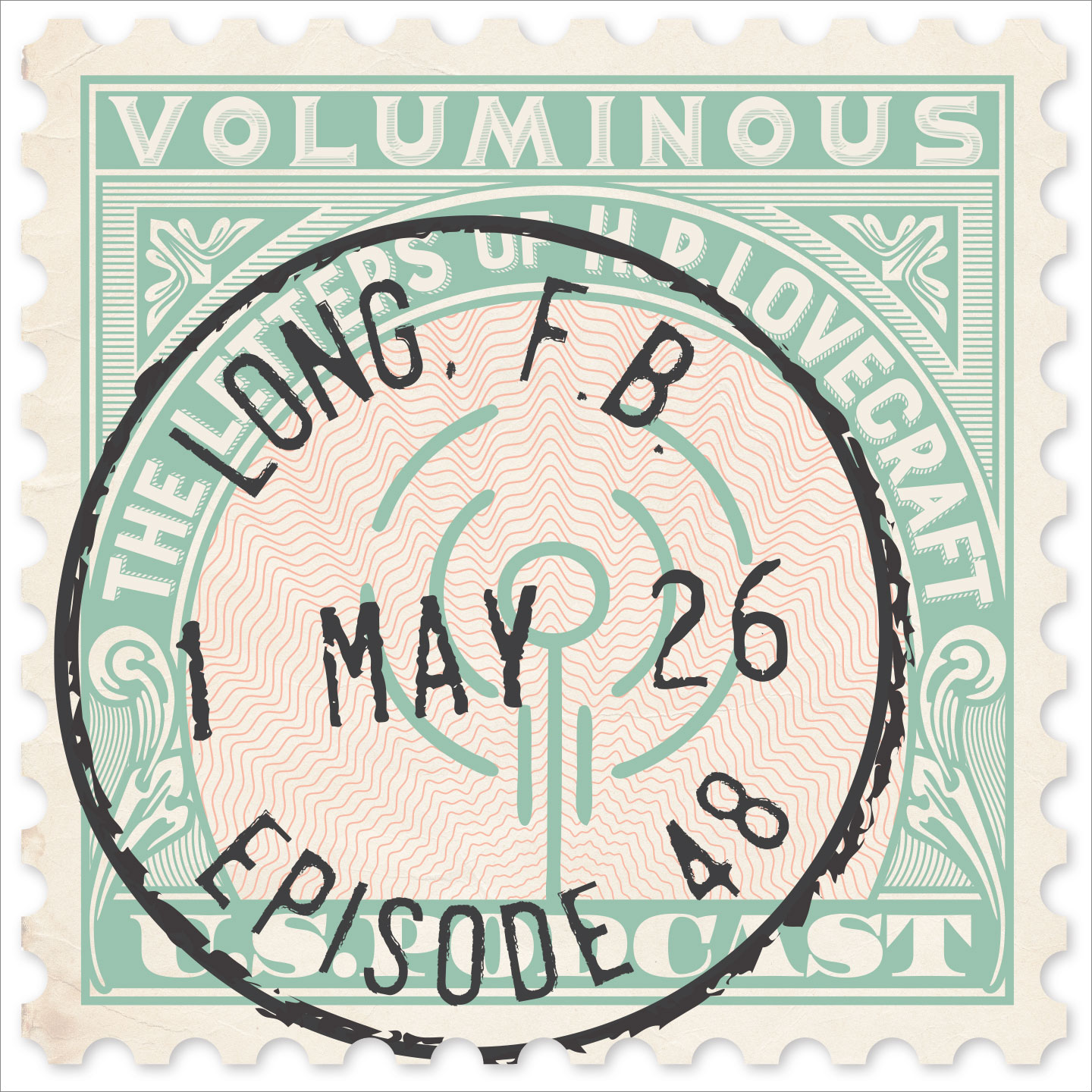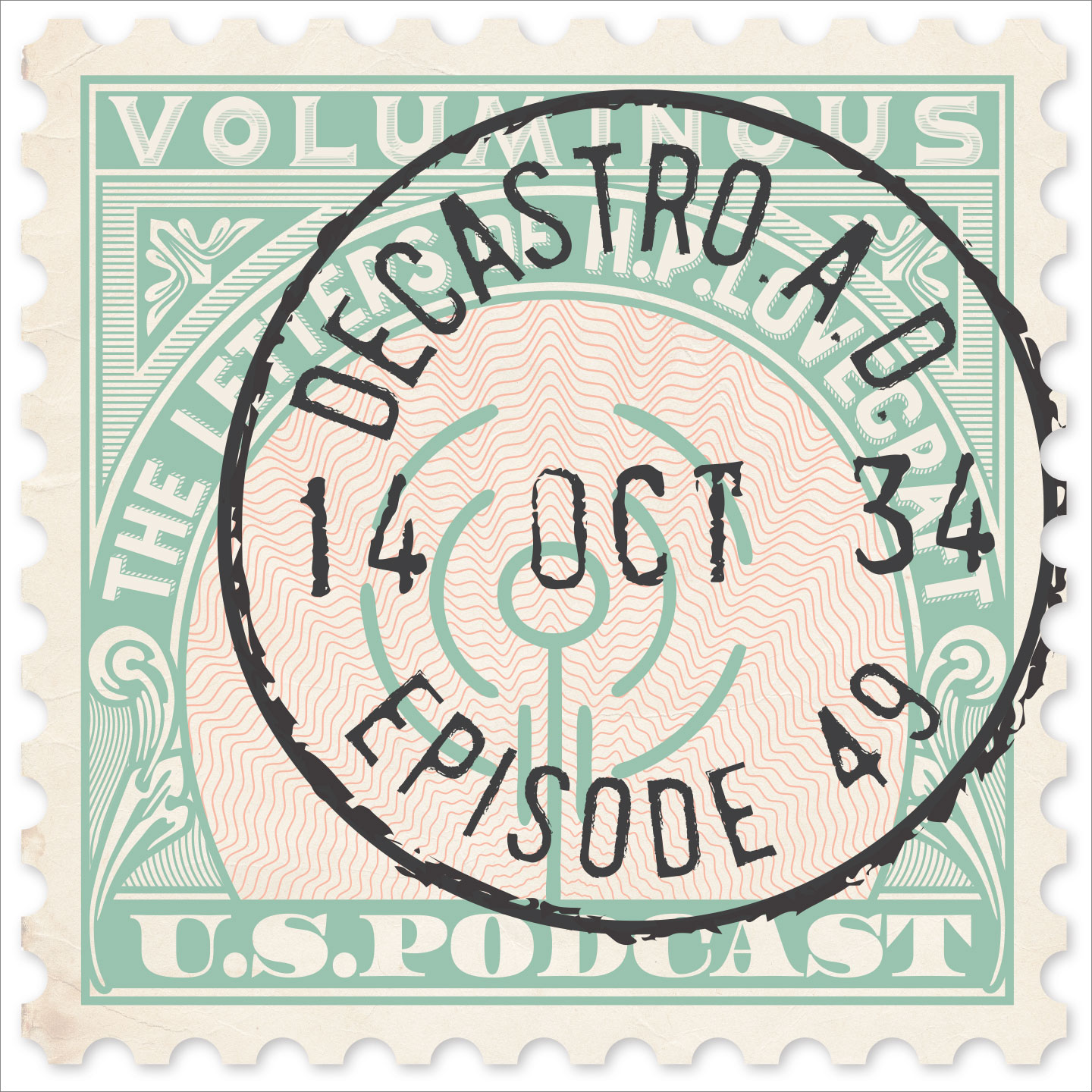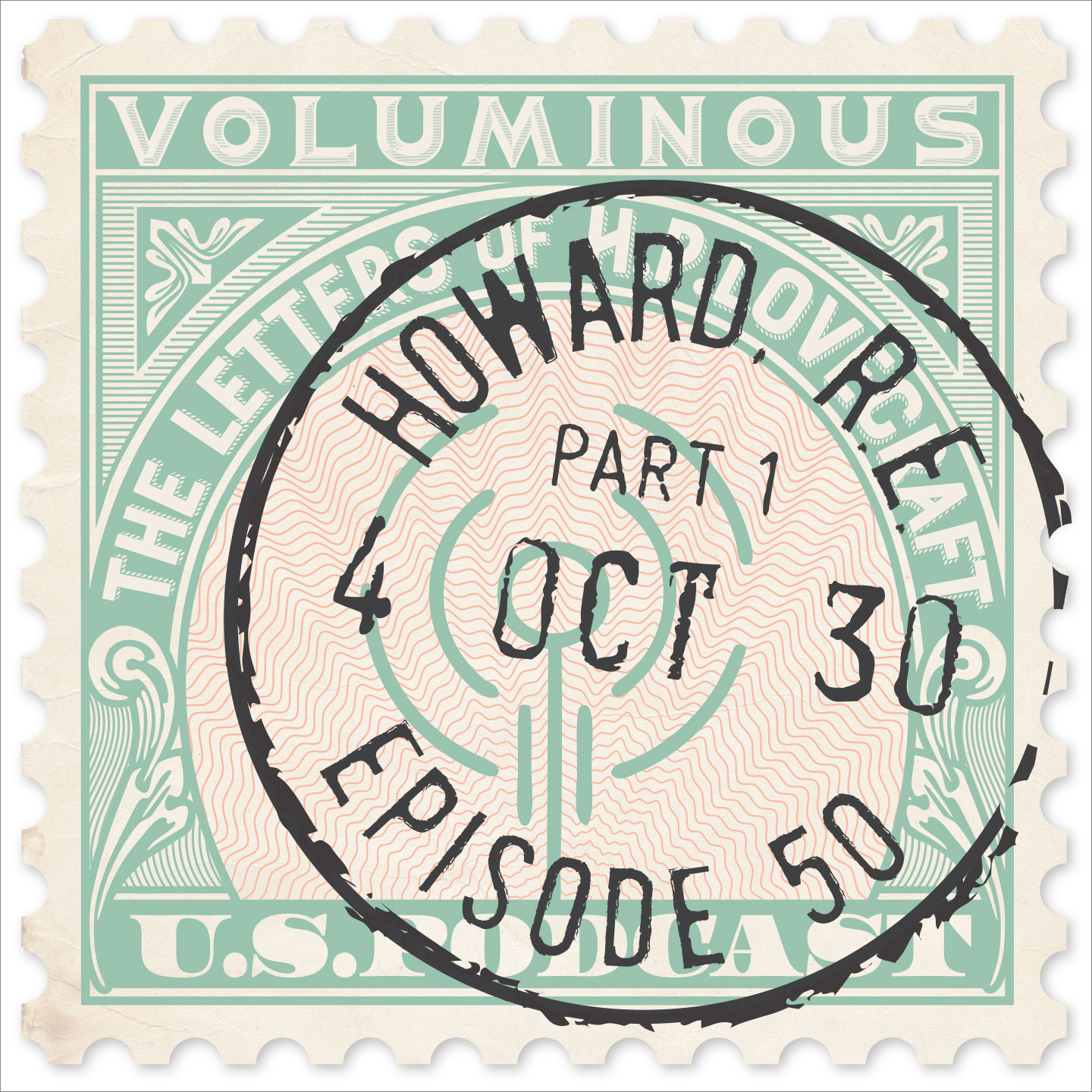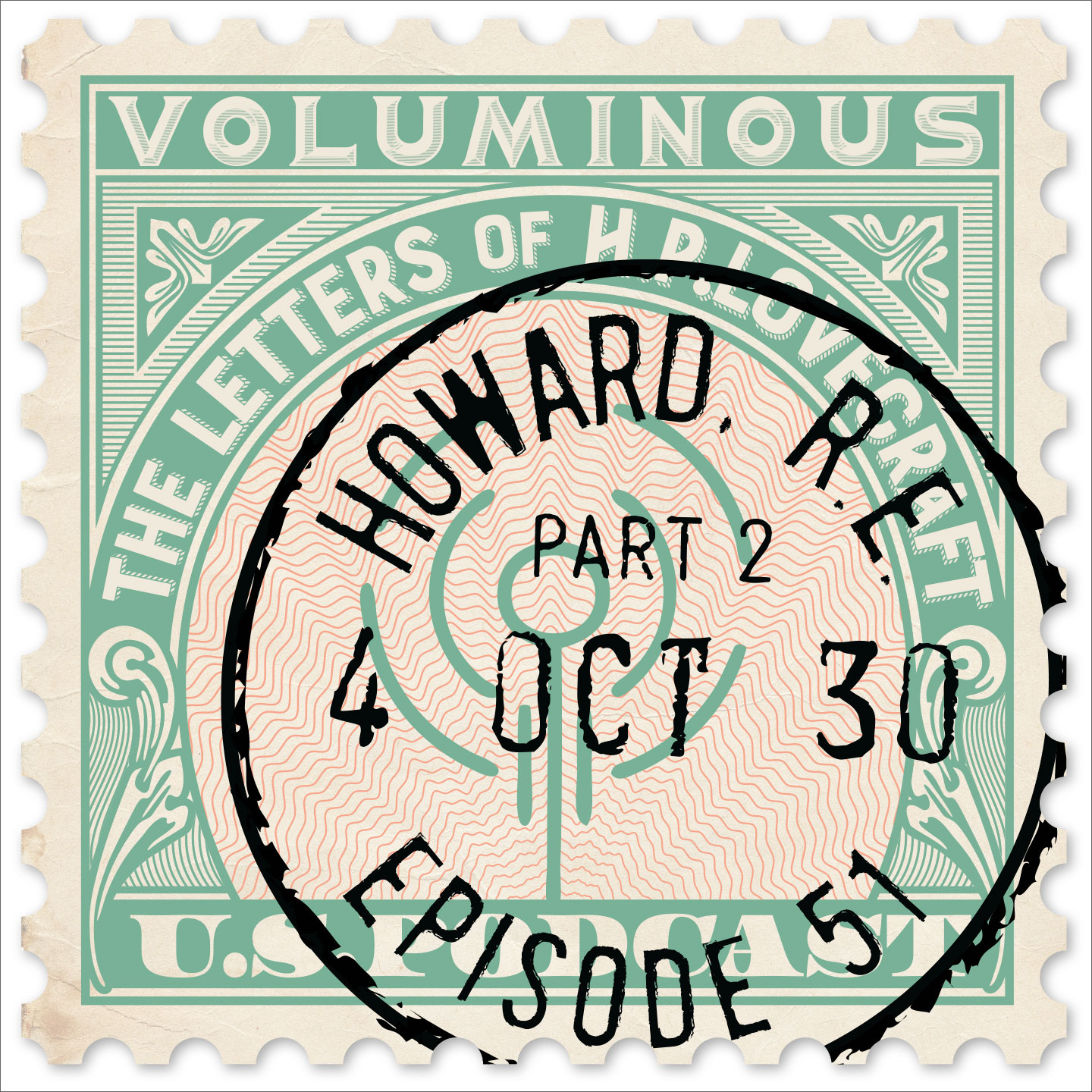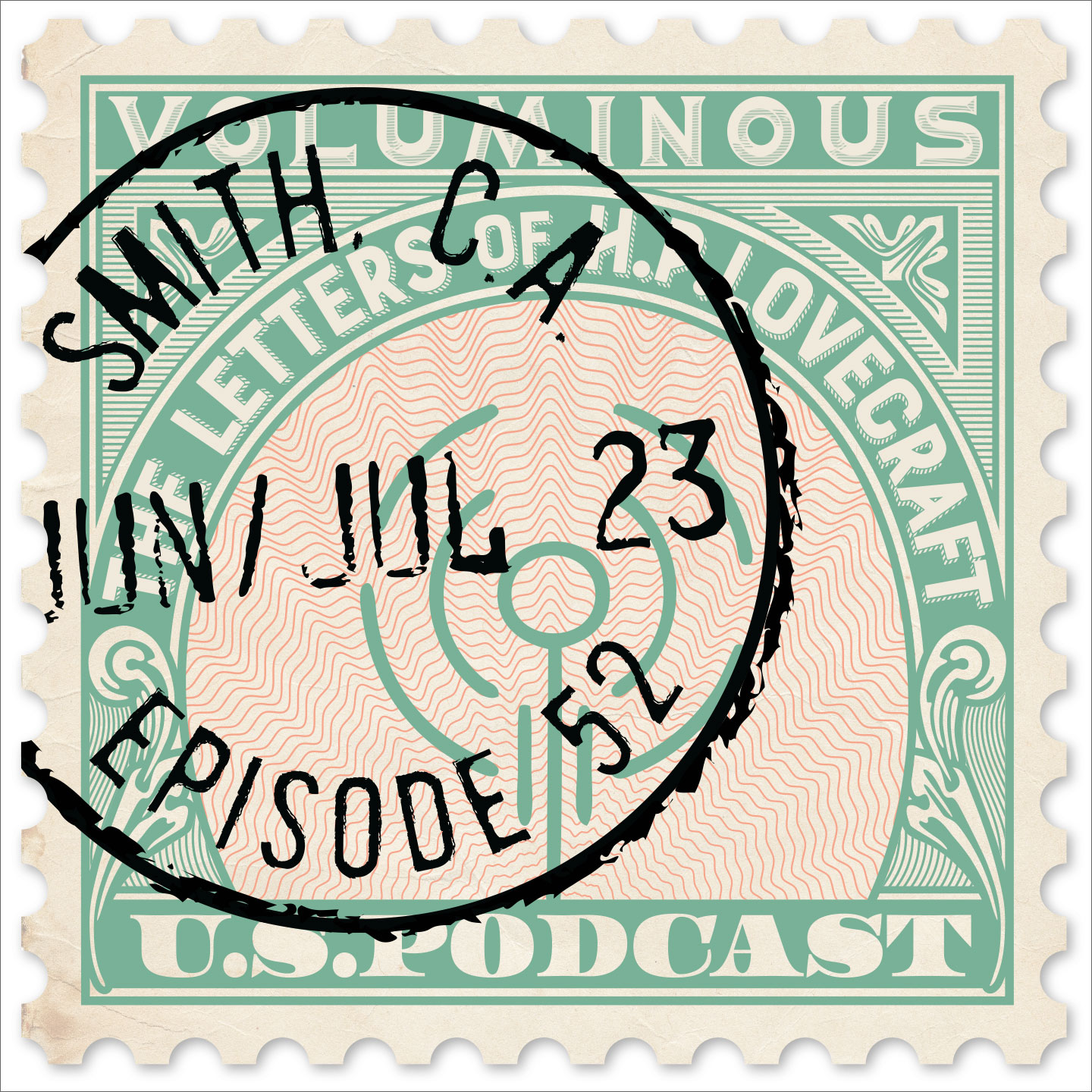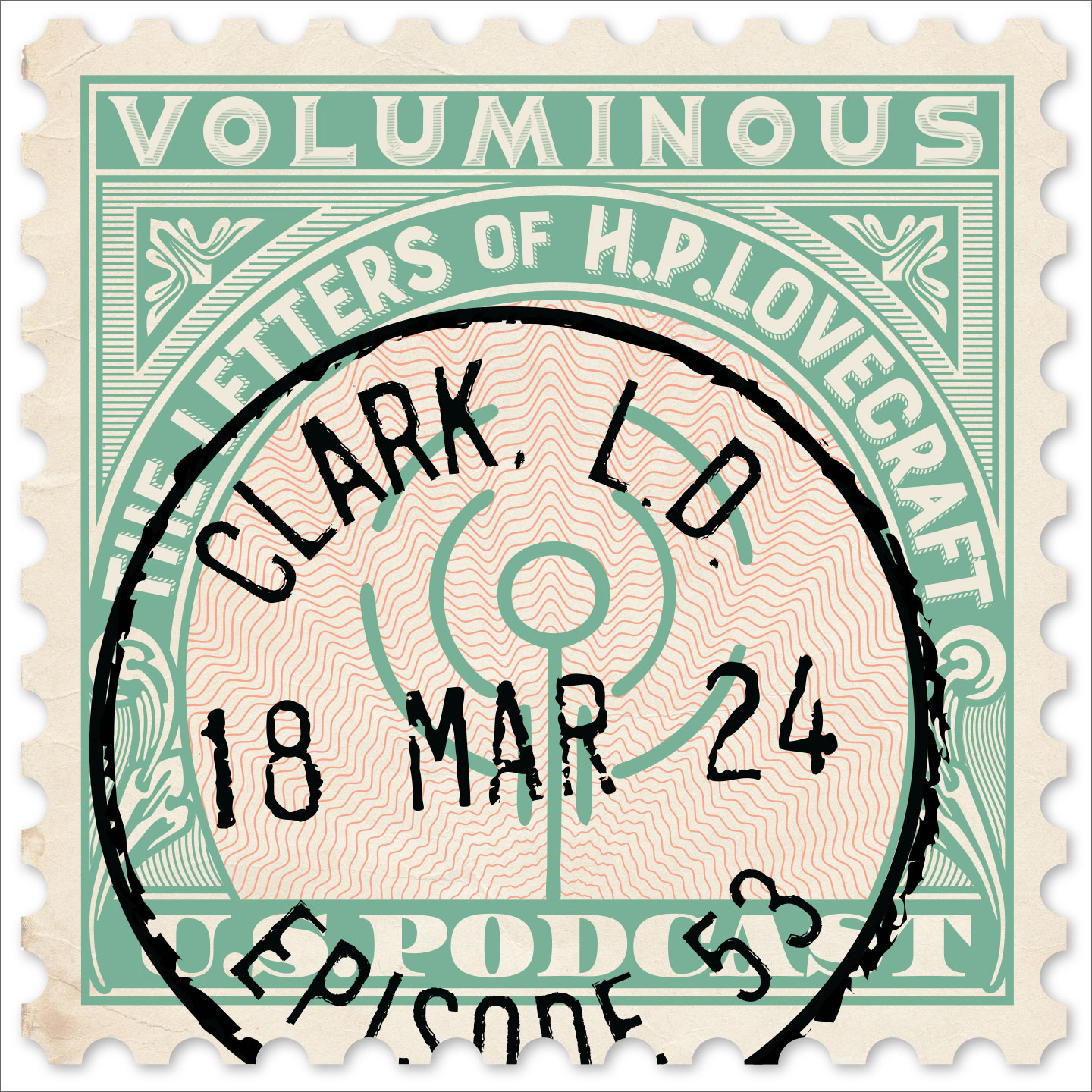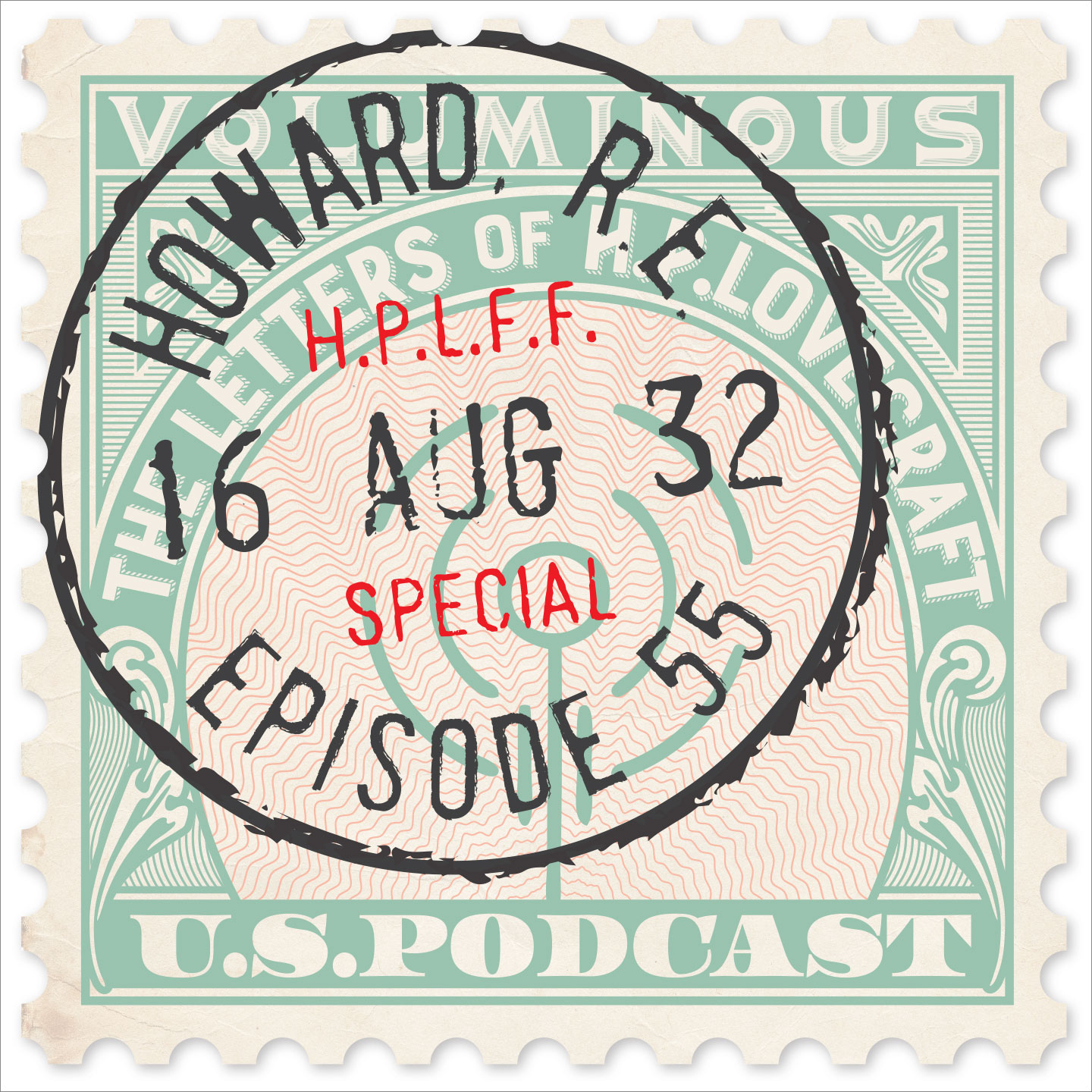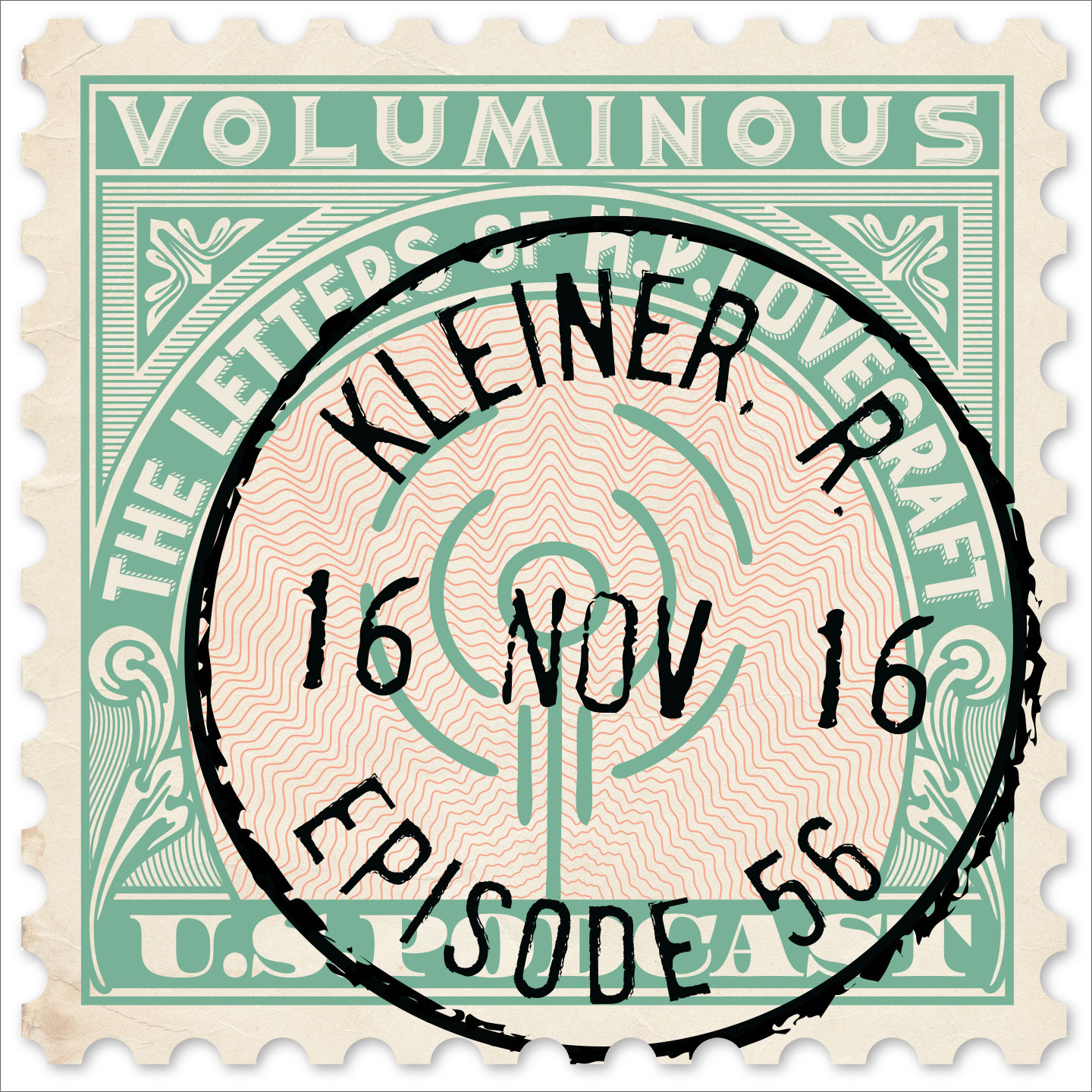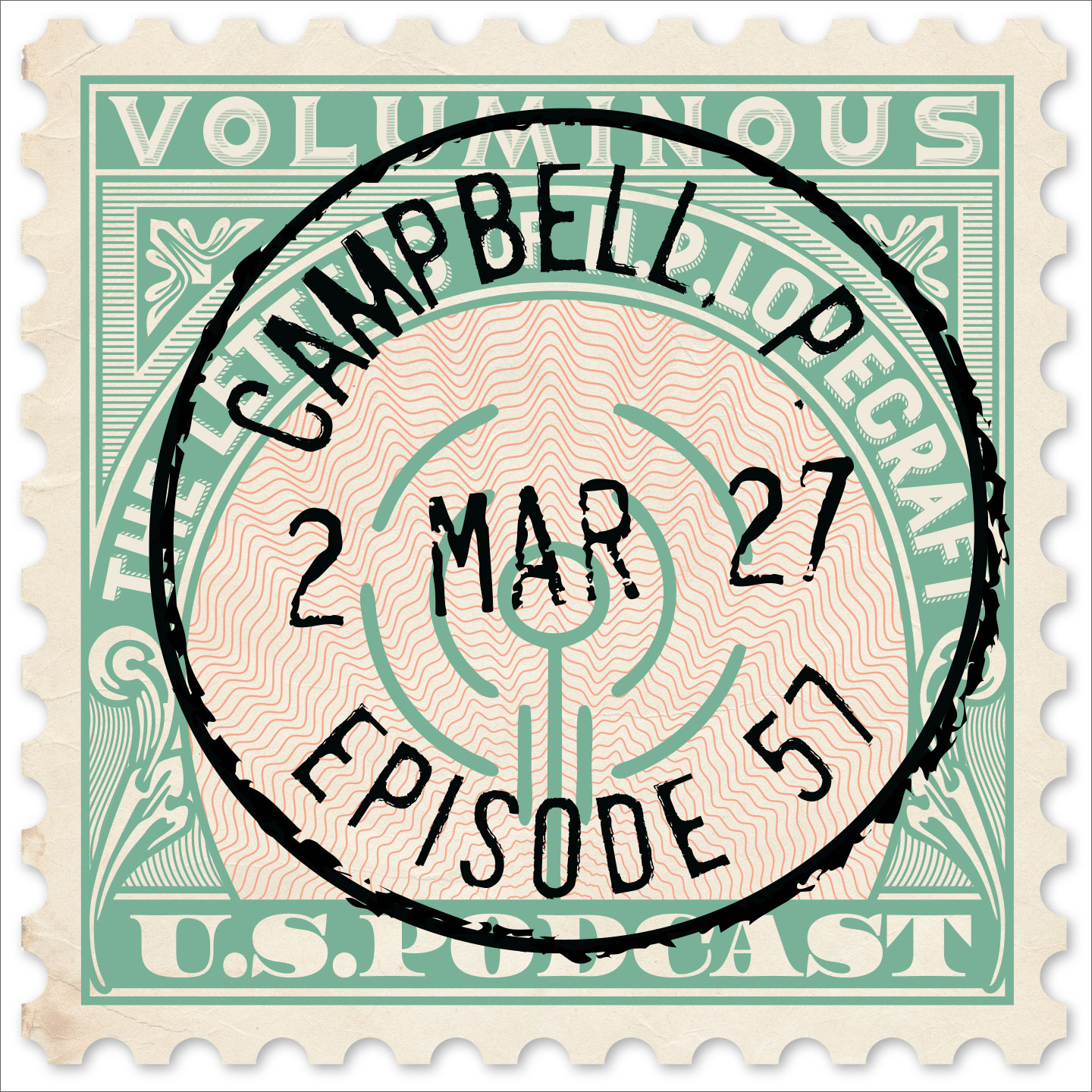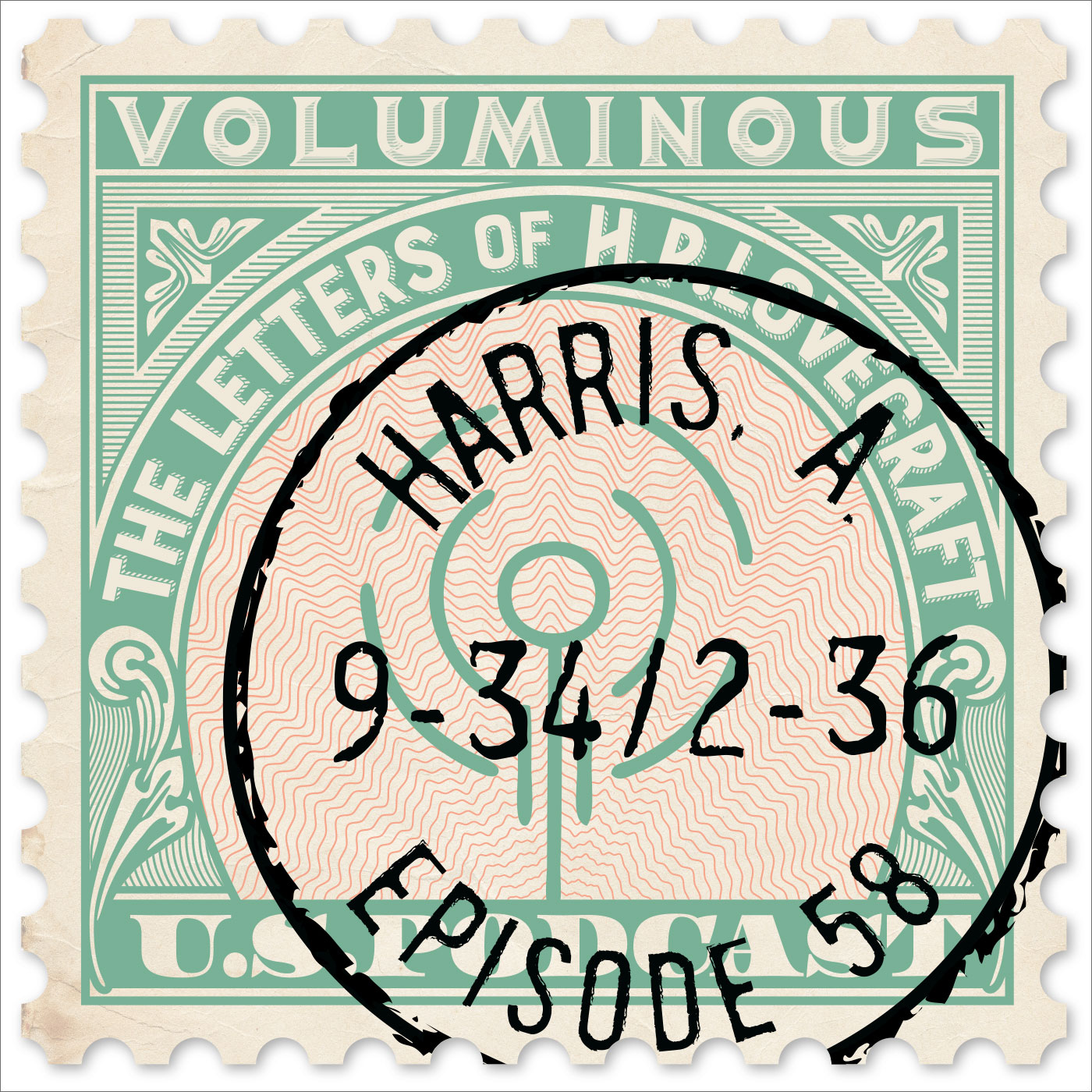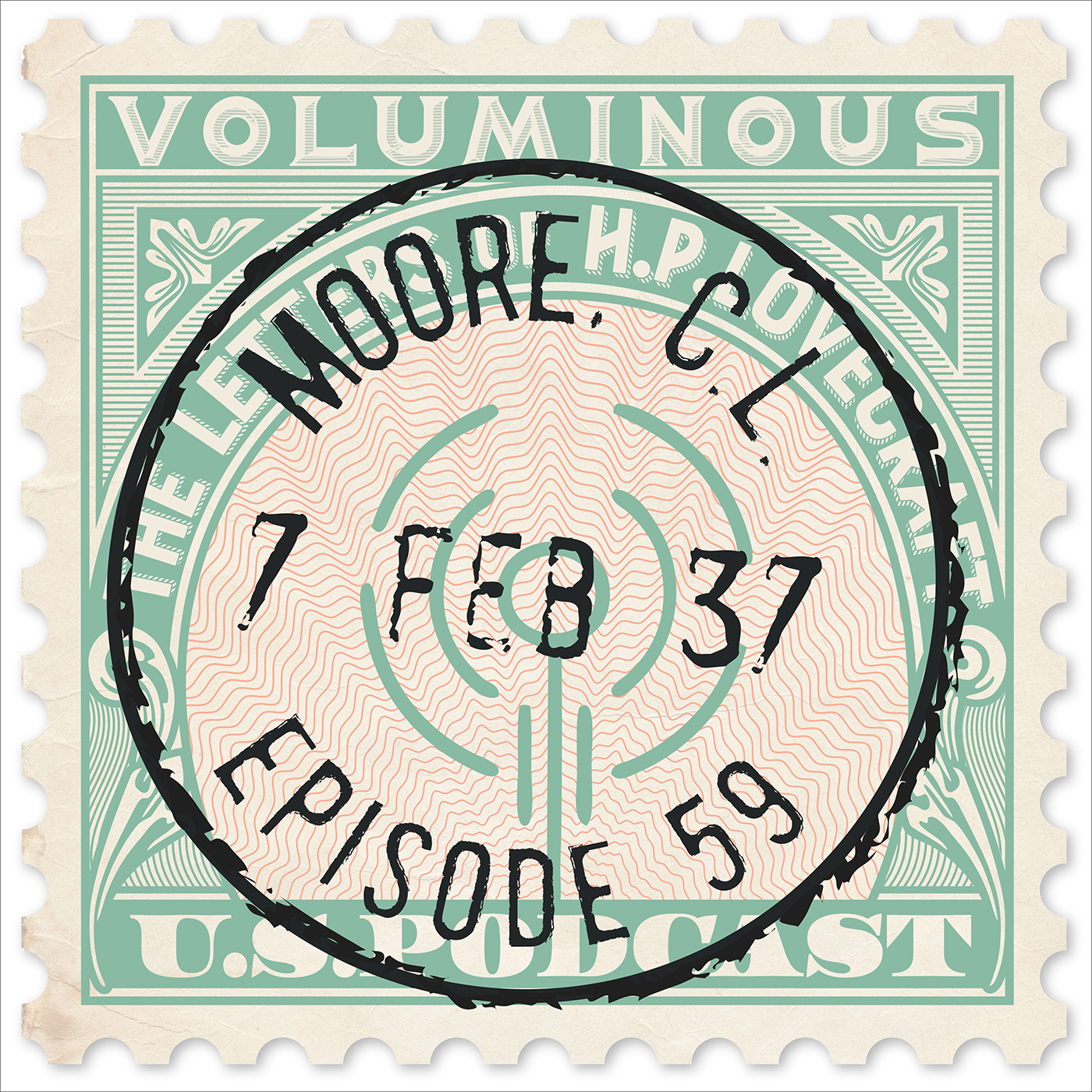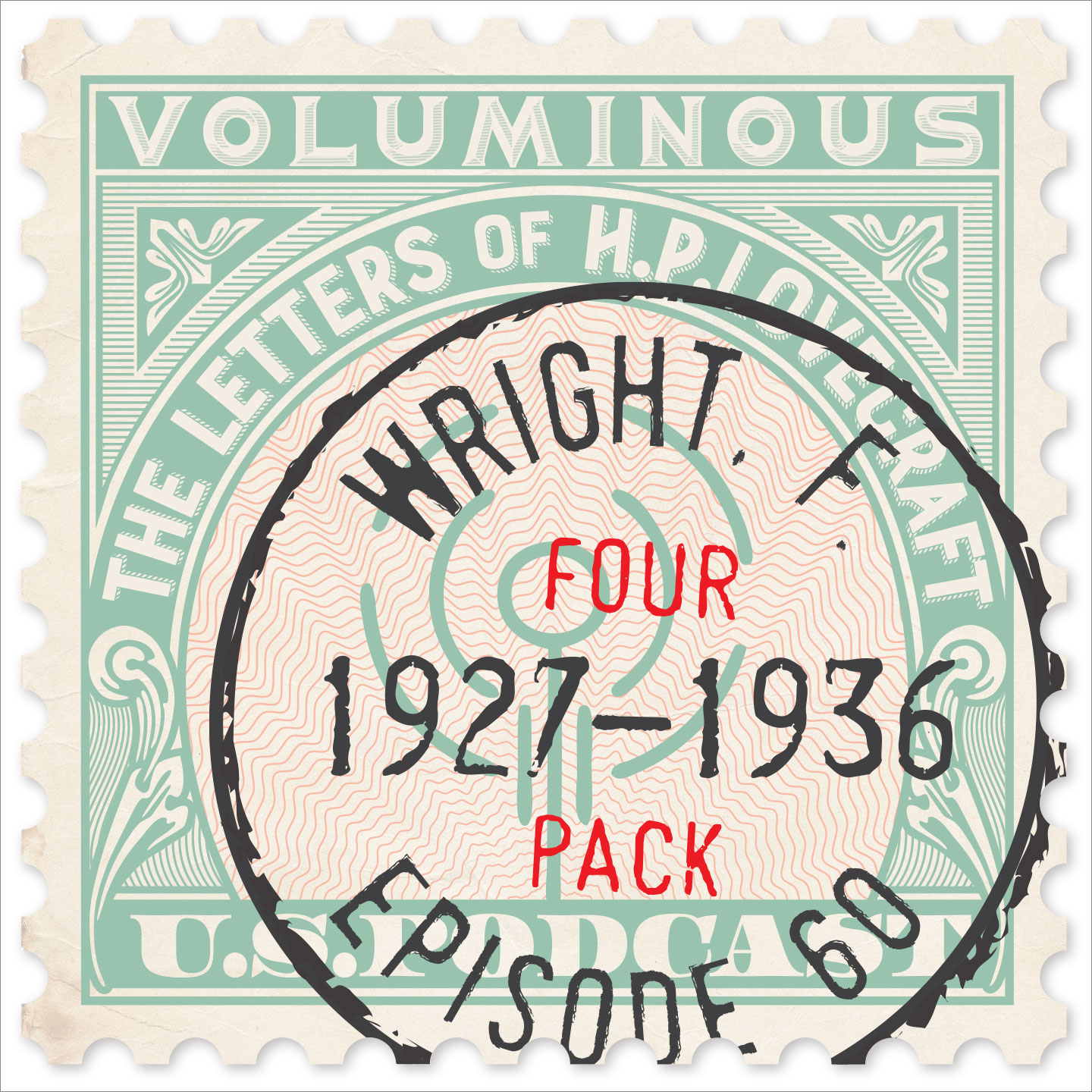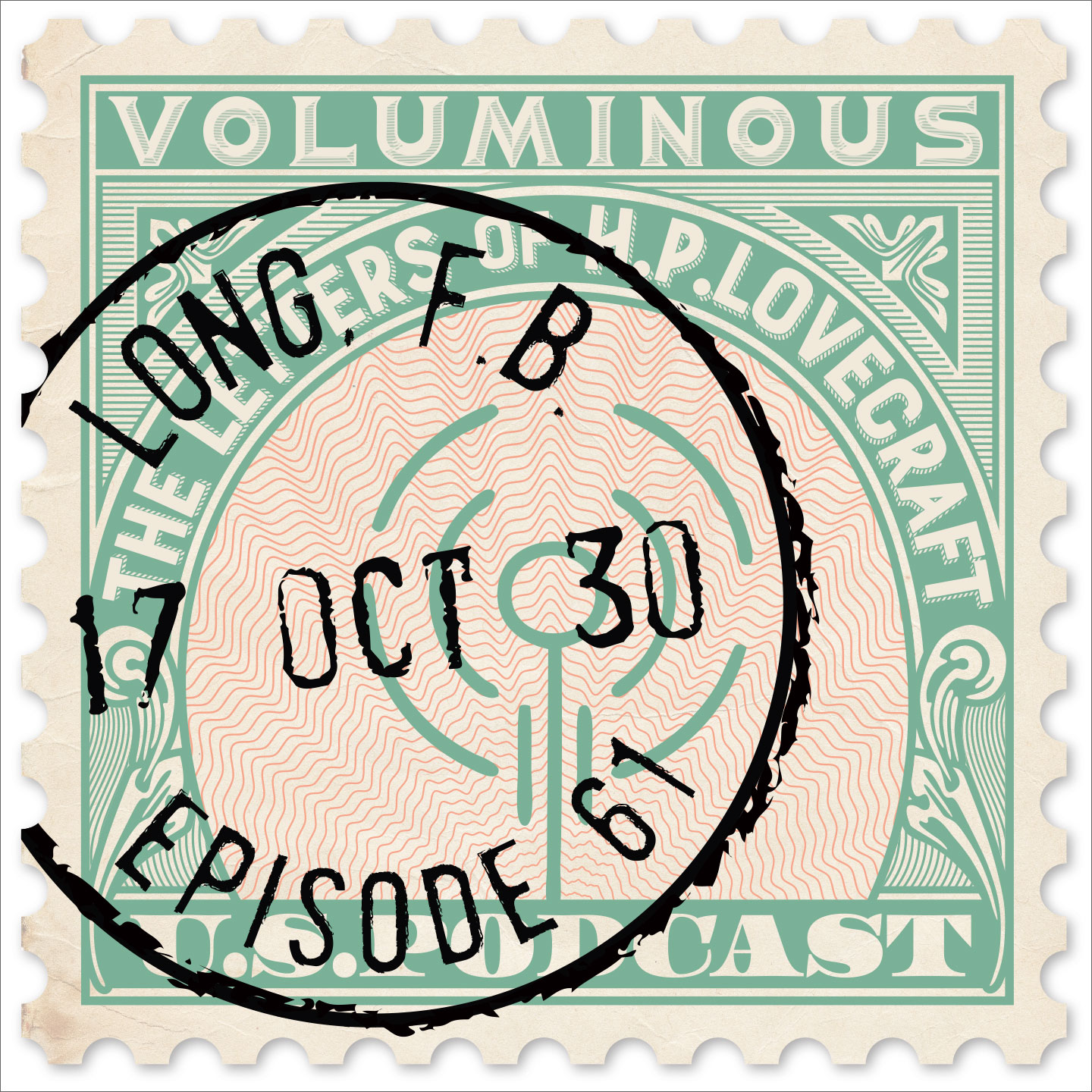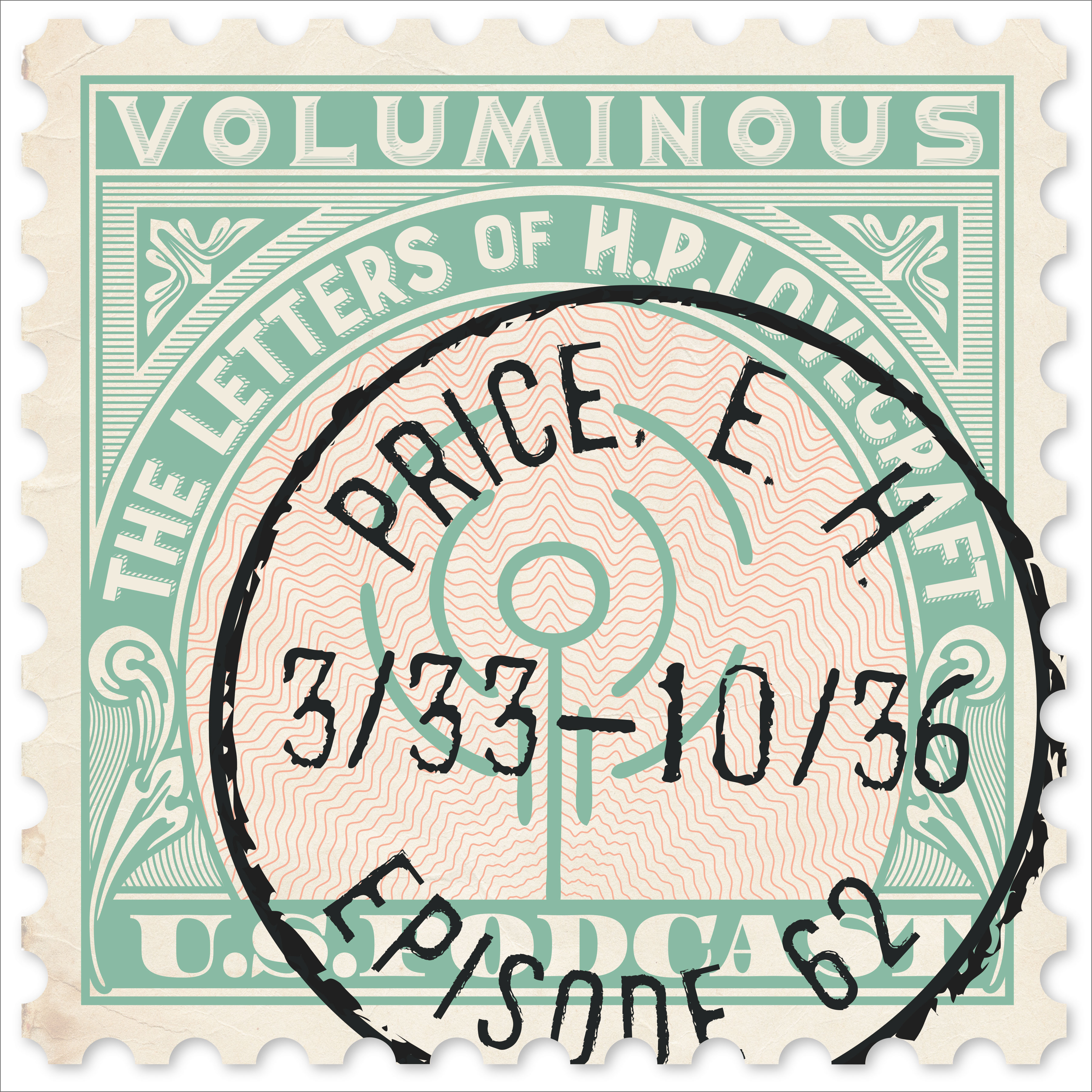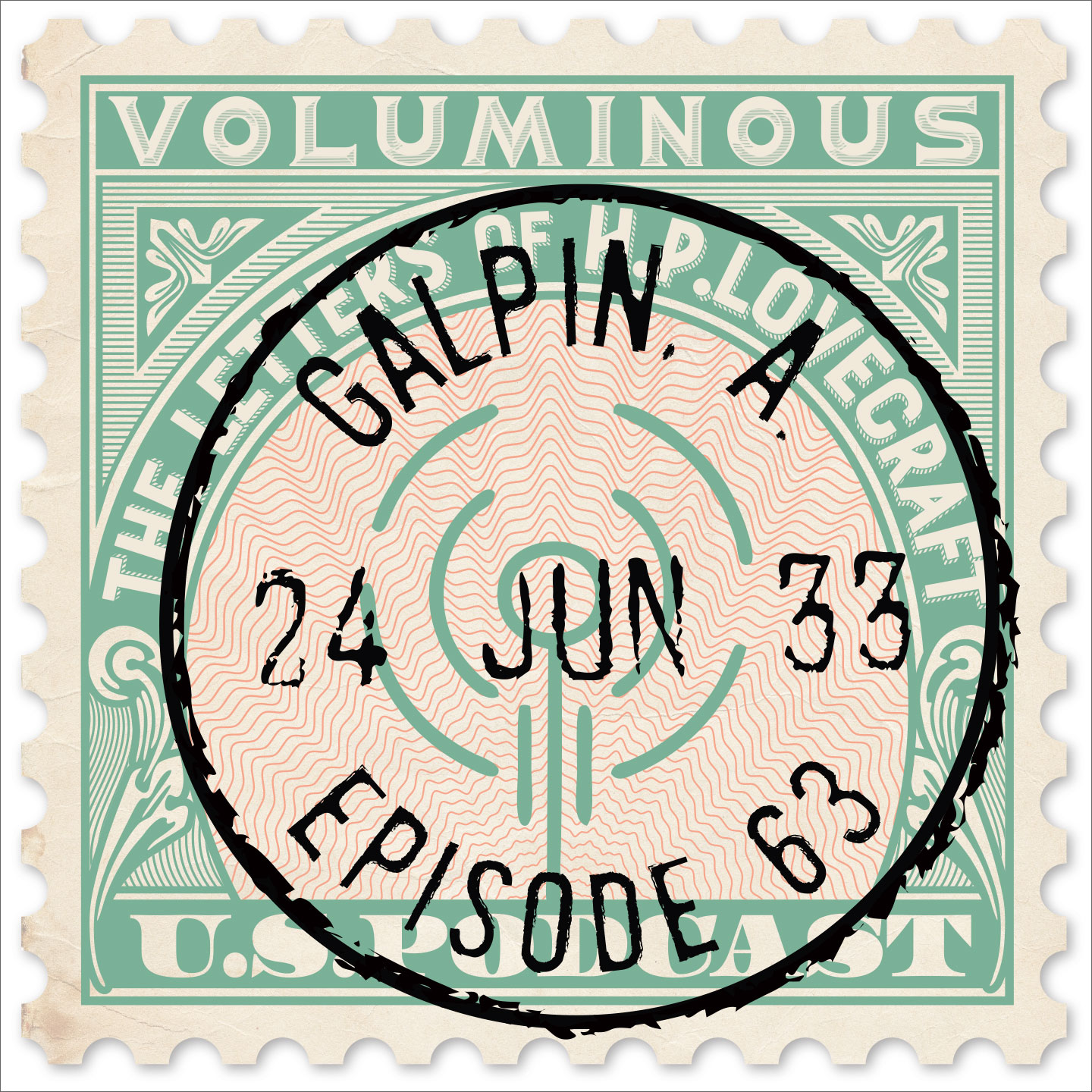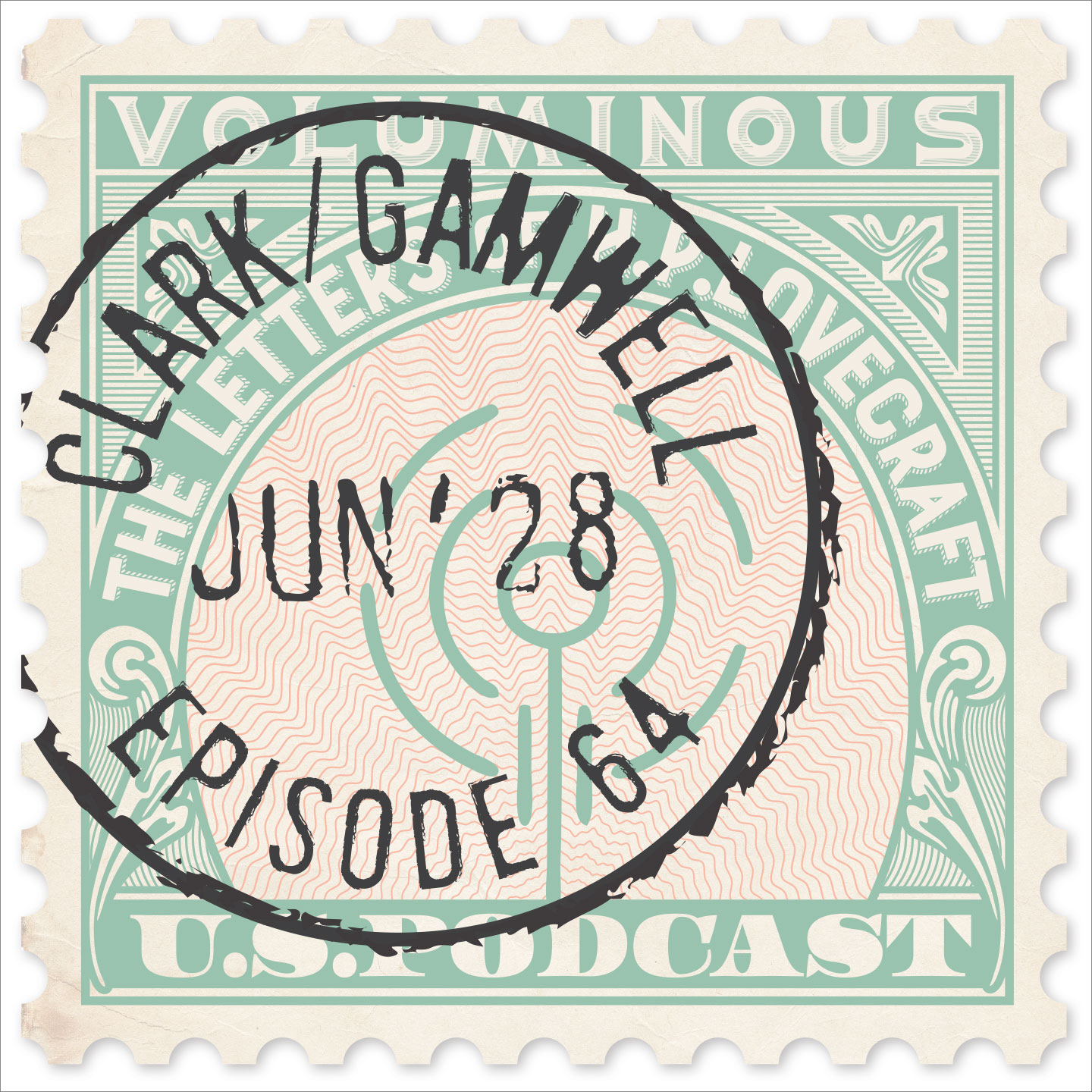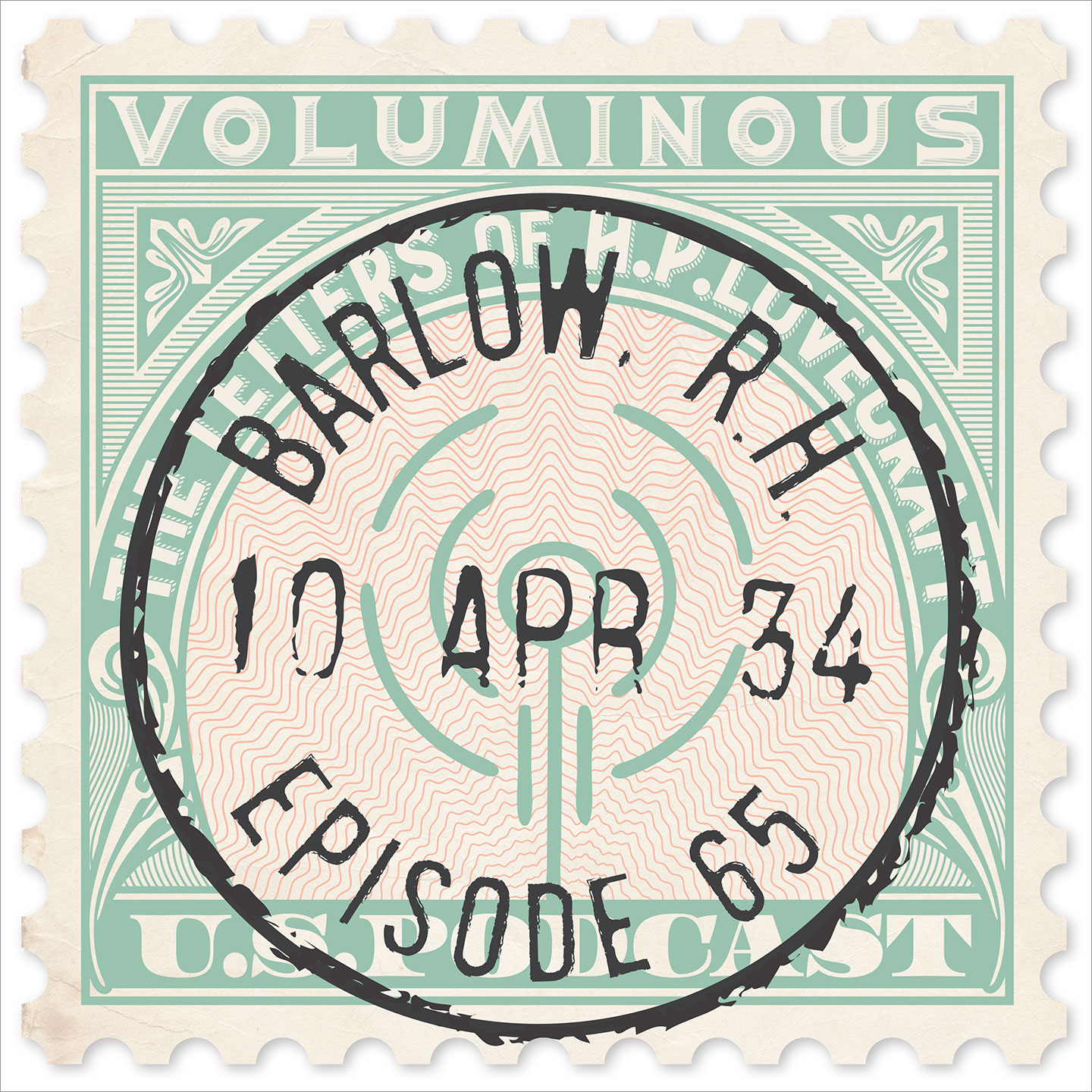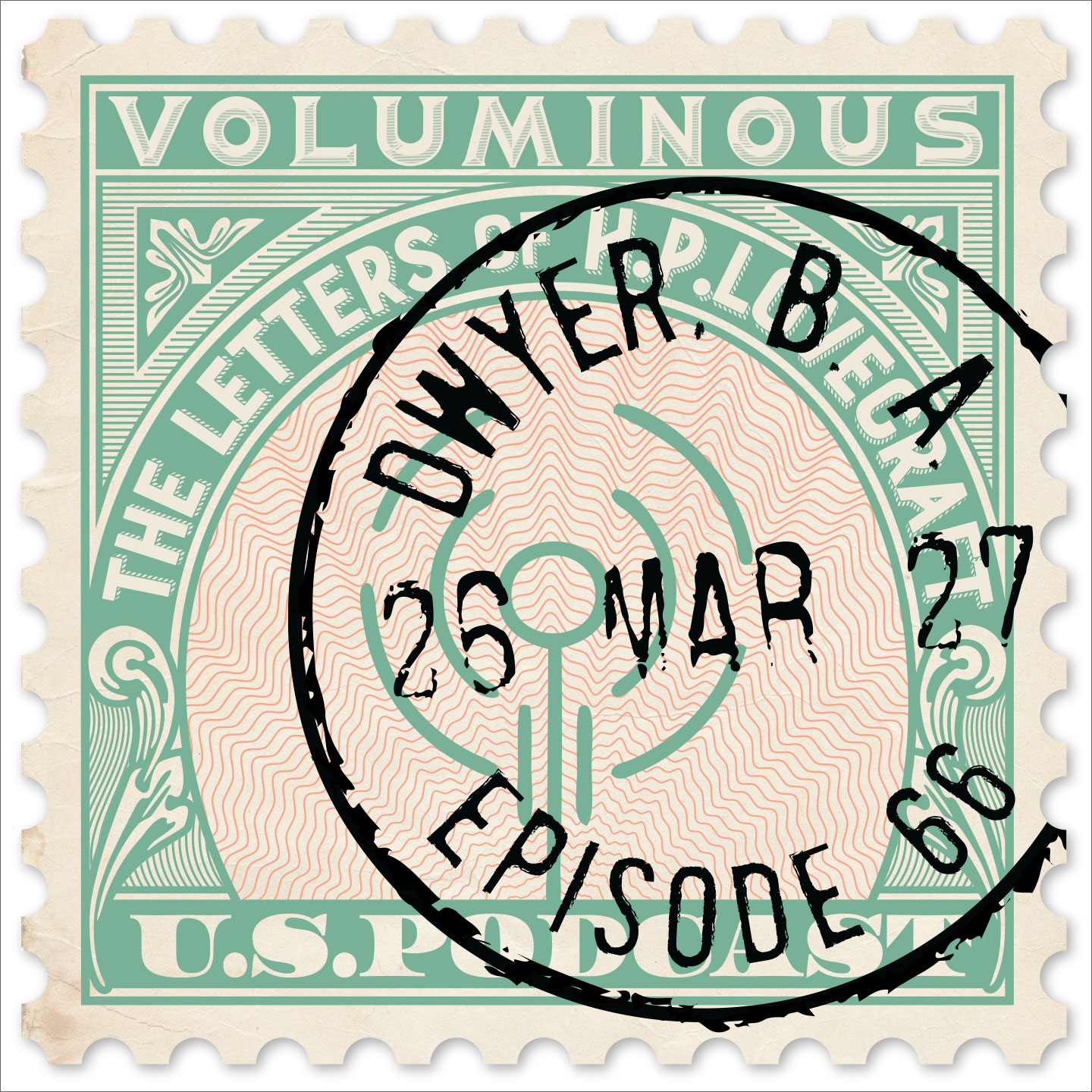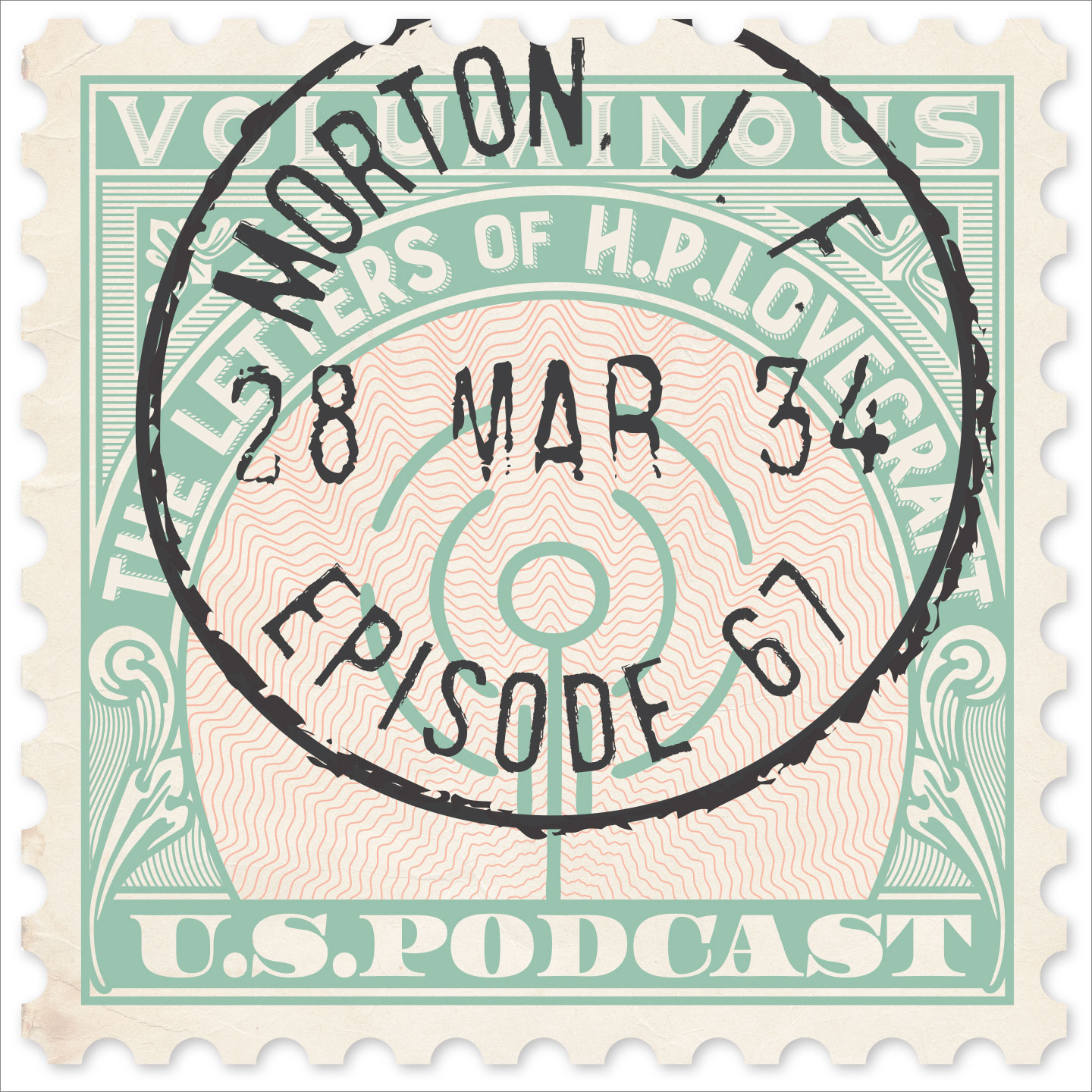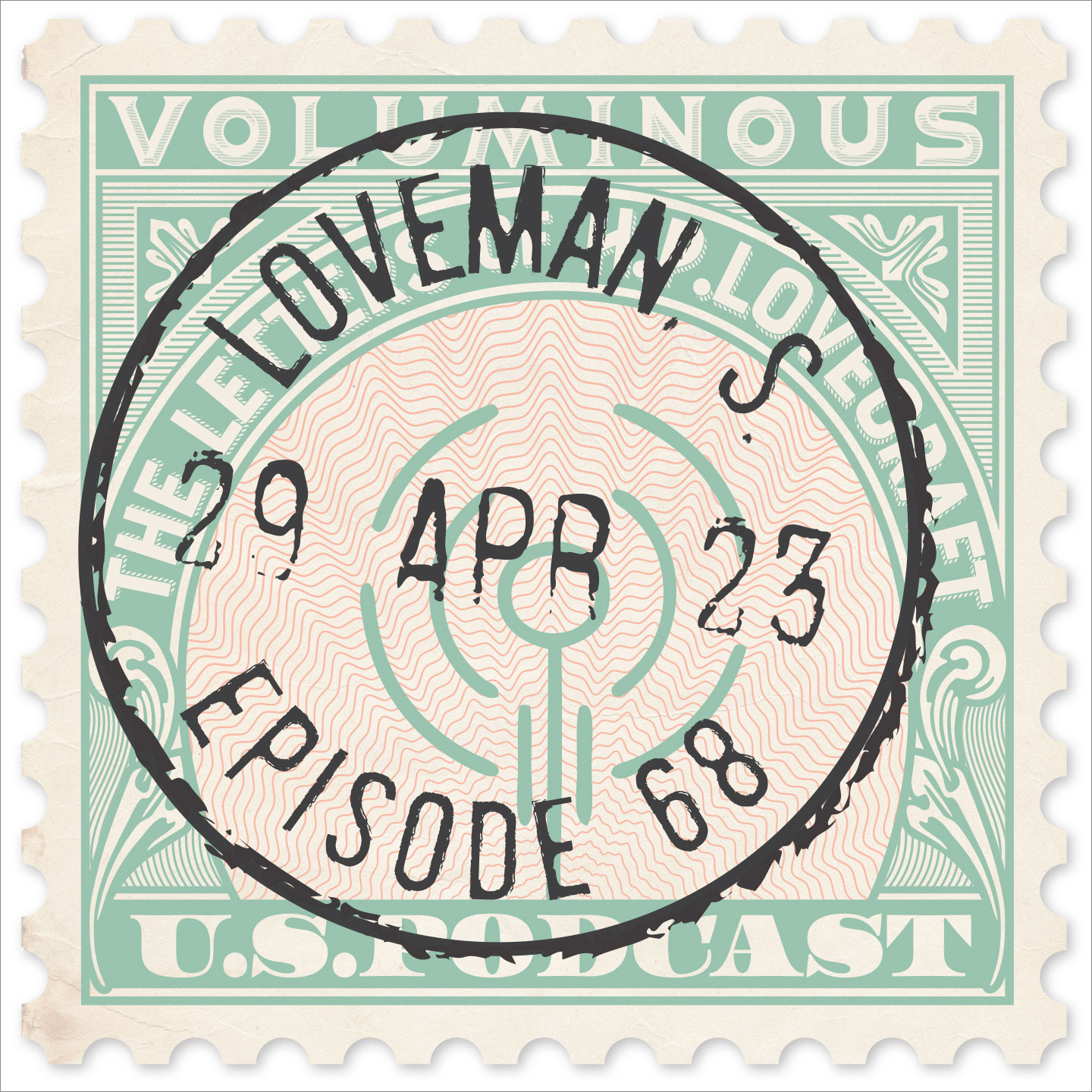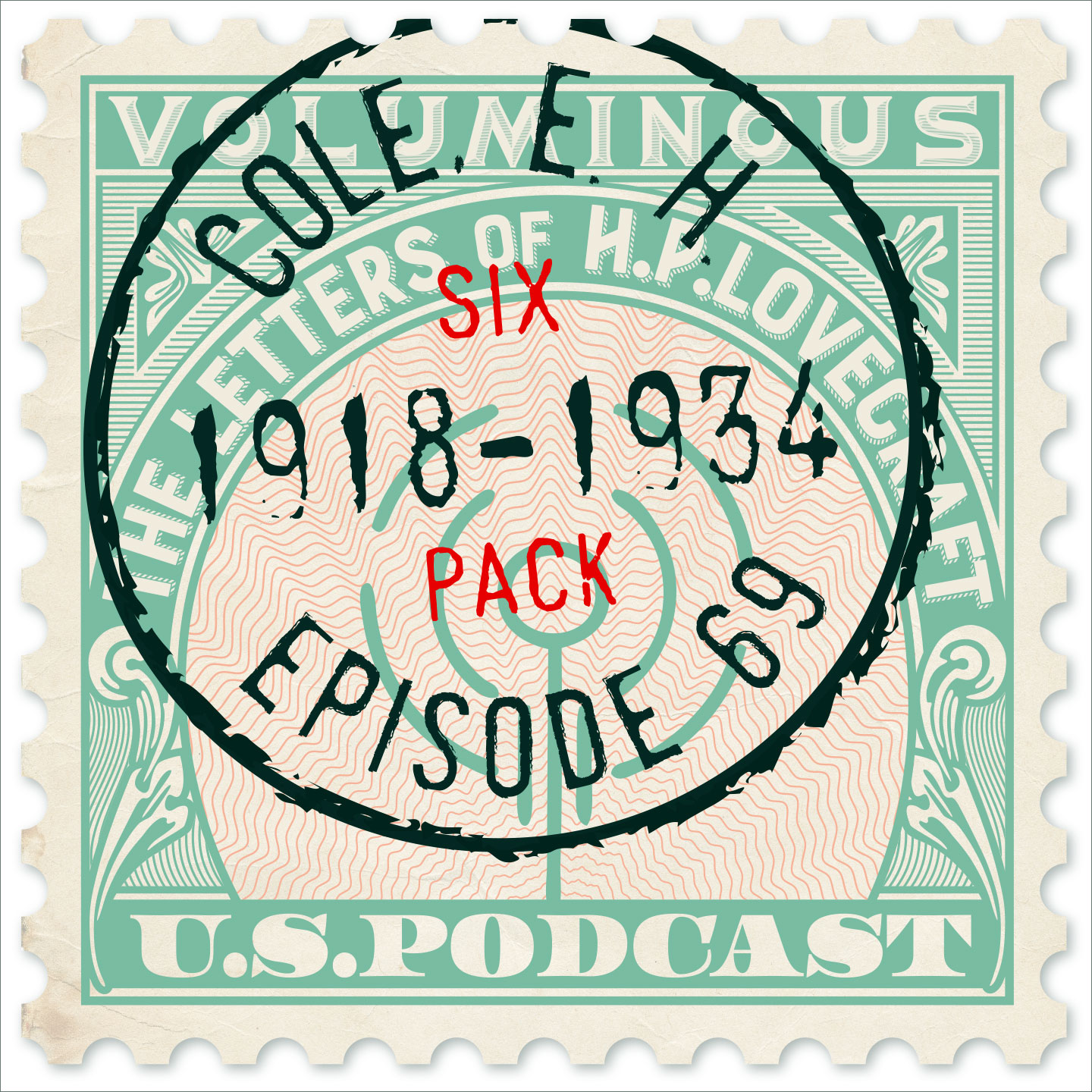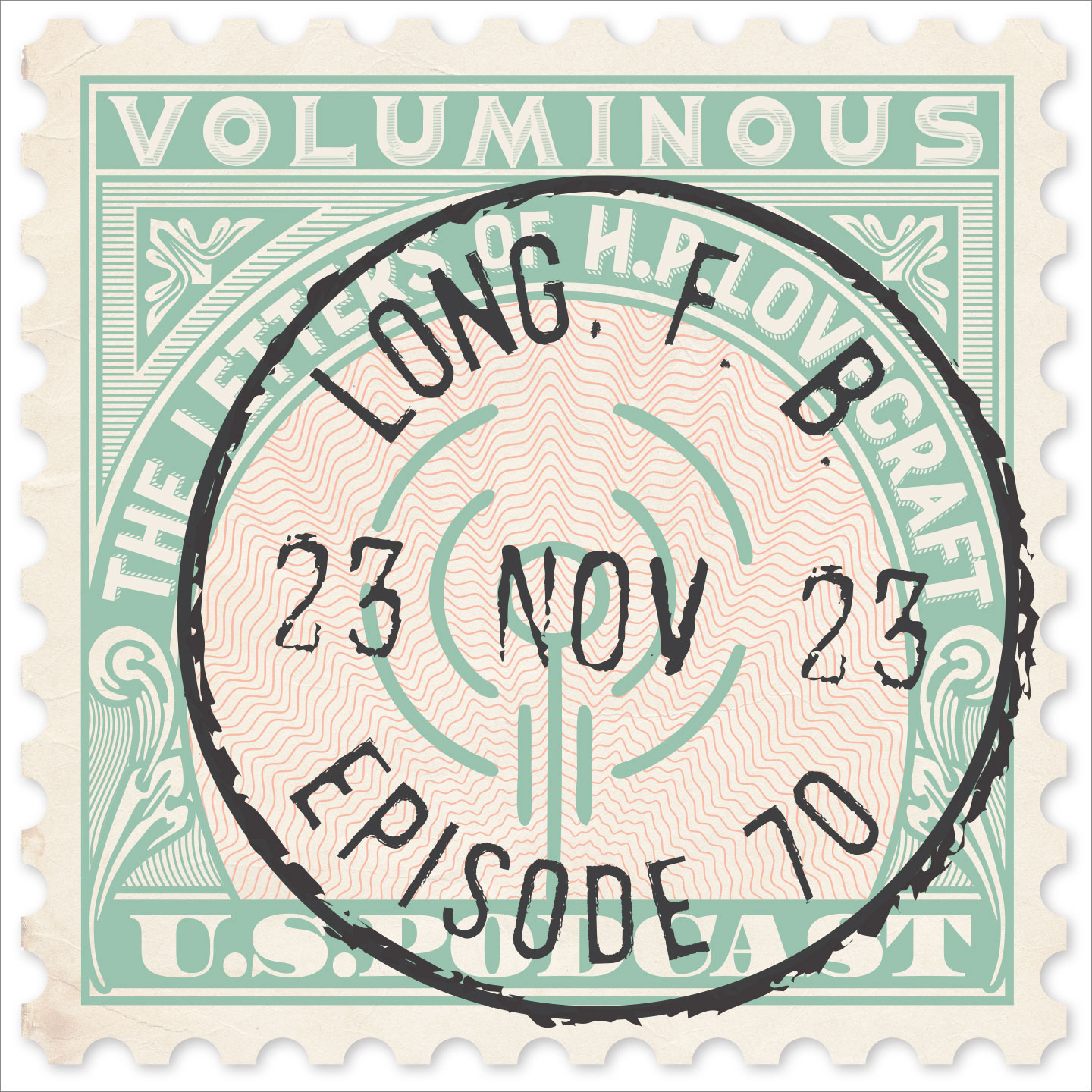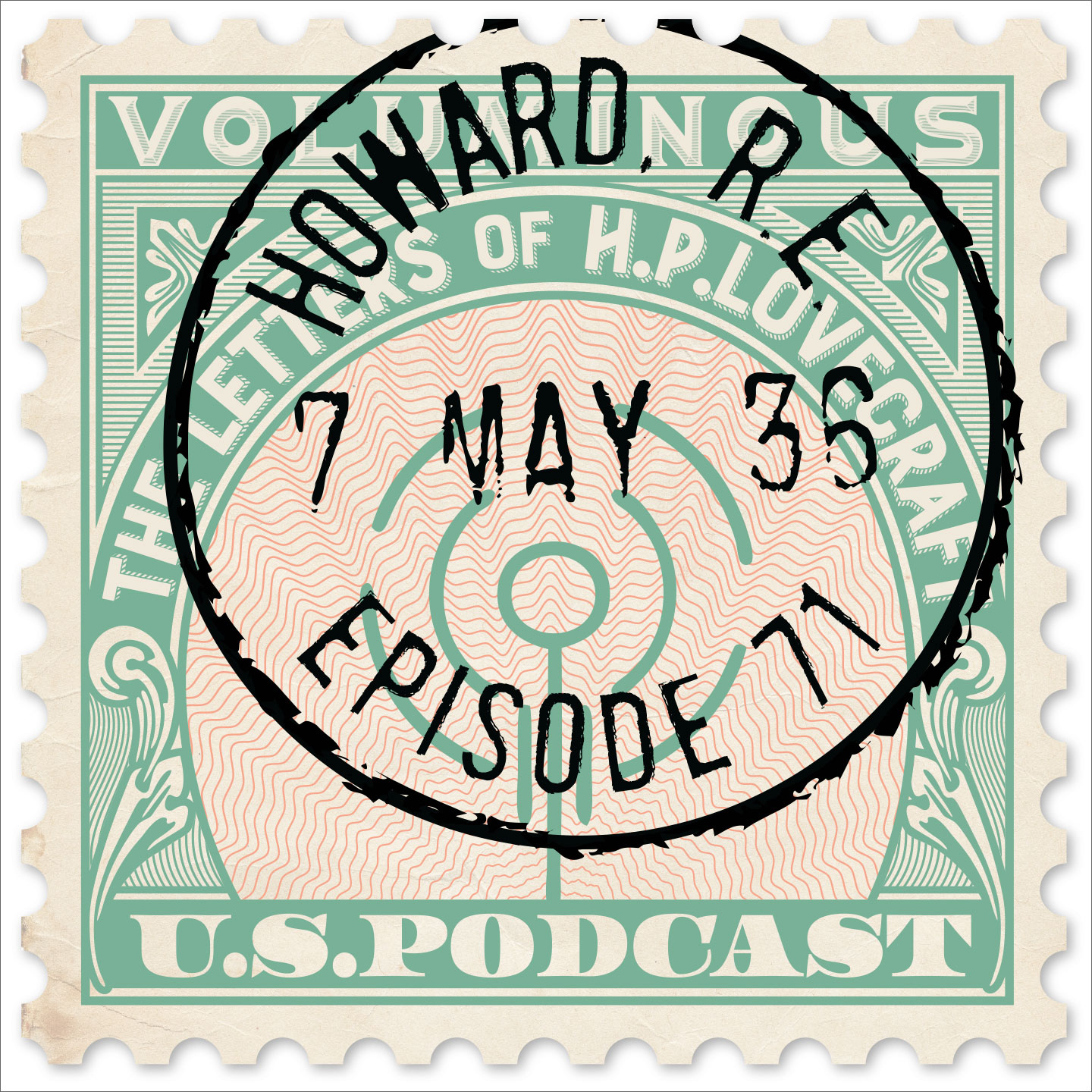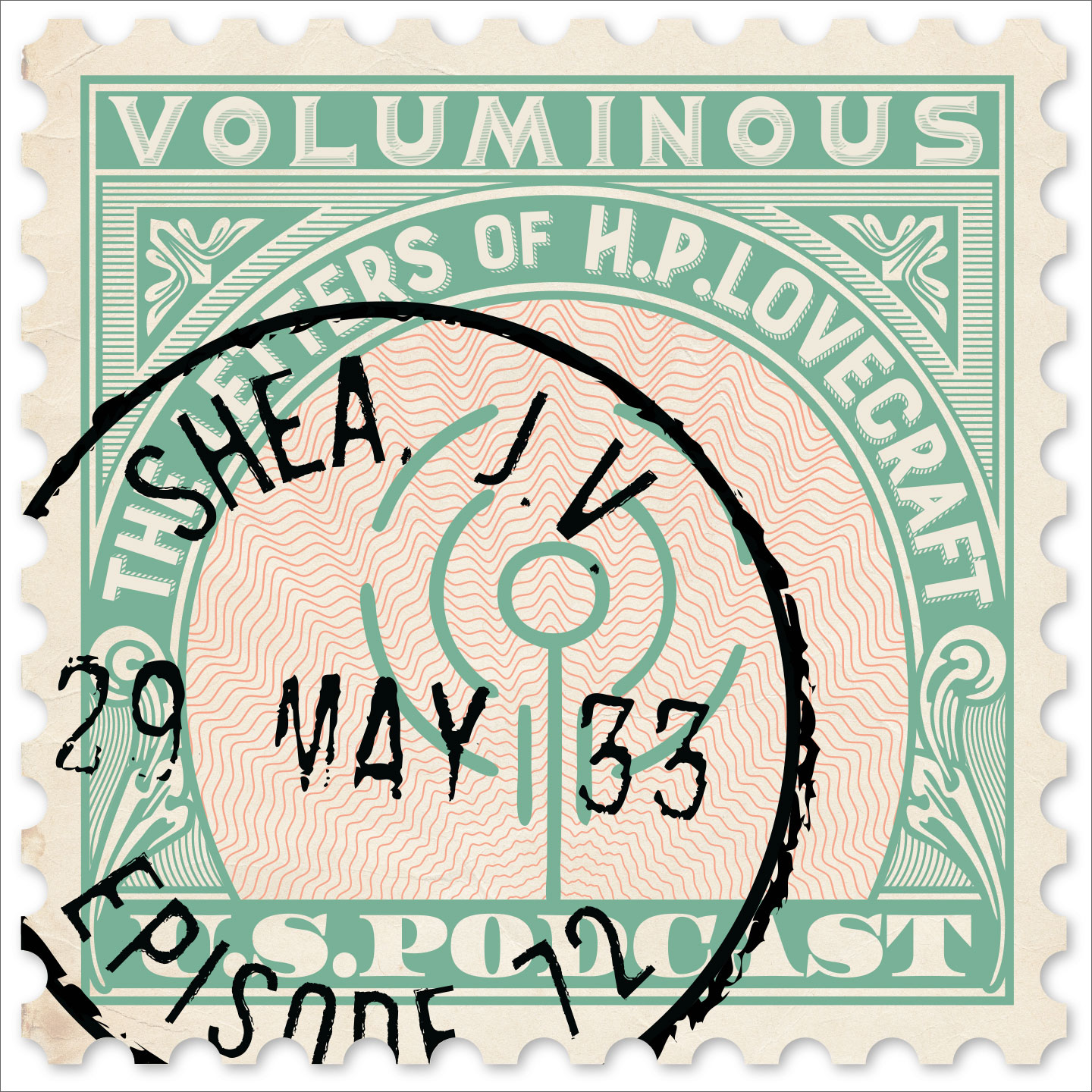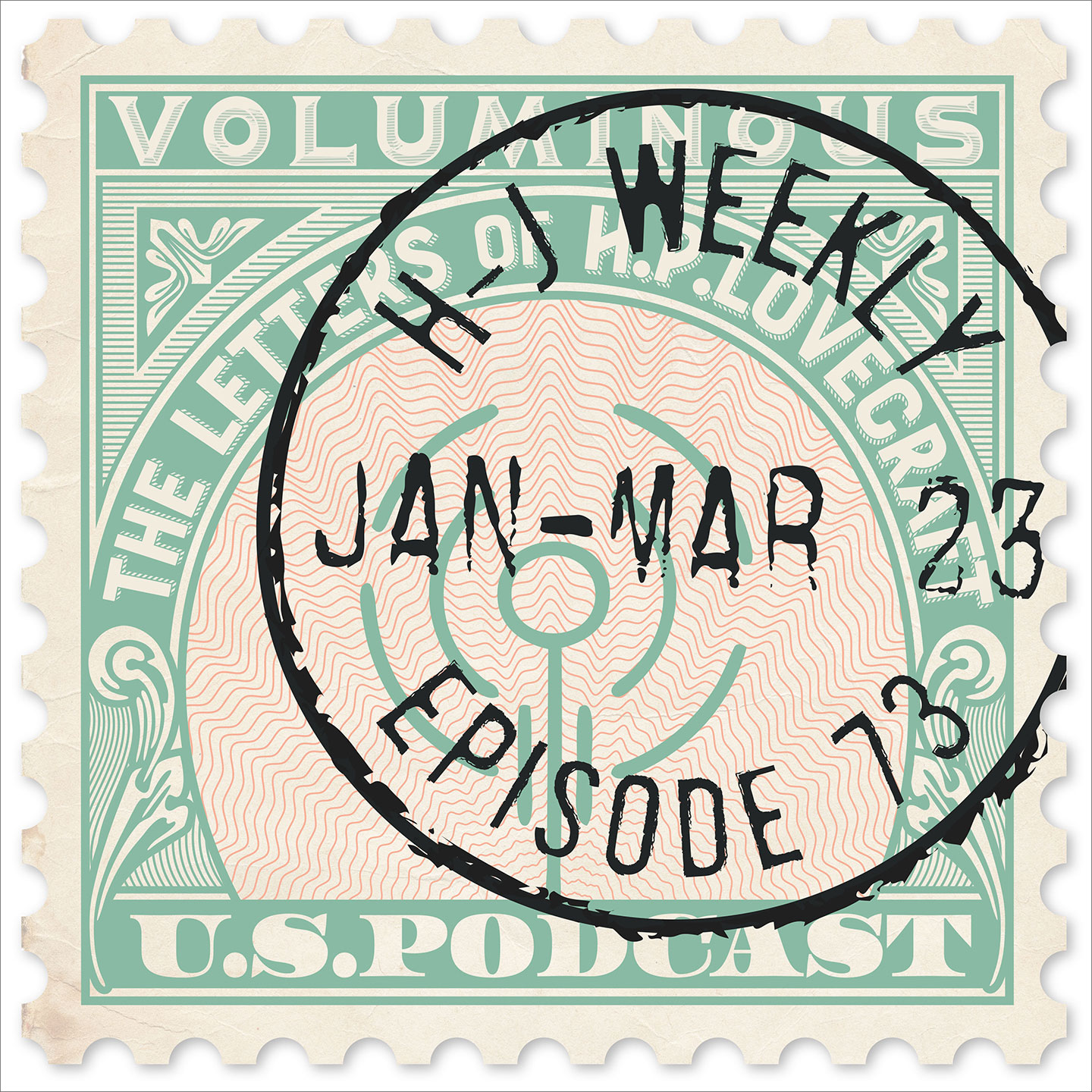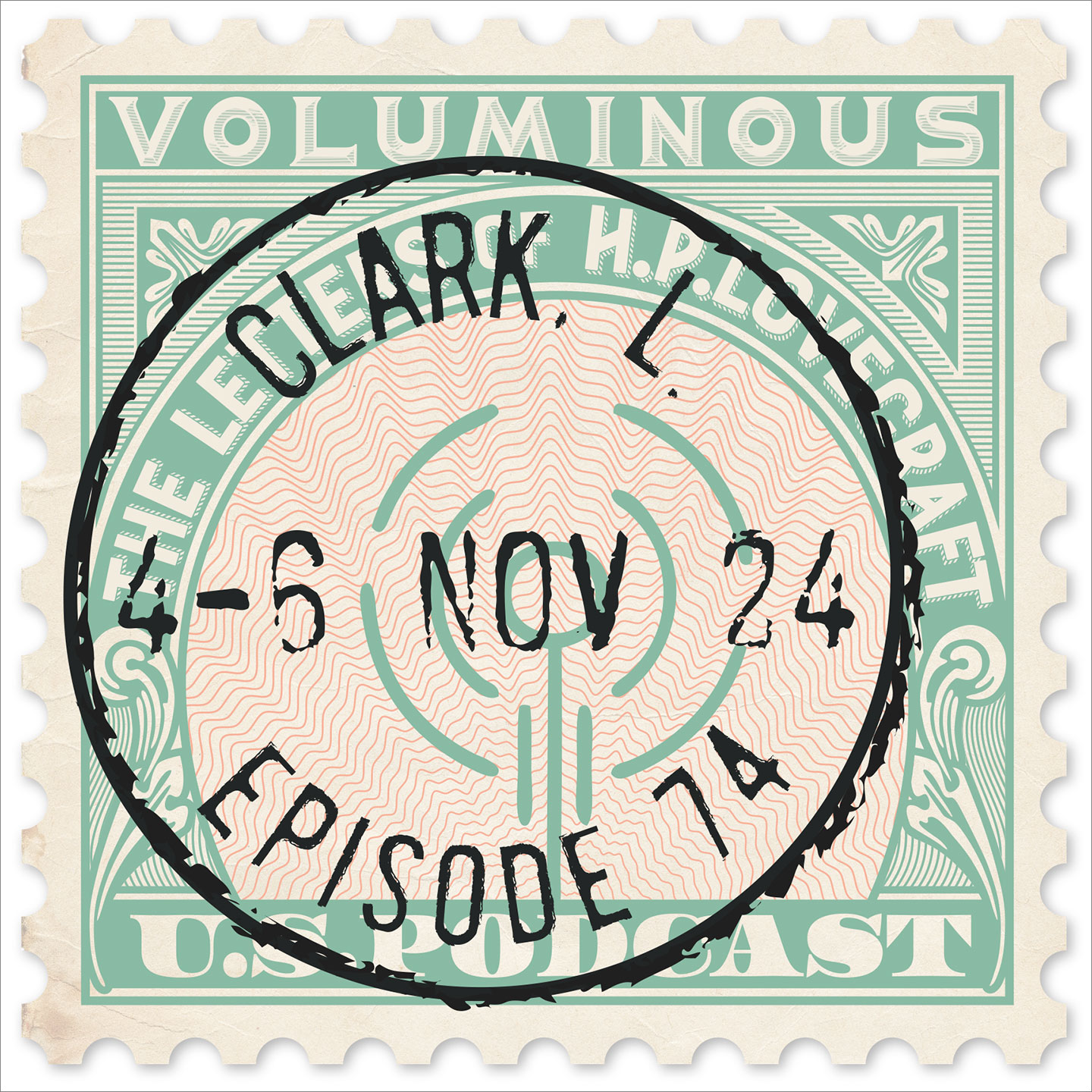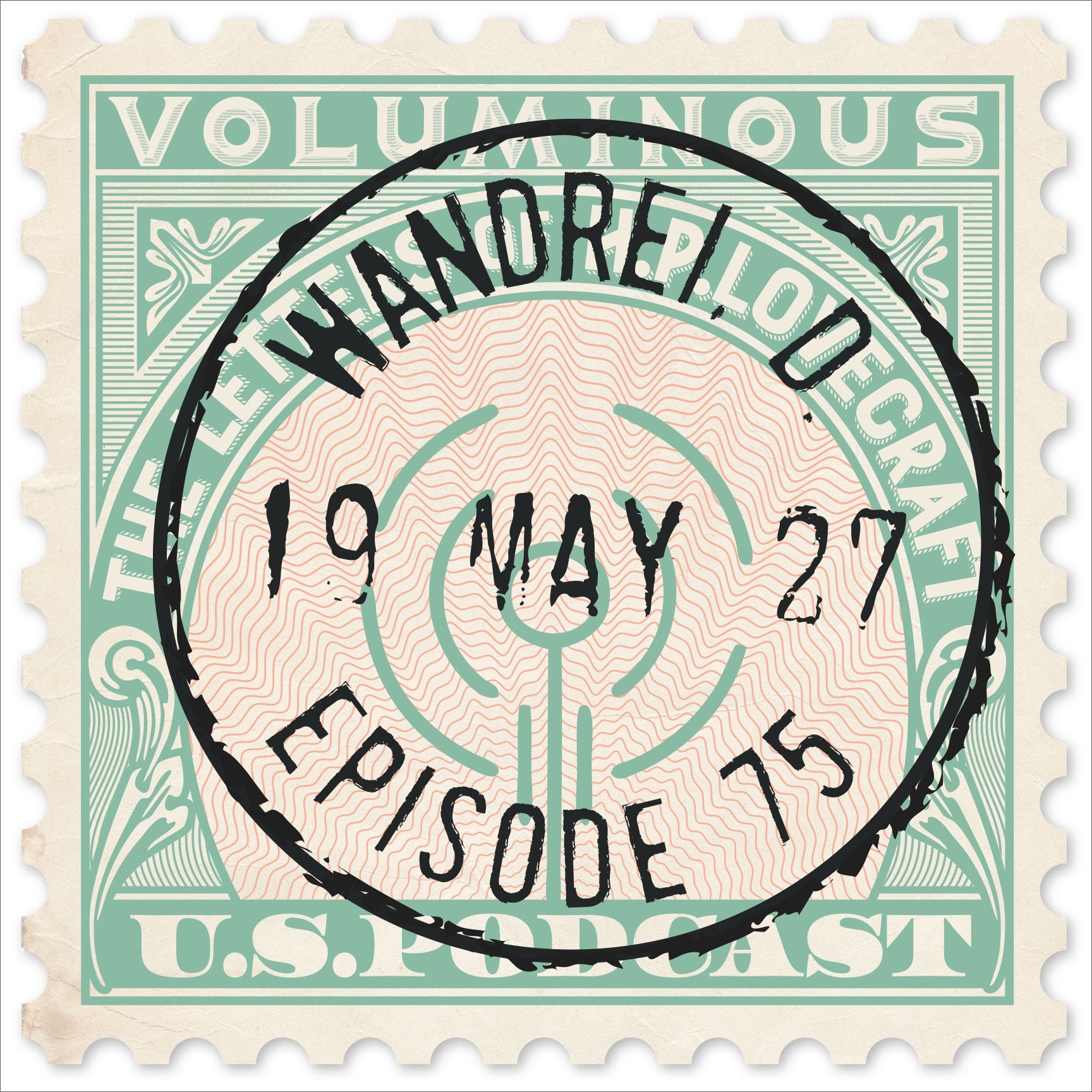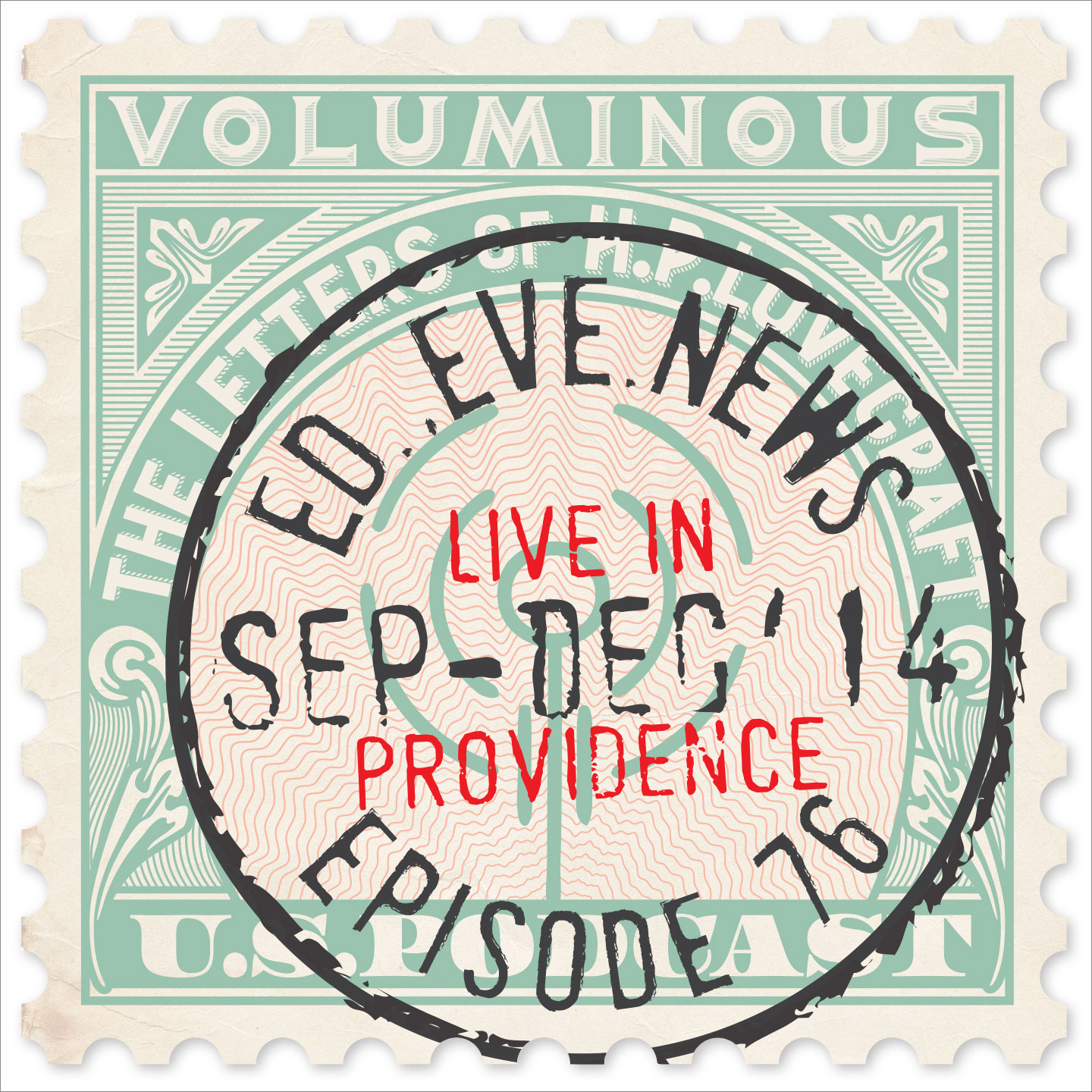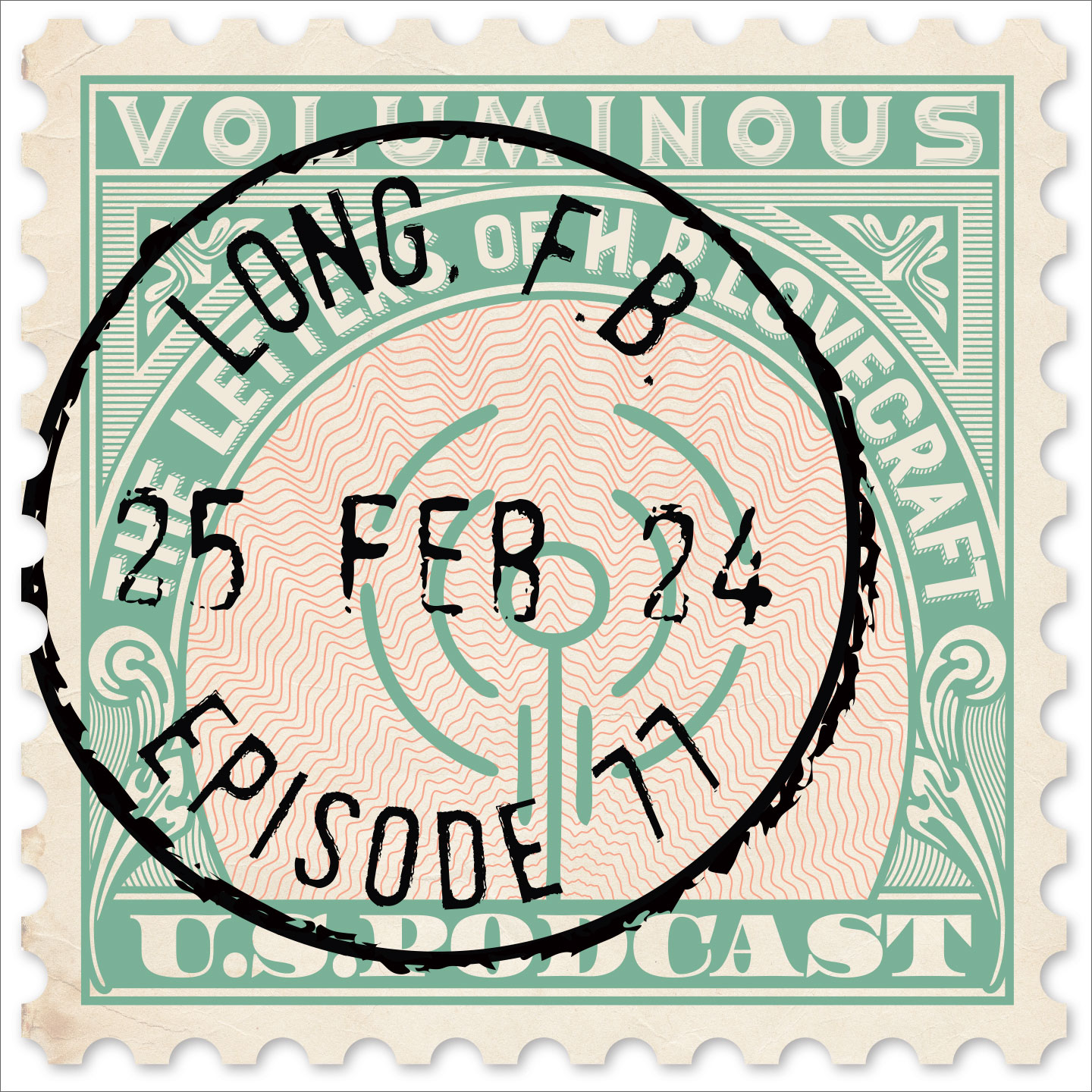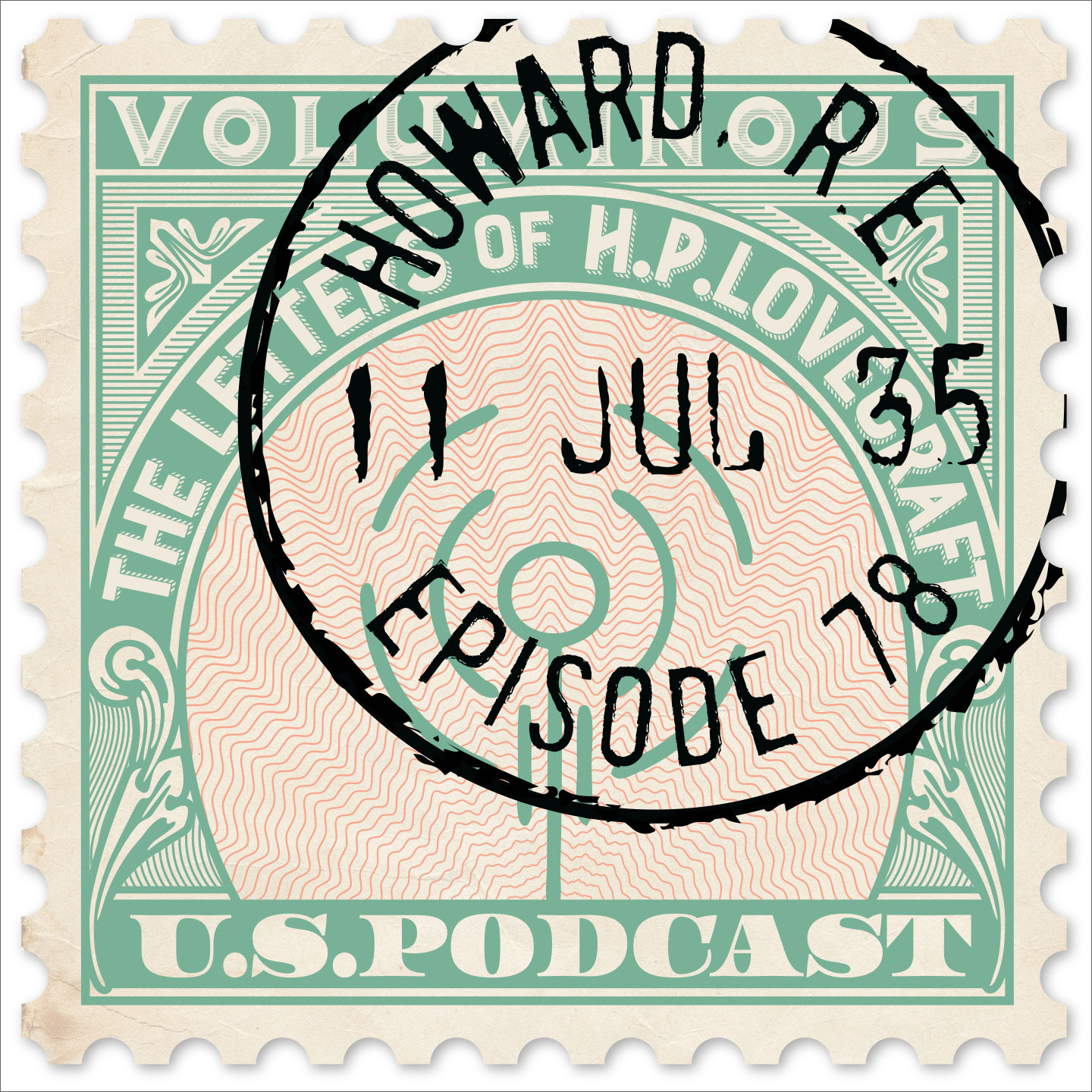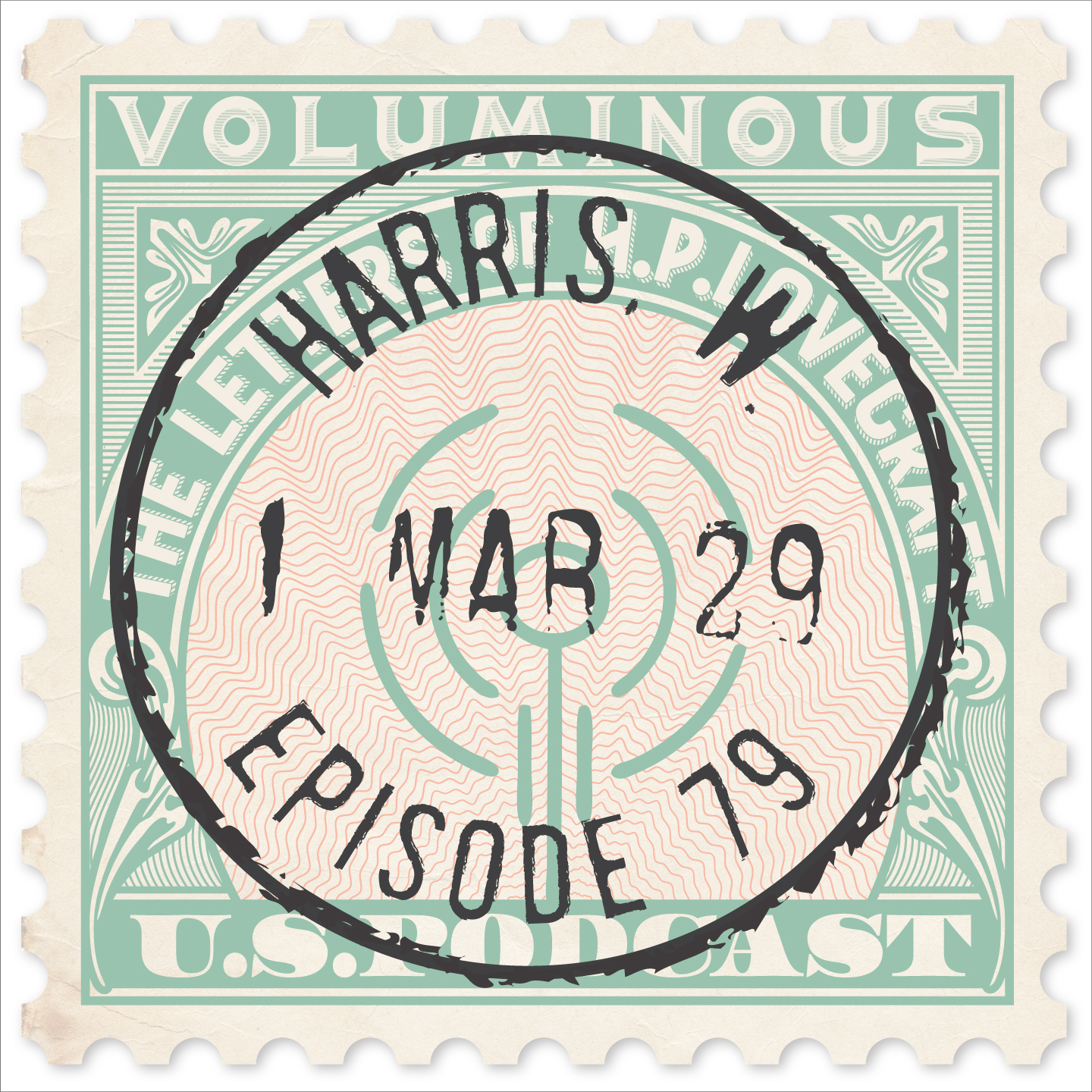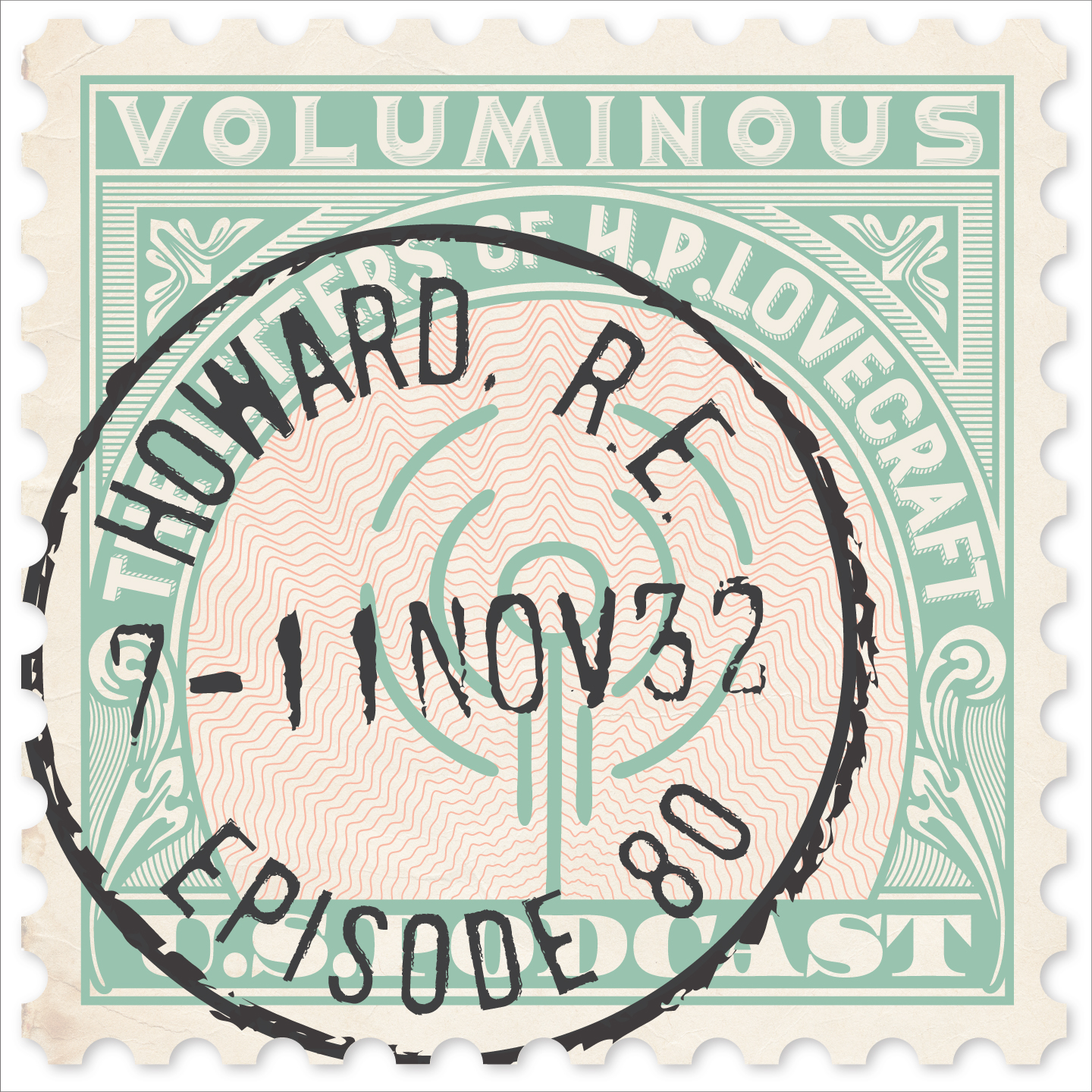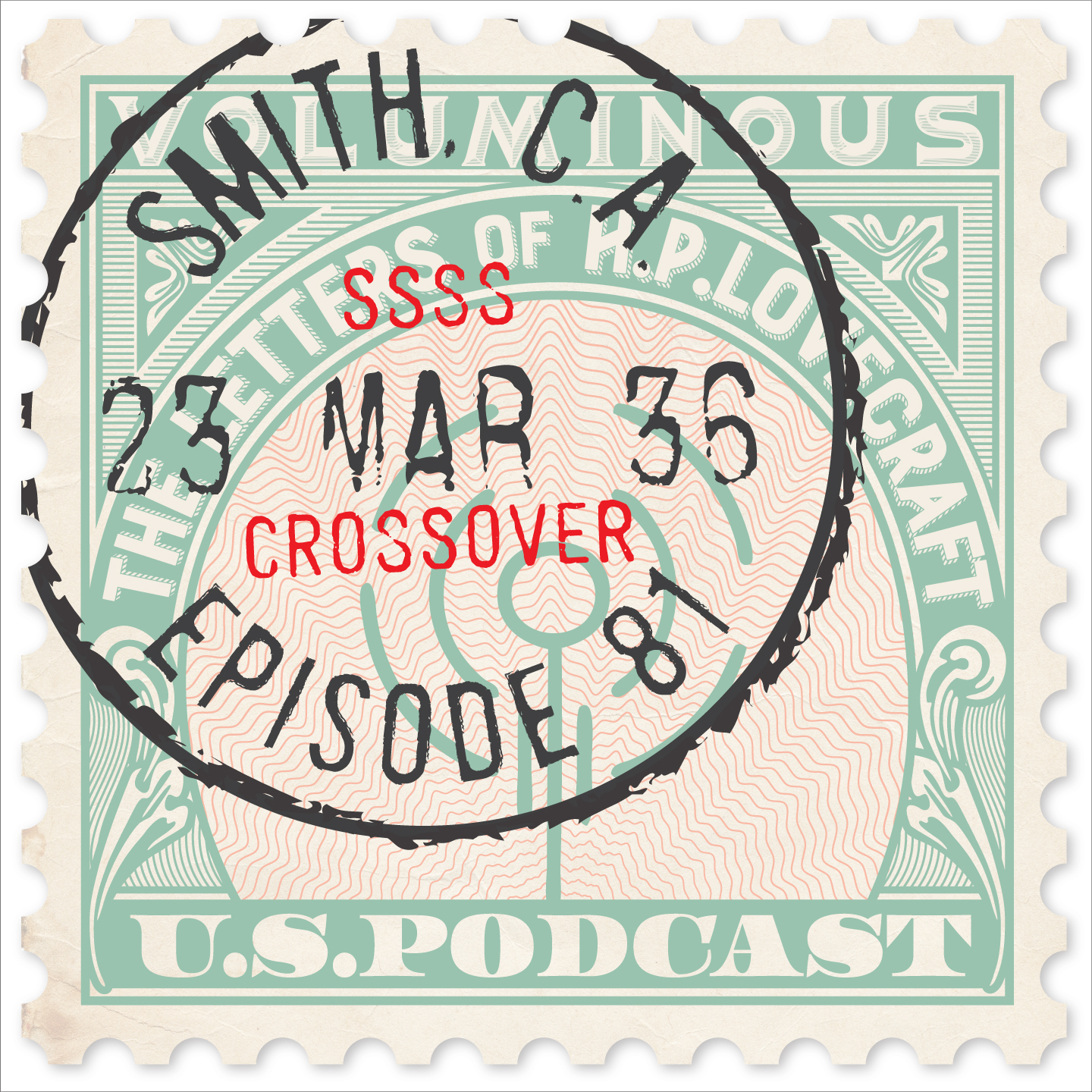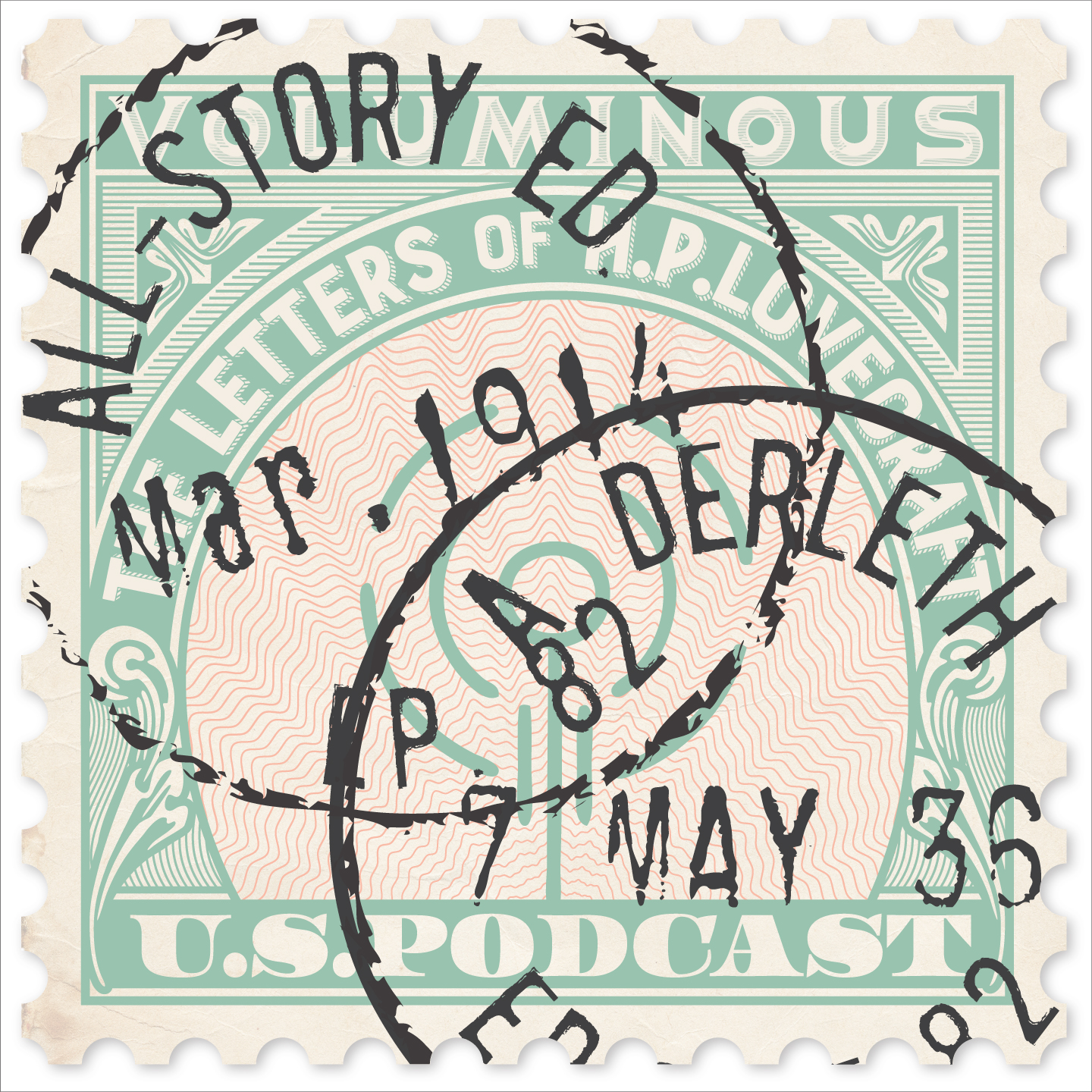
In addition to his classics of horror fiction, it is estimated that Lovecraft wrote 100,000 letters — or roughly 15 every day of his adult life — ranging from one-page diaries to seventy-page diatribes. Perhaps 20,000 of those letters have survived, in the hands of private collectors and at the John Hay Library in Providence.
In each episode of this podcast, we'll read one of these letters (or part of it) and then discuss it. In his letters HPL reveals an amazing breadth of knowledge of philosophy, science, history, literature, art and many other subjects, and forcefully asserts some highly considered opinions (some of which can be upsetting).
And of course his letters offer a fascinating window into his personal life and times. Although we've been working with Lovecraftian material for over 30 years, we still find interesting new things in his letters, and while we don't claim to be experts we look forward to sharing them with a wider audience.
Subscribe via iTunes, Stitcher or wherever you get podcasts! Or listen right here!
RSS Feed- Episode 59
- Posted April 4, 2021
An Antiquated Mummy from the Other Side
The surviving sections of a very long and shockingly timely letter to Catherine L. Moore, written during Lovecraft's final illness and just over a month before his death. Is this the fabled letter in which Lovecraft rejects his racist attitudes? No, but the letter's a doozy all the same, addressing art, politics, religion, the royal family and much more.
Music by Troy Sterling Nies. Thanks to Chris Lackey of The H.P. Lovecraft Literary Podcast for suggesting this one. Thanks again to Hippocampus Press for their book Letters to C.L.Moore and Others. This book also contains the letter from C.L. Moore to which HPL's is a response, and it sheds additional light and is well worth reading. To quote just one passage:
"The whole panorama of the background which your arguments cover is a little too big for me to grasp—perhaps too big for anyone to understand fully.... In fact, I am very little interested in the question except when confronted with such lucid and graphic explanations as yours. That is, of course, a wholly reprehensible attitude, but represents pretty well, I suppose, the outlook of the great majority. Very few of us have minds which, like yours, enclose the whole scope of the political-social situation and can look ahead past individuals. Most of us are like me, who have got to have money which can only be earned by daily work and who do not question the source of the salary so long as it's forthcoming. I can understand but not share your subtle scorn of the capitalist's parasite who, accepting the polluted gold as a means of providing bread and butter for dependents, feels no responsibility for the luckless majority whom the capitalistic system dooms beyond a mild regret that such things happen.... Most of us are so tied down with hostages to fortune that we have not even the desire to destroy the system which sustains us though we may recognize it as pernicious for the majority." —C.L. Moore to HPL, Dec. 11, 1936
This letter is absolutely loaded with so many specific references that we couldn't possibly touch on them all during the episode, or even here, but we'll highlight a few. He refers to some of his and Moore's friends by their nicknames: "Sultan Malik" is E. Hoffmann Price. "Little Whiskerando" is Robert H. Barlow. "Kid Sterling" is Kenneth Sterling. Below are works by a few of the numerous painters he mentions.
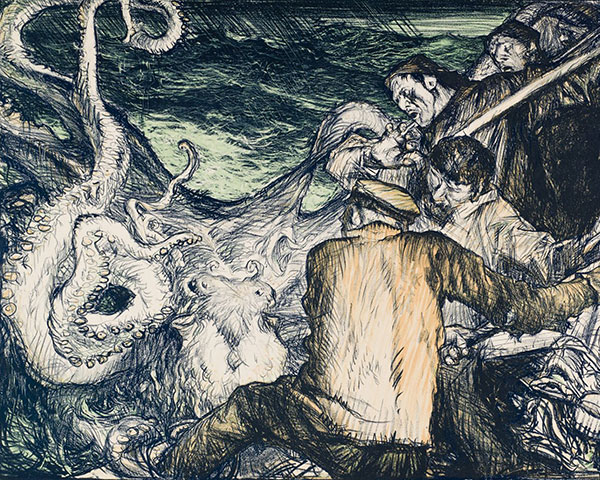

Top Left: "The Freedom of the Seas" (1917) by Frank Brangwyn. Brangwyn was a prolific Welsh autodidact artist.
Top Right: "Tibet. Himalayas" (1933) by Nicholas Roerich. Roerich painted vivid landscapes and lots of esoteric symbolism.
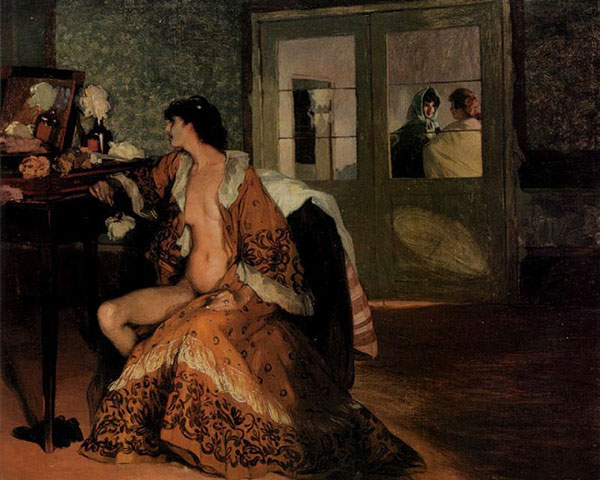
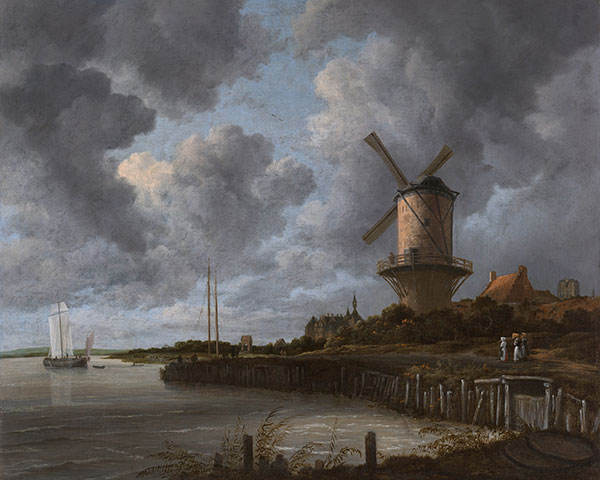
Bottom Left: "Celestina" (1906) by Ignacio Zuloaga. Zuloaga was a Spanish painter who did portraits and landscapes.
Right: "The Windmill at Wijk bij Duurstede" (1670) by Jacob van Ruisdael. Ruisdael was one of a whole family of Dutch landscape painters with similar names.
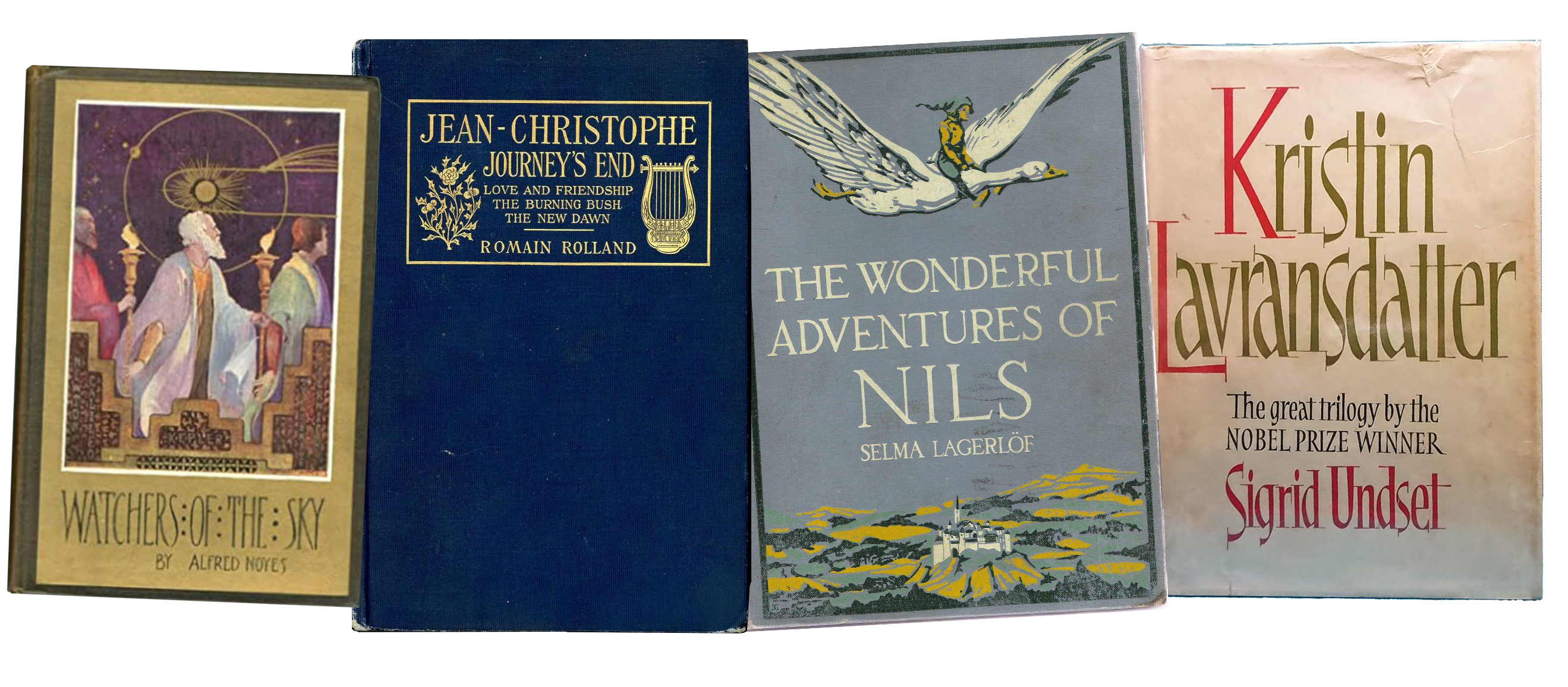 HPL mentions a number of writers he admired, some of whom are less well-known today. Alfred Noyes was a British poet and dramatist who wrote, among other things, an epic trilogy in verse called "The Torch Bearers", started in 1922 and concluded in 1930, covering the history of science and singing the praises of its pioneers. Romain Rolland was a French novelist who won the Nobel Prize for literature in 1915 "as a tribute to the lofty idealism of his literary production and to the sympathy and love of truth with which he has described different types of human beings". Selma Lagerlöf was a Swedish author, who in 1909 became the first woman to win the Nobel Prize for Literature. Sigrid Undset was a Norwegian novelist who won the Nobel Prize in 1922. Her most famous work was Kristin Lavransdatter, a trilogy set in medieval Norway told from the point of view of a woman from birth to death.
HPL mentions a number of writers he admired, some of whom are less well-known today. Alfred Noyes was a British poet and dramatist who wrote, among other things, an epic trilogy in verse called "The Torch Bearers", started in 1922 and concluded in 1930, covering the history of science and singing the praises of its pioneers. Romain Rolland was a French novelist who won the Nobel Prize for literature in 1915 "as a tribute to the lofty idealism of his literary production and to the sympathy and love of truth with which he has described different types of human beings". Selma Lagerlöf was a Swedish author, who in 1909 became the first woman to win the Nobel Prize for Literature. Sigrid Undset was a Norwegian novelist who won the Nobel Prize in 1922. Her most famous work was Kristin Lavransdatter, a trilogy set in medieval Norway told from the point of view of a woman from birth to death.
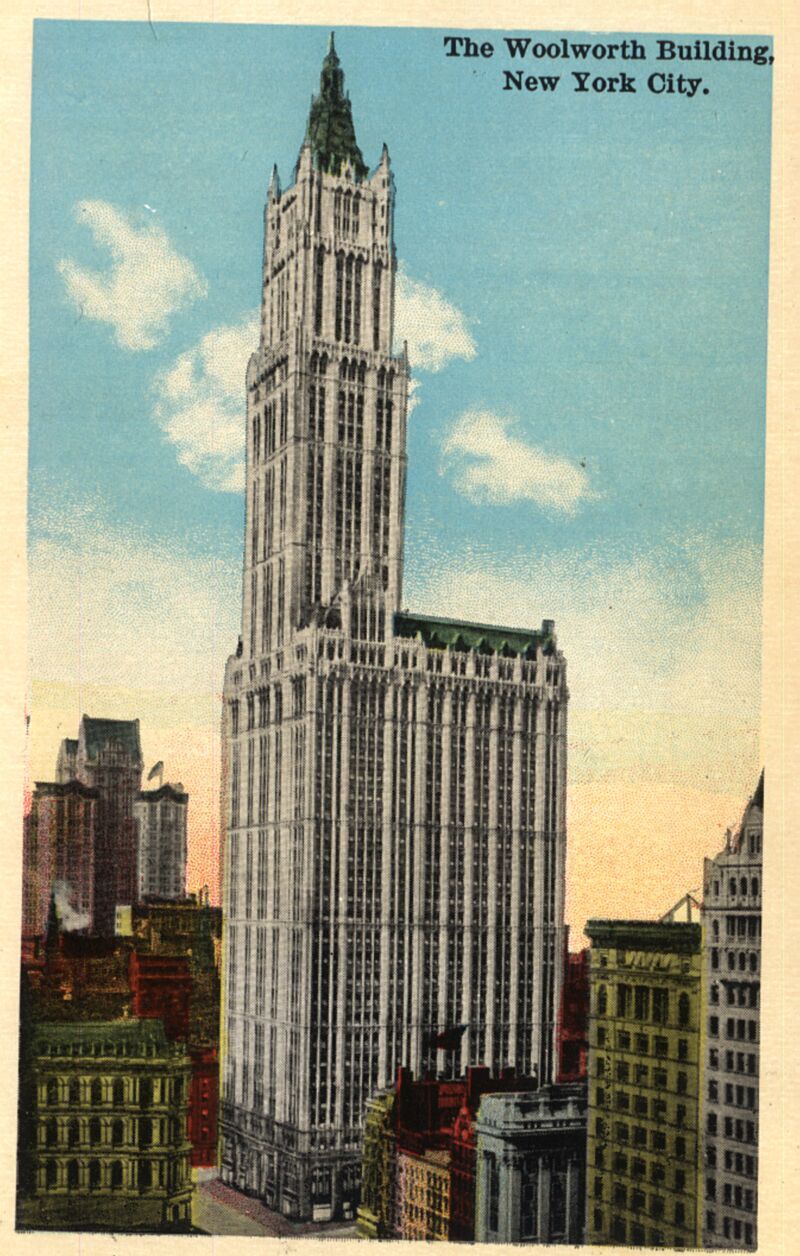 Lovecraft names a couple of contemporary architects he likes, including Cass Gilbert. Gilbert designed a number of landmarks, including the Woolworth Building in New York City, which was the tallest building in the world from 1913 to 1930, a number of state capitols, and, in 1936, the United States Supreme Court building.
Lovecraft names a couple of contemporary architects he likes, including Cass Gilbert. Gilbert designed a number of landmarks, including the Woolworth Building in New York City, which was the tallest building in the world from 1913 to 1930, a number of state capitols, and, in 1936, the United States Supreme Court building.
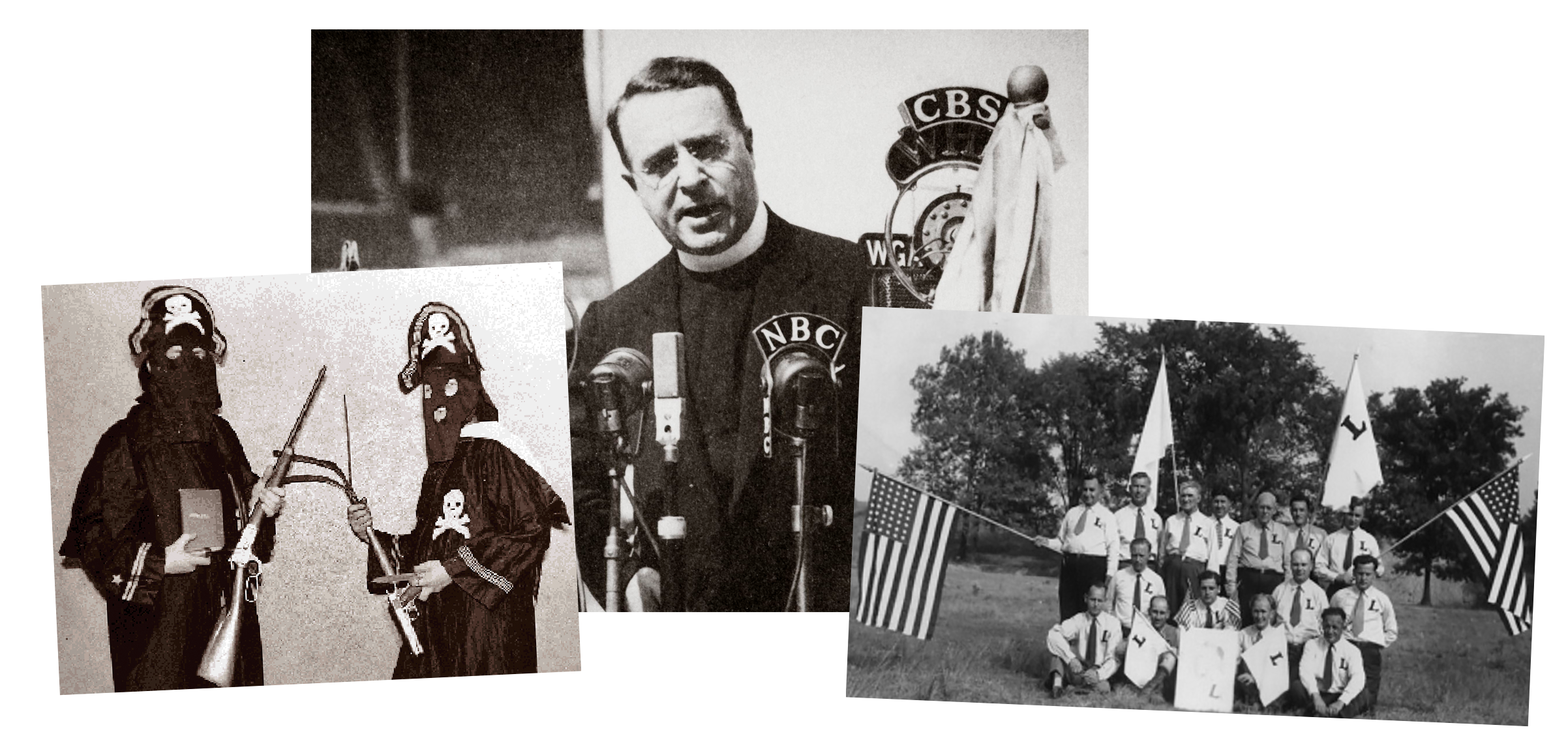 HPL mentions a number of right-wing speakers and groups with considerable disdain. "Coughlinism" refers to the preachings of Father Charles Coughlin, a populist Catholic priest who started out as a fan of FDR but grew increasingly antagonistic in his sermons which were broadcast widely on the radio. The Black Legion started as the paramilitary wing of the KKK, but then splintered off and became its own domestic terrorist organization, centered in Michigan, committing murder, arson, kidnapping, and the like. The Silver Shirts was the name given to members of the Silver Legion, a nationalist/fascist organization founded in North Carolina by William Pelley, a successful writer who believed in the occult and various antisemitic conspiracy theories. The Silver Shirts wore uniforms and waved flags with a big red "L" on them, which stood for "loyalty, liberation, and legion". Pelley actually tried running for president in 1936 as the candidate of the Christian Party—which he also founded—but after WWII started, he was convicted of sedition and treason and spent eight years in jail.
HPL mentions a number of right-wing speakers and groups with considerable disdain. "Coughlinism" refers to the preachings of Father Charles Coughlin, a populist Catholic priest who started out as a fan of FDR but grew increasingly antagonistic in his sermons which were broadcast widely on the radio. The Black Legion started as the paramilitary wing of the KKK, but then splintered off and became its own domestic terrorist organization, centered in Michigan, committing murder, arson, kidnapping, and the like. The Silver Shirts was the name given to members of the Silver Legion, a nationalist/fascist organization founded in North Carolina by William Pelley, a successful writer who believed in the occult and various antisemitic conspiracy theories. The Silver Shirts wore uniforms and waved flags with a big red "L" on them, which stood for "loyalty, liberation, and legion". Pelley actually tried running for president in 1936 as the candidate of the Christian Party—which he also founded—but after WWII started, he was convicted of sedition and treason and spent eight years in jail.
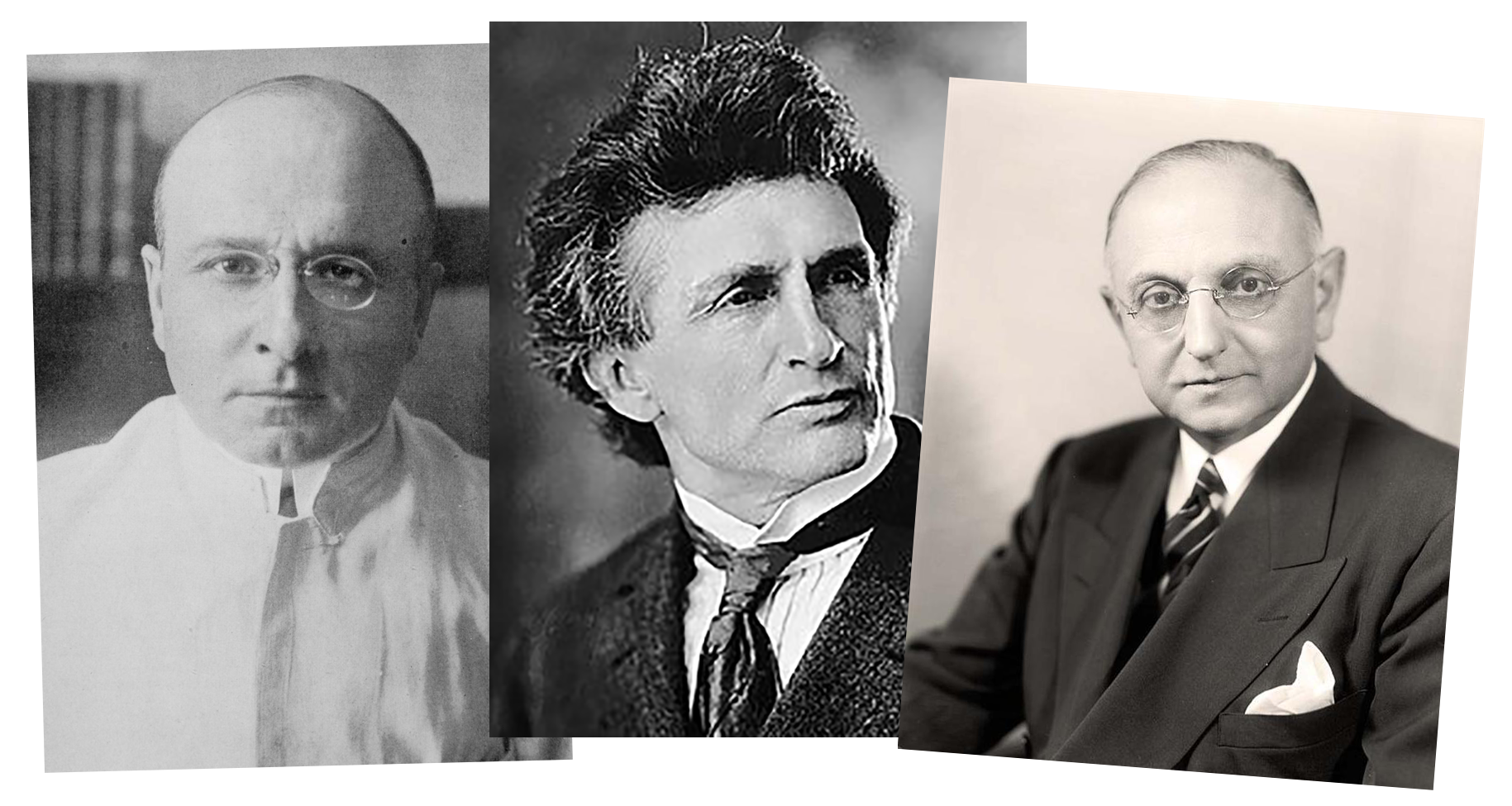 Lovecraft mentions "Dr. Carrel" in this letter, who is Alexis Carrel, a brilliant French vascular surgeon who invented numerous techniques still in use today and paved the way for organ transplants. He also had a touch of Herbert West about him, and allegedly kept a culture from an embryonic chicken heart alive in a petri dish for 20 years to prove that cells can live forever. Carrel was an advocate for both eugenics and euthanasia, and might well have been tried for collaborating with the Nazis but he died before he could be brought to court. HPL heaps scorn on "Macfadden rags", which is a reference to Bernarr Macfadden, another delusional, narcissistic media tycoon with self-aggrandizing political ambitions. He published numerous trashy pulp magazines, and a daily tabloid newspaper, The New York Evening Graphic, so sleazy that no library bothered to collect it so no copies are known to survive. Lovecraft also mentions the "Buchmanites", who were the followers of Frank Buchman, an American Lutheran minister who believed the world's problems were all caused by personal dishonesty, fear and selfishness, and that the only way to fix the world was for people to surrender to God's plan and publicly confess their sins. He marketed his ideas as "moral re-armament", and many of his teachings were later adopted by the founders of Alcoholics Anonymous.
Lovecraft mentions "Dr. Carrel" in this letter, who is Alexis Carrel, a brilliant French vascular surgeon who invented numerous techniques still in use today and paved the way for organ transplants. He also had a touch of Herbert West about him, and allegedly kept a culture from an embryonic chicken heart alive in a petri dish for 20 years to prove that cells can live forever. Carrel was an advocate for both eugenics and euthanasia, and might well have been tried for collaborating with the Nazis but he died before he could be brought to court. HPL heaps scorn on "Macfadden rags", which is a reference to Bernarr Macfadden, another delusional, narcissistic media tycoon with self-aggrandizing political ambitions. He published numerous trashy pulp magazines, and a daily tabloid newspaper, The New York Evening Graphic, so sleazy that no library bothered to collect it so no copies are known to survive. Lovecraft also mentions the "Buchmanites", who were the followers of Frank Buchman, an American Lutheran minister who believed the world's problems were all caused by personal dishonesty, fear and selfishness, and that the only way to fix the world was for people to surrender to God's plan and publicly confess their sins. He marketed his ideas as "moral re-armament", and many of his teachings were later adopted by the founders of Alcoholics Anonymous.
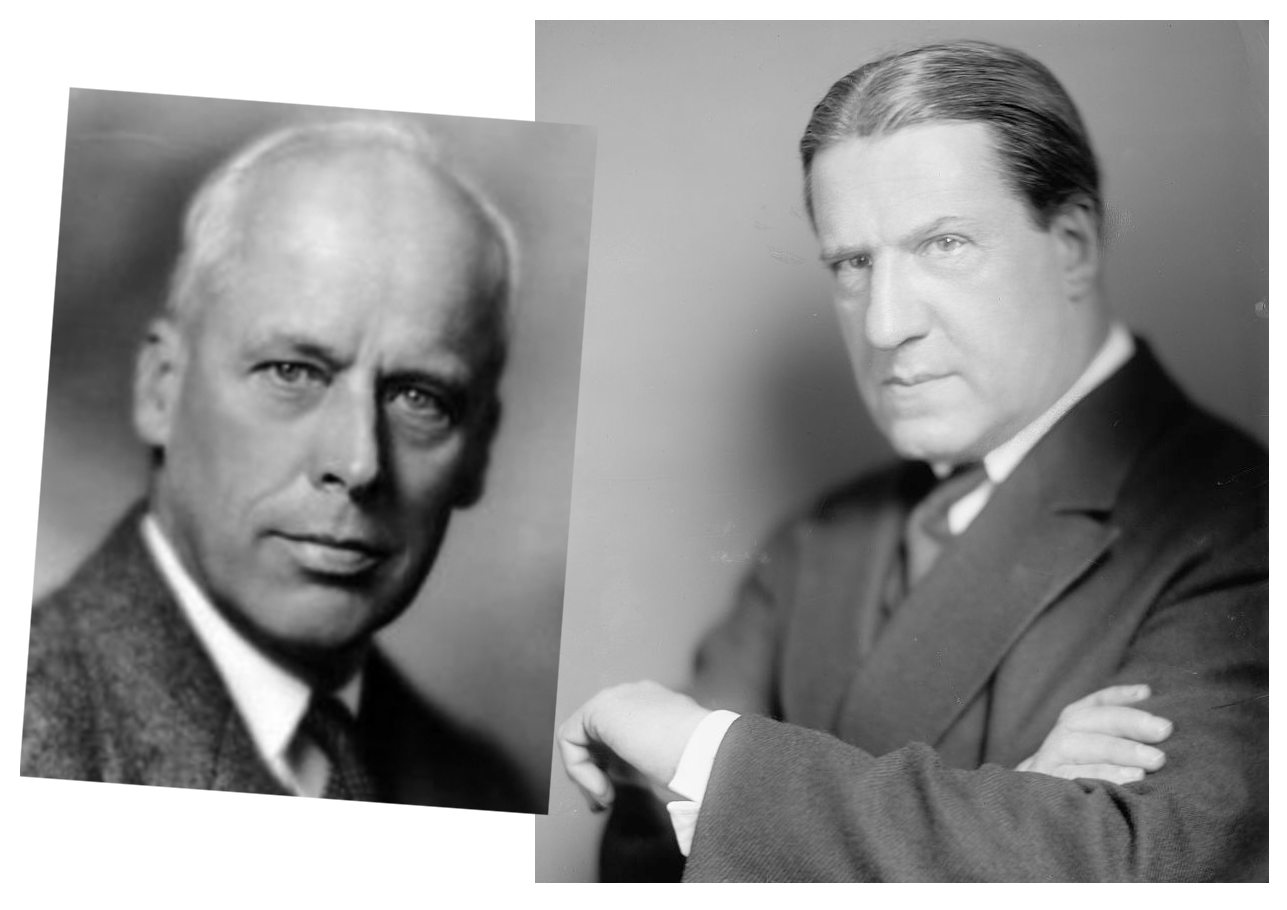 HPL mentions more favorably a number of left-wing figures in this letter, including Corliss Lamont, who was one of the directors of the ACLU in the '30s and was very friendly toward the Soviet Union without ever actually becoming an outright Communist. He also describes his approval of Rabbi Stephen Wise, one of the most prominent Jewish thinkers in the US at the time. He was a founding member of the NAACP, tried to organize boycotts of Nazi Germany before WWII, and was a good friend of Albert Einstein's.
HPL mentions more favorably a number of left-wing figures in this letter, including Corliss Lamont, who was one of the directors of the ACLU in the '30s and was very friendly toward the Soviet Union without ever actually becoming an outright Communist. He also describes his approval of Rabbi Stephen Wise, one of the most prominent Jewish thinkers in the US at the time. He was a founding member of the NAACP, tried to organize boycotts of Nazi Germany before WWII, and was a good friend of Albert Einstein's.
Below you can watch the last movie HPL ever saw, Winterset. It is based on a play by Maxwell Anderson, one of the dramatists Lovecraft thought was particularly good. They tacked on a happy ending for the movie which HPL objected to: the play does not have one. You can also hear the abdication speech of King Edward VIII, whose departure from the throne HPL thought was regrettable.
